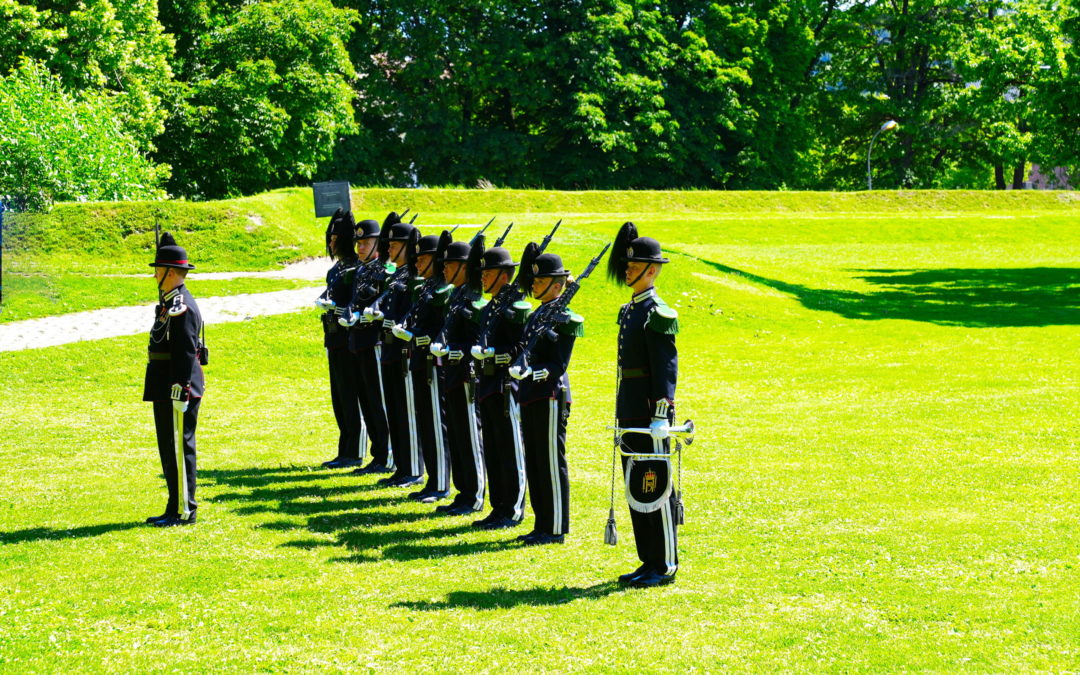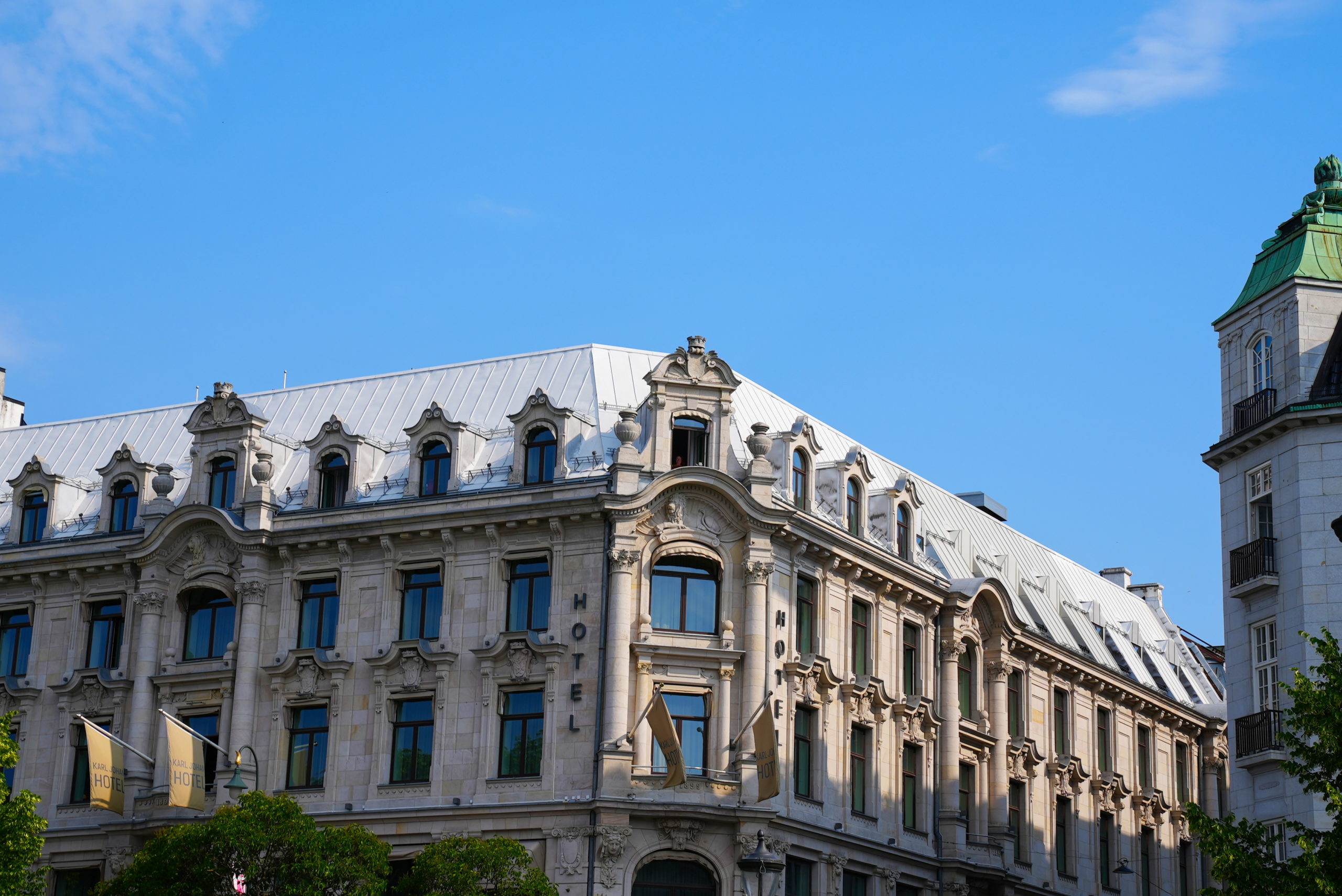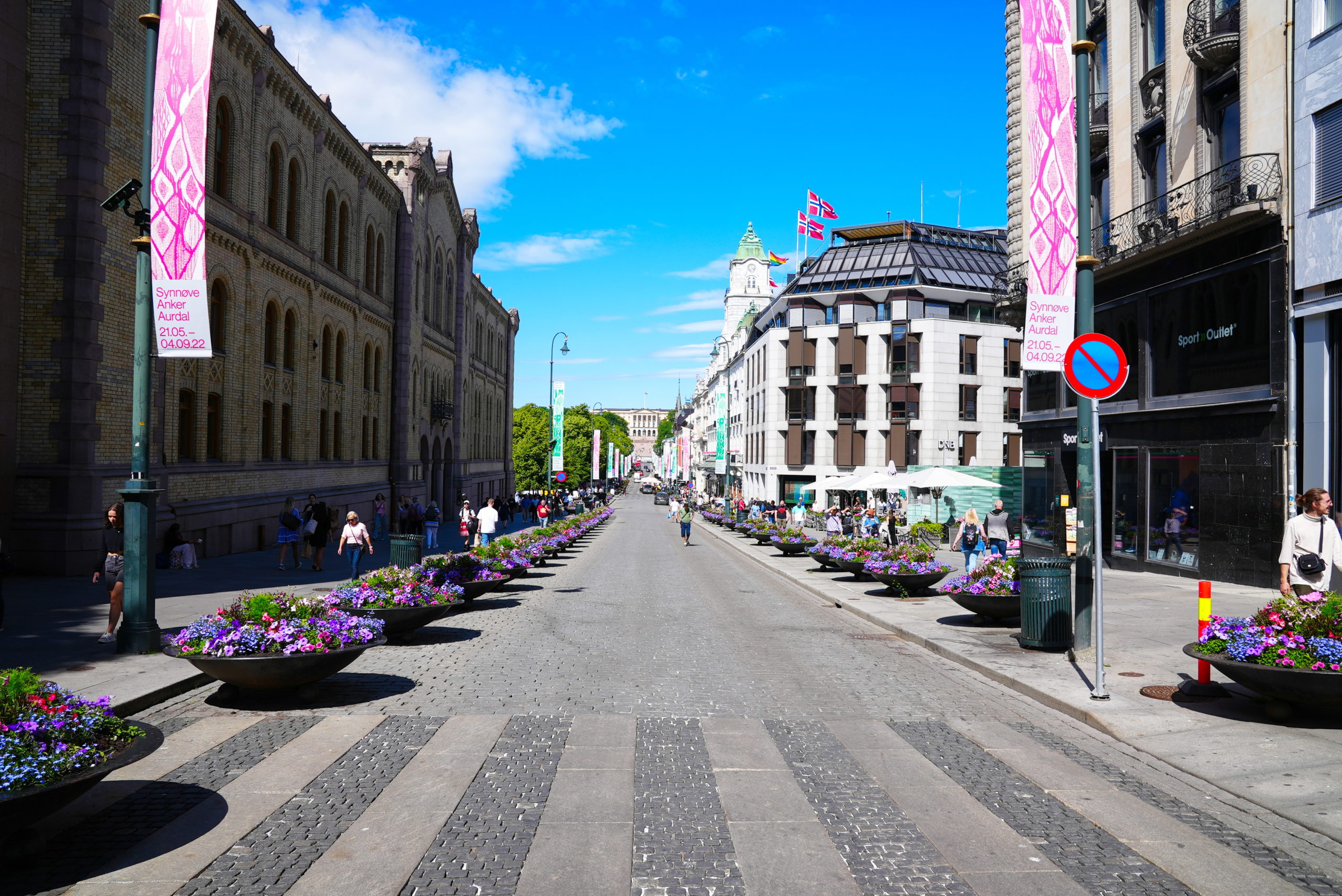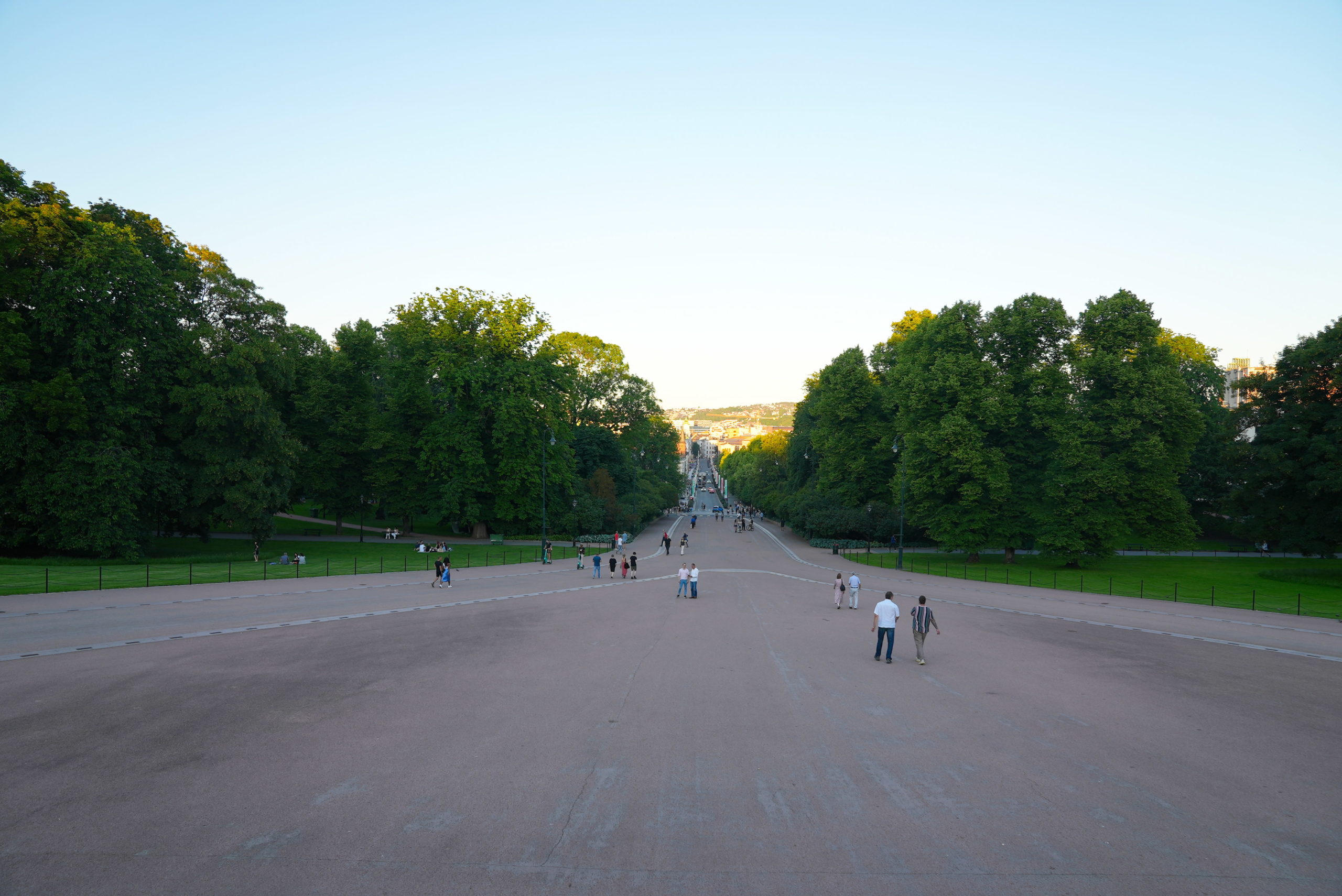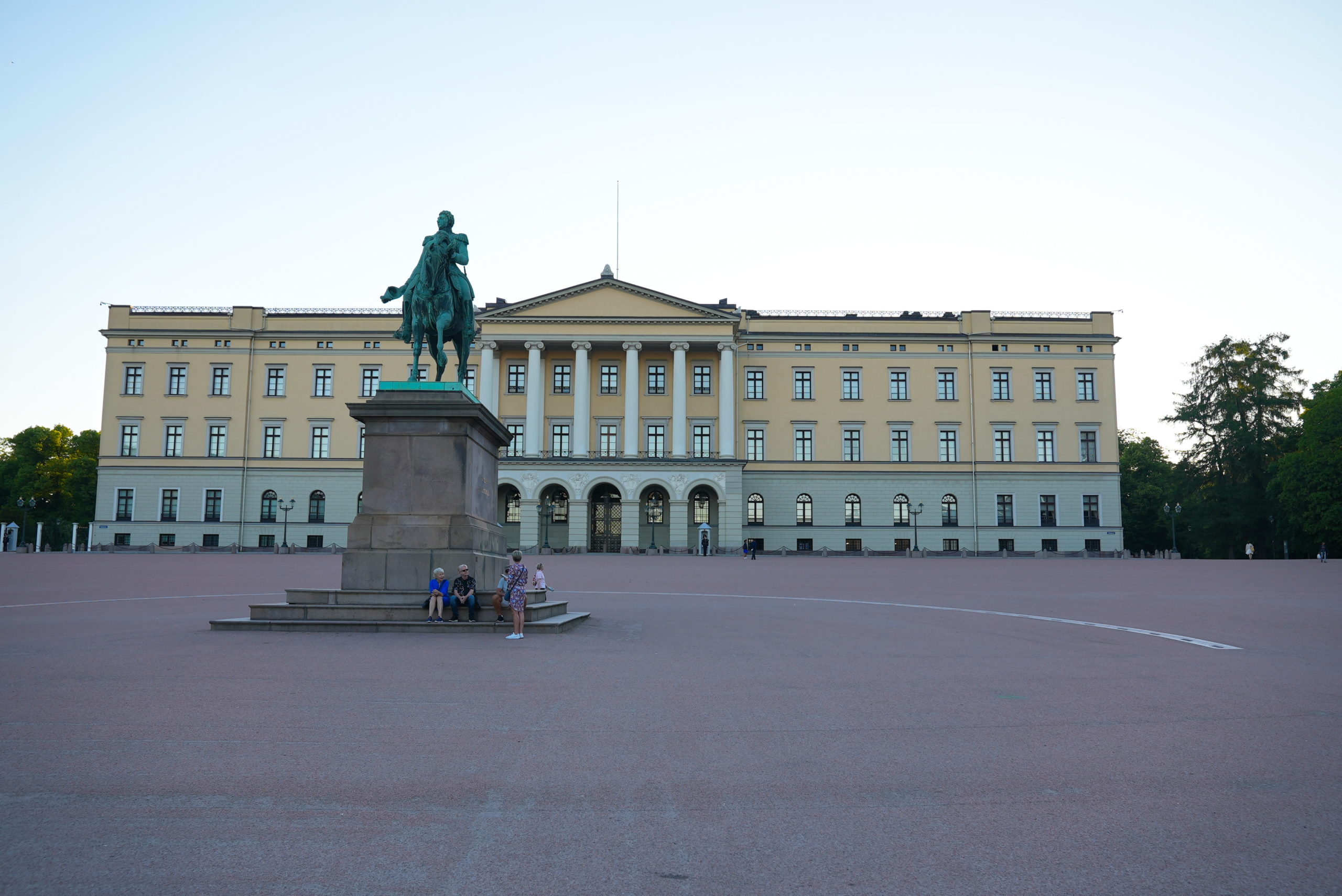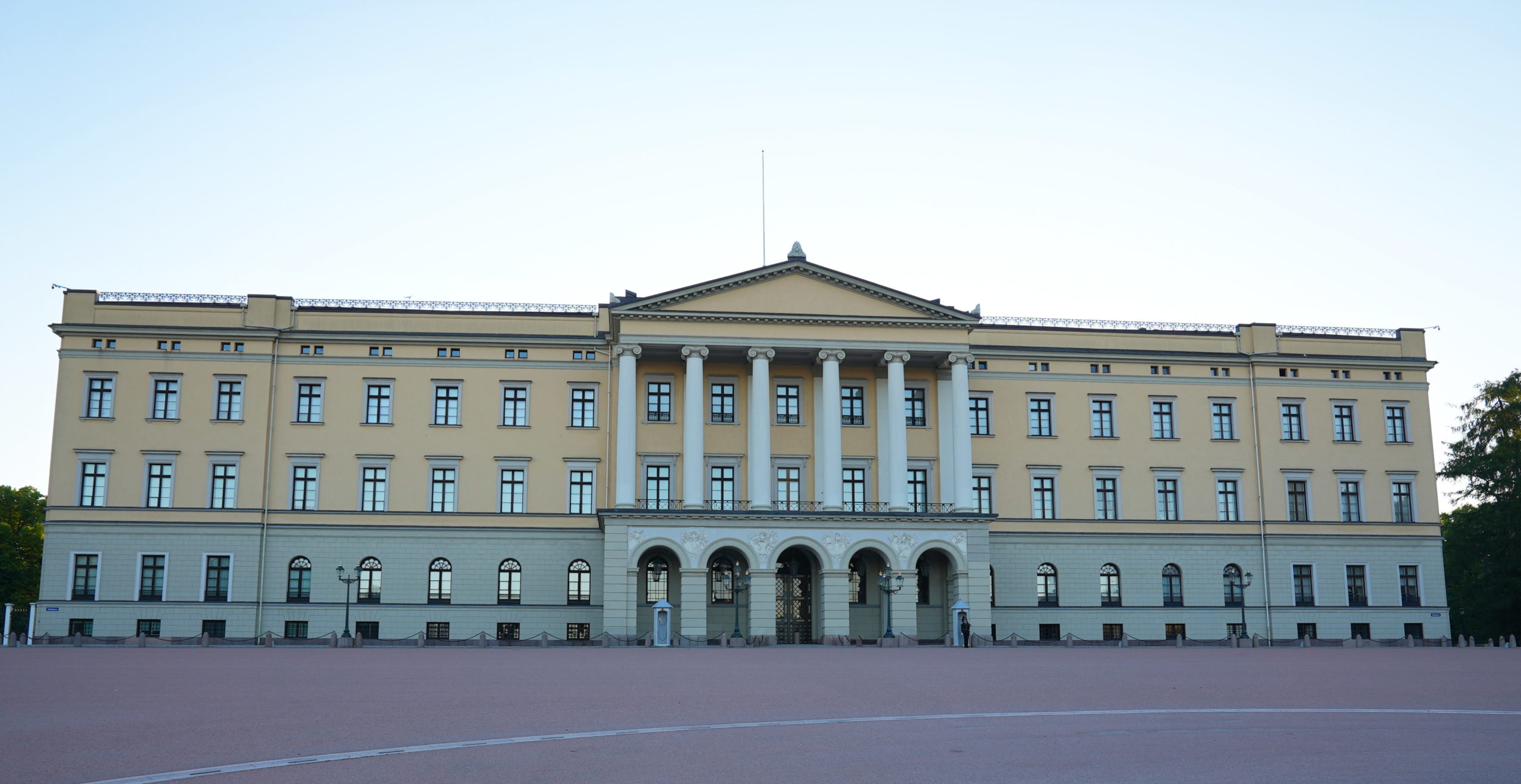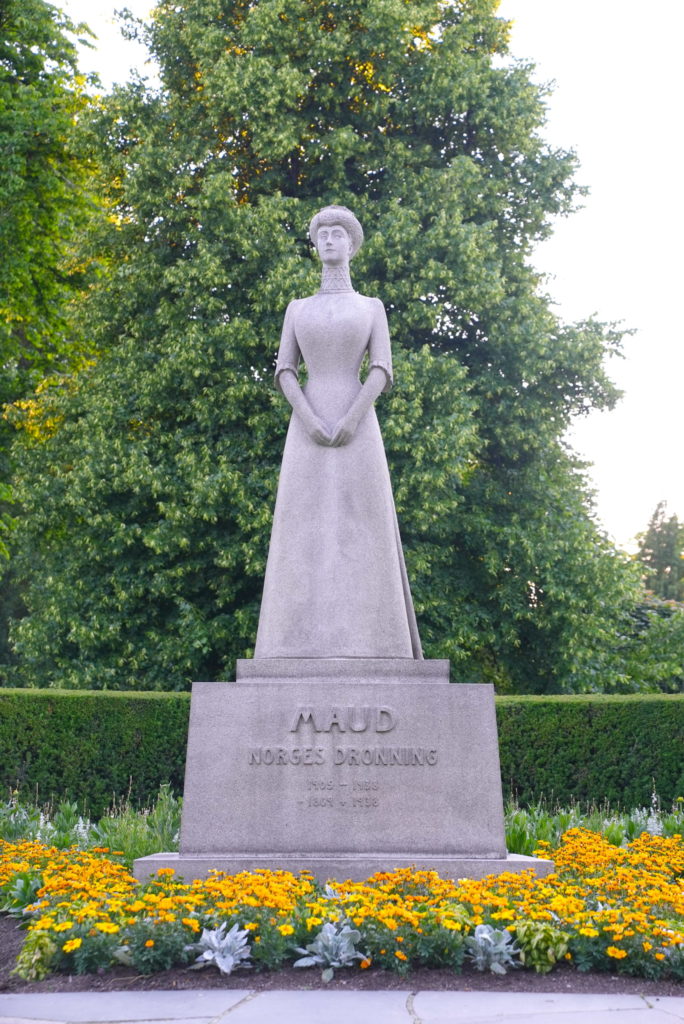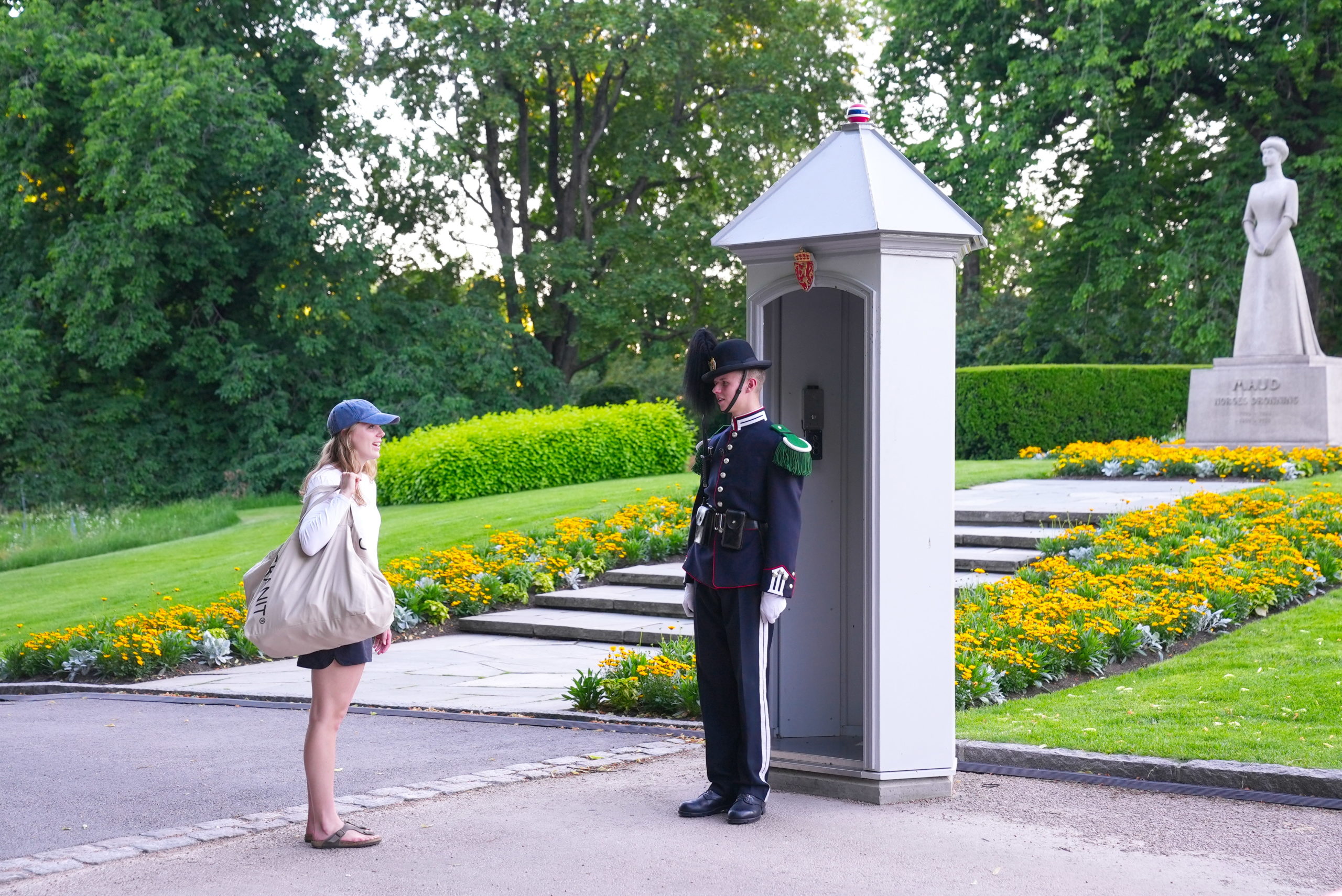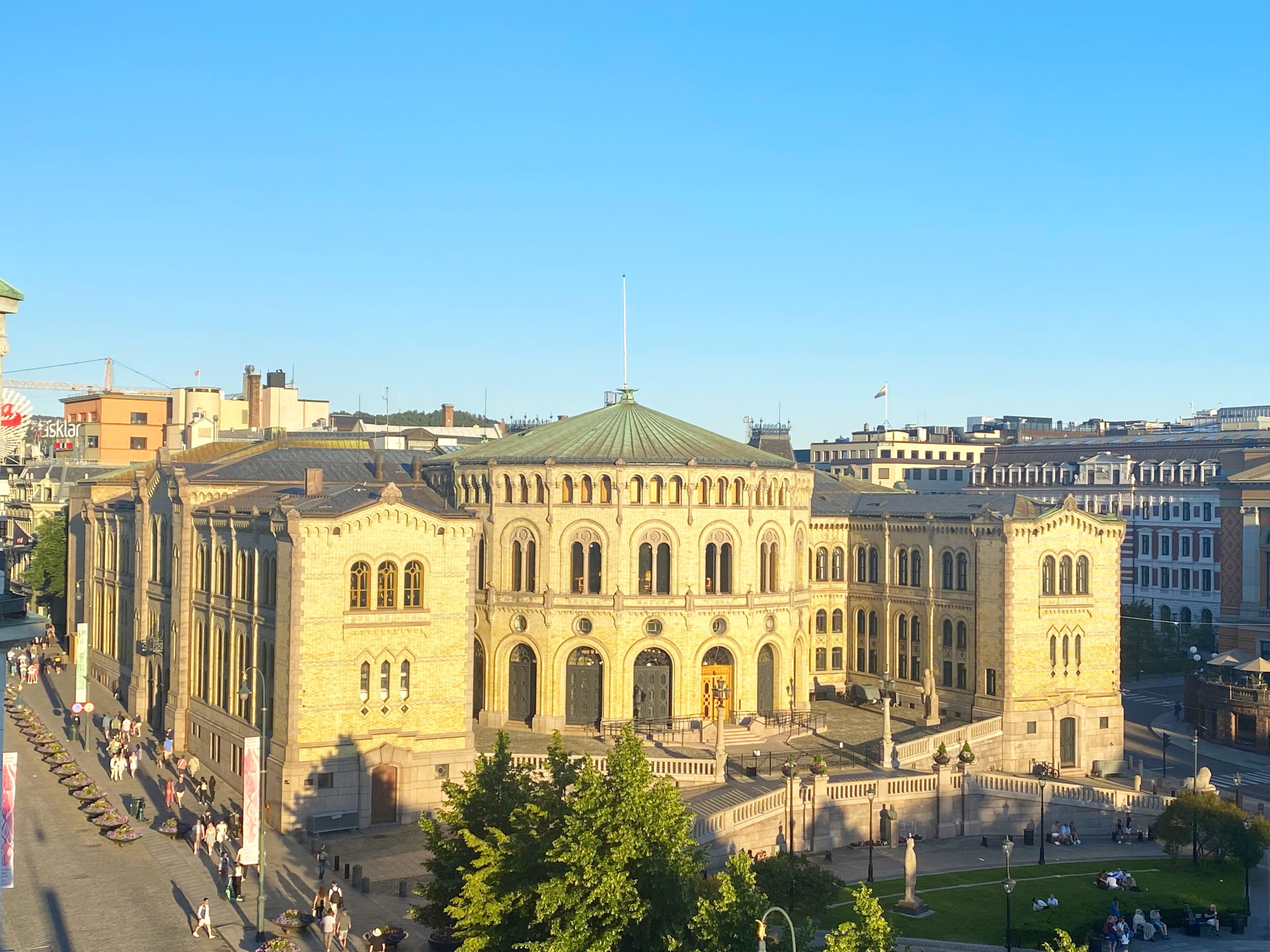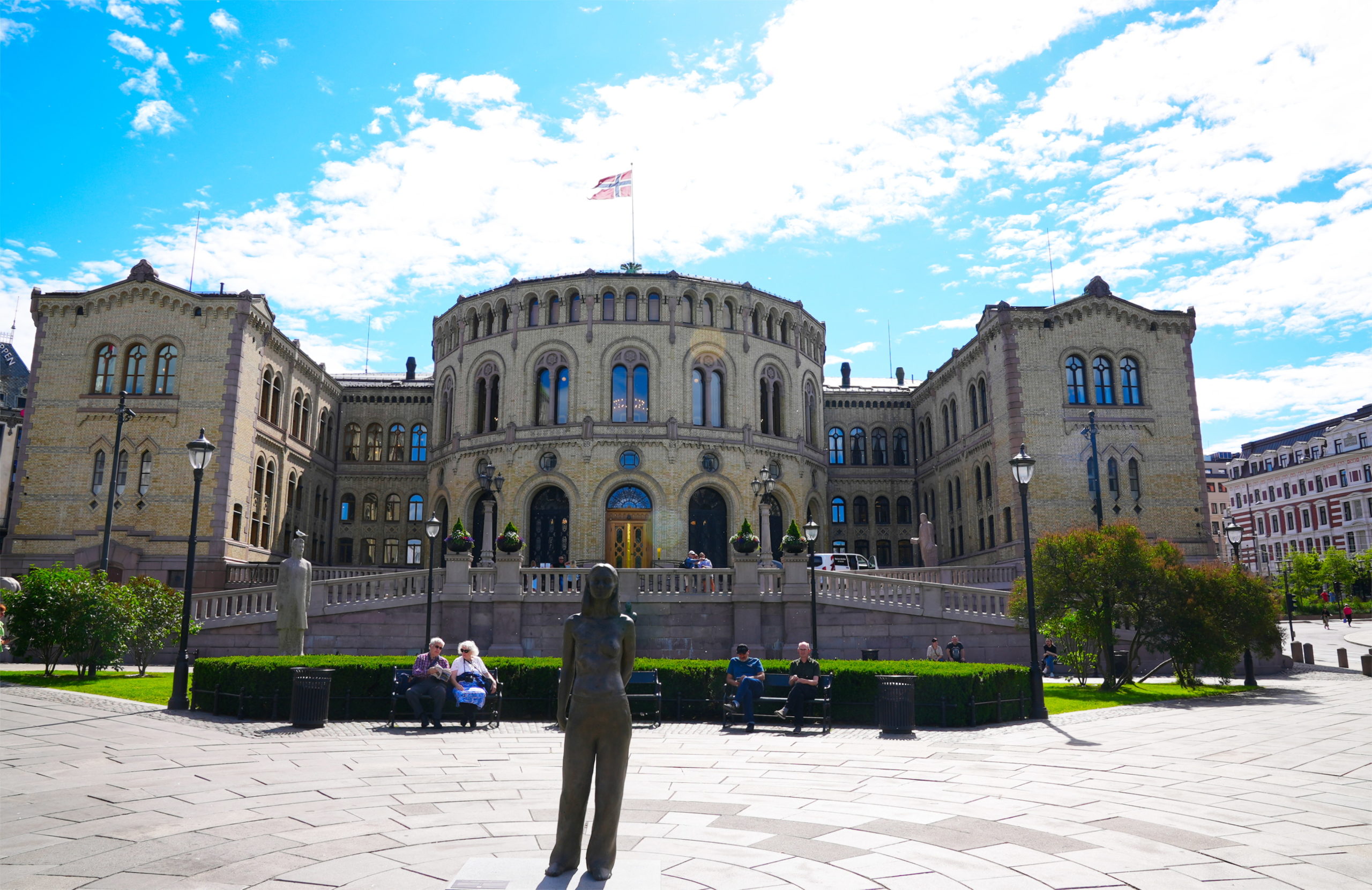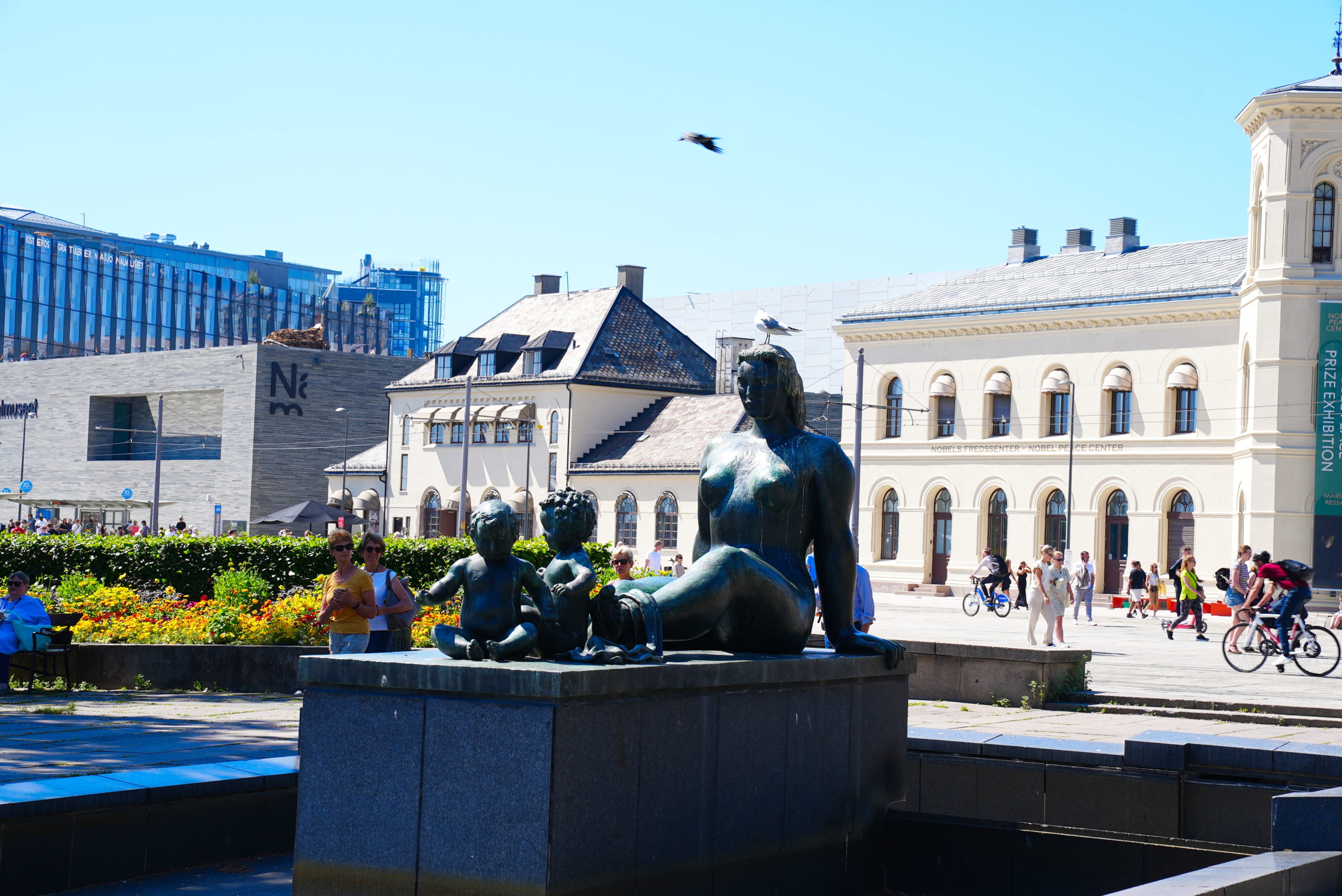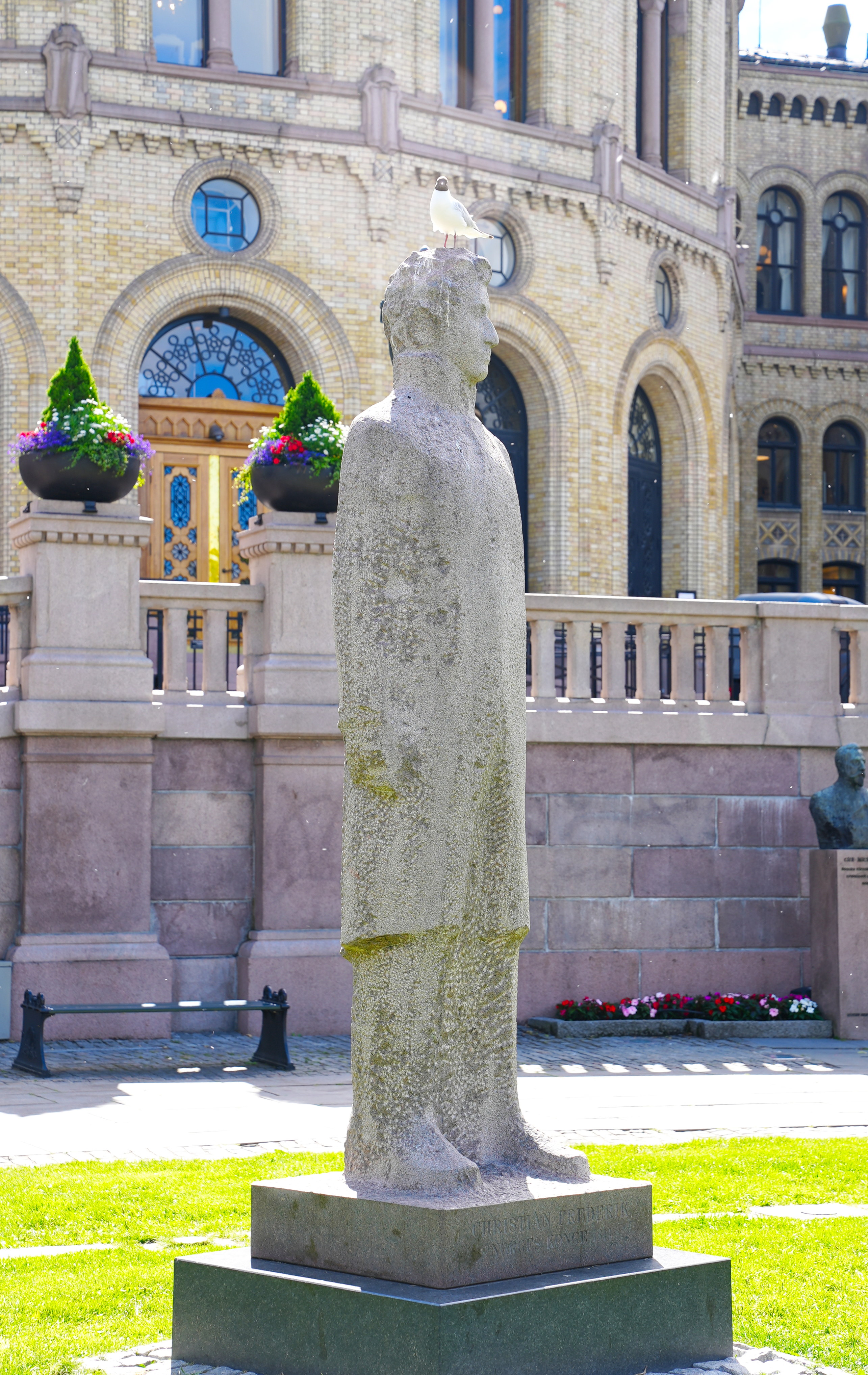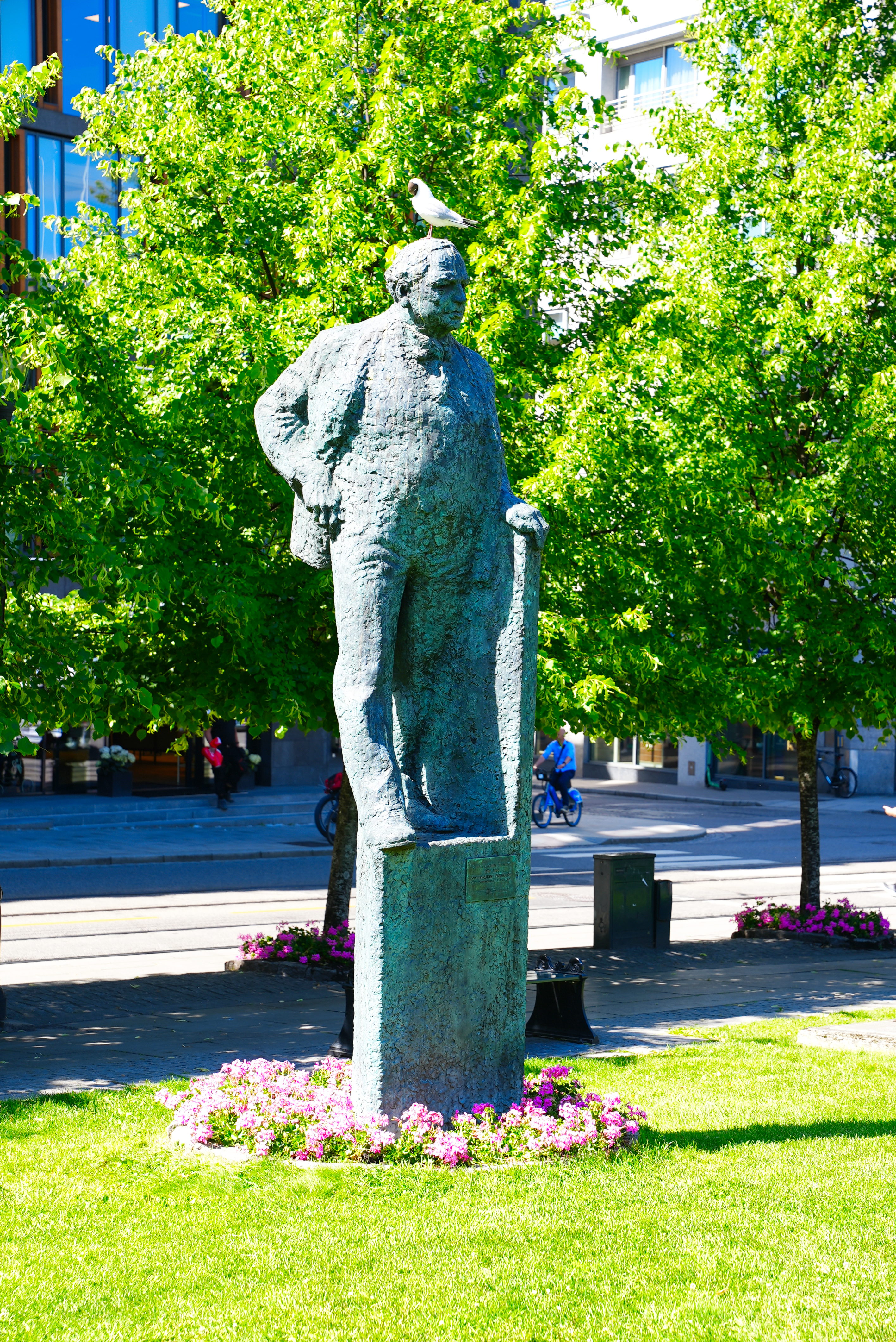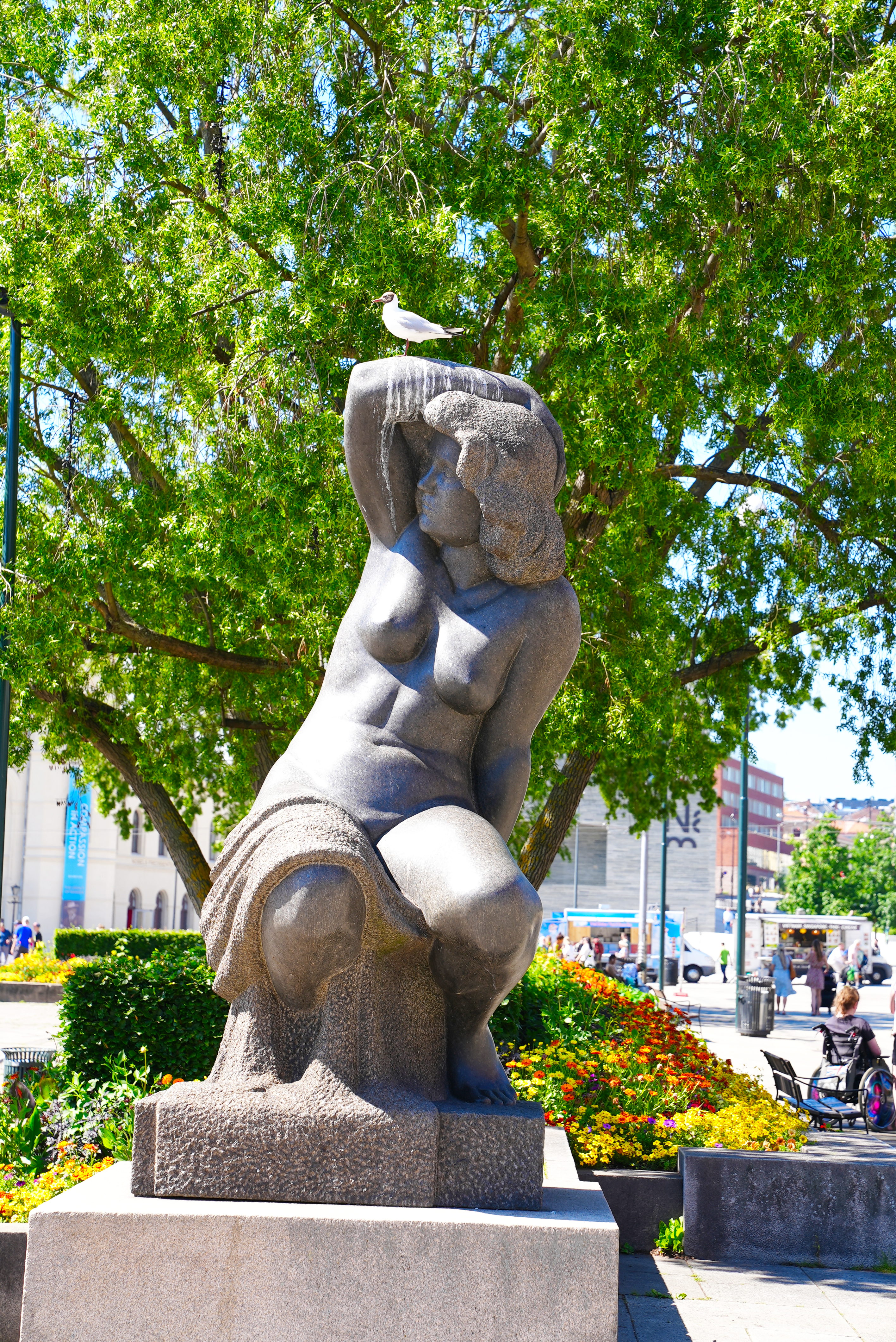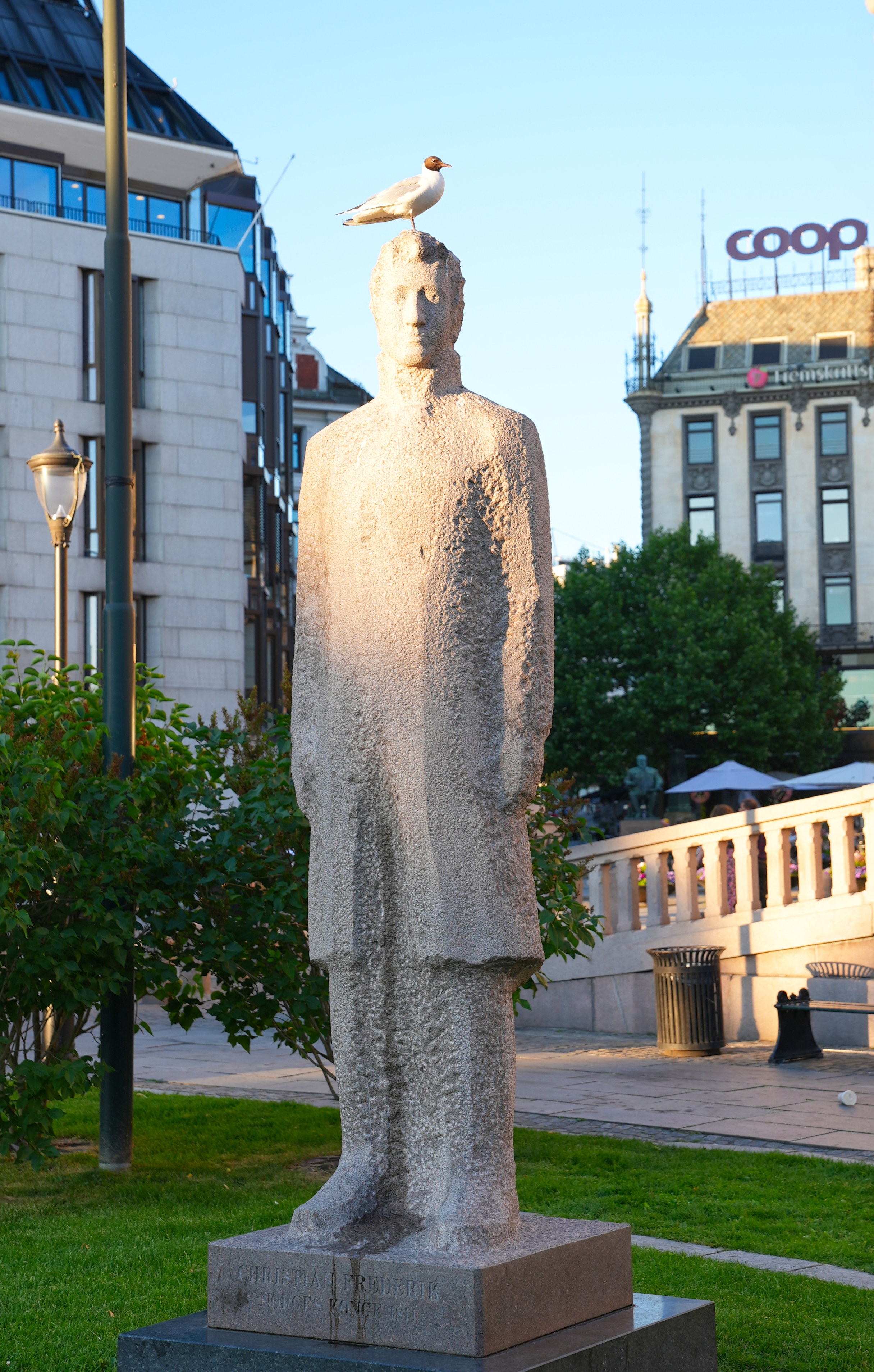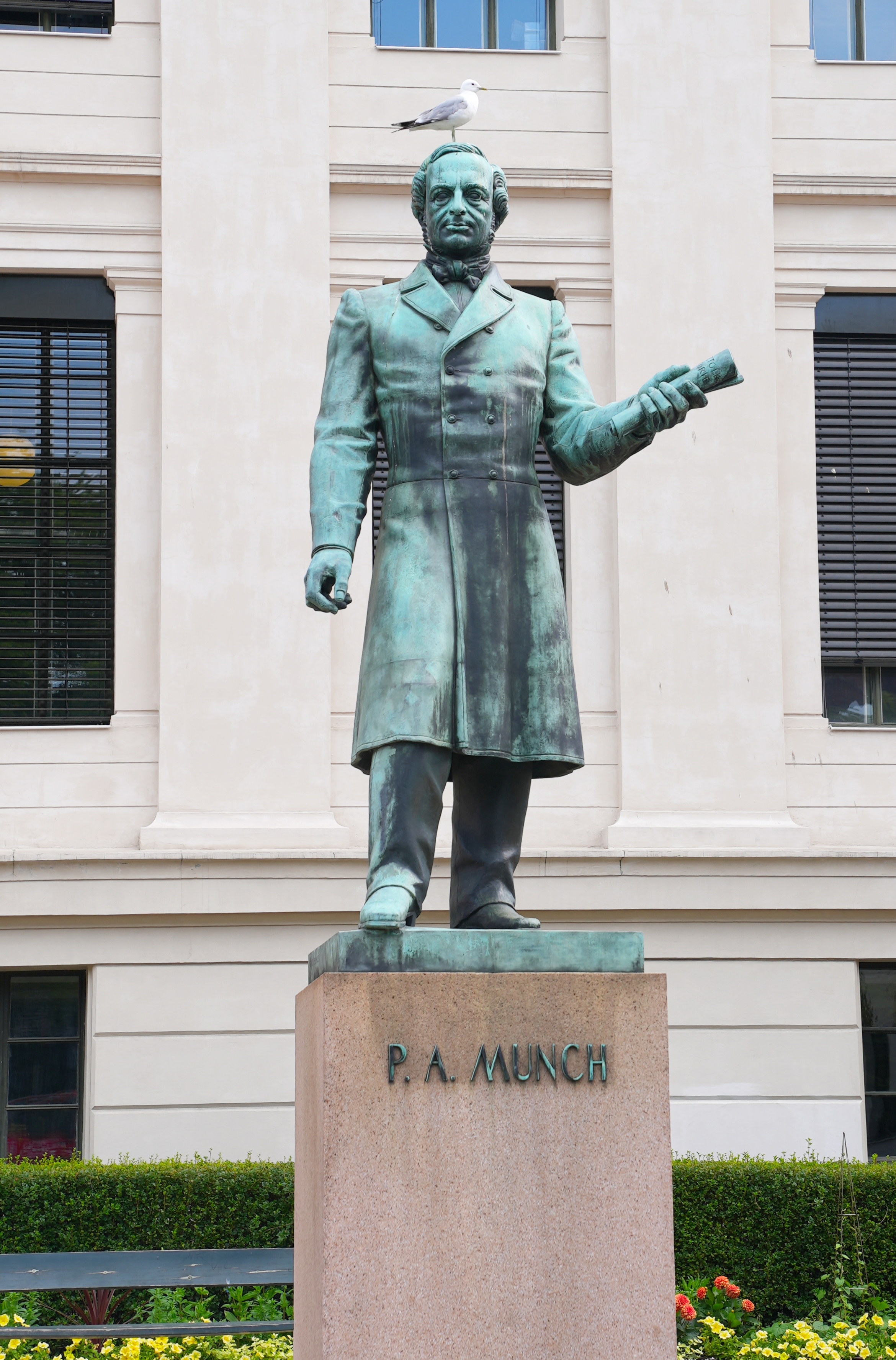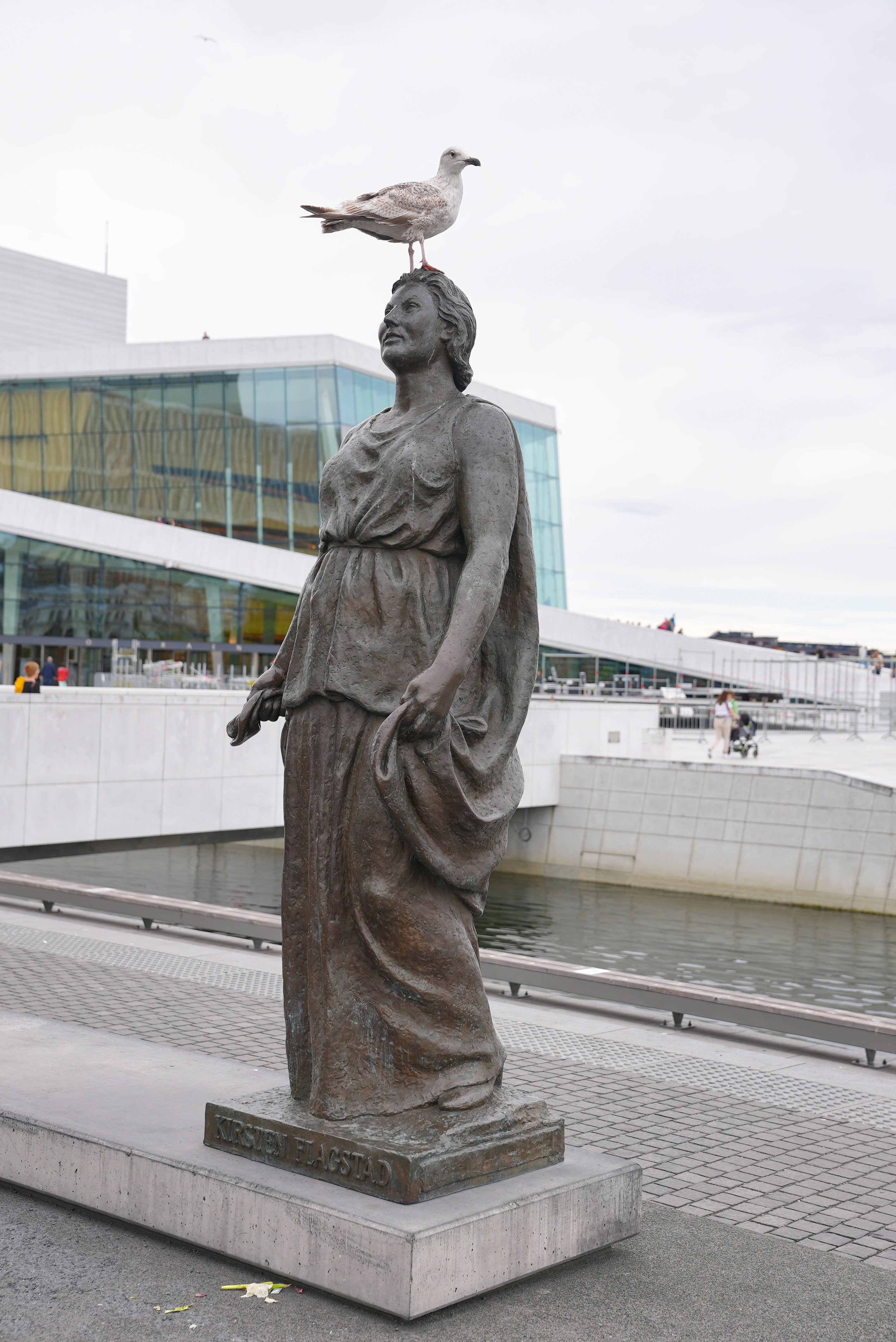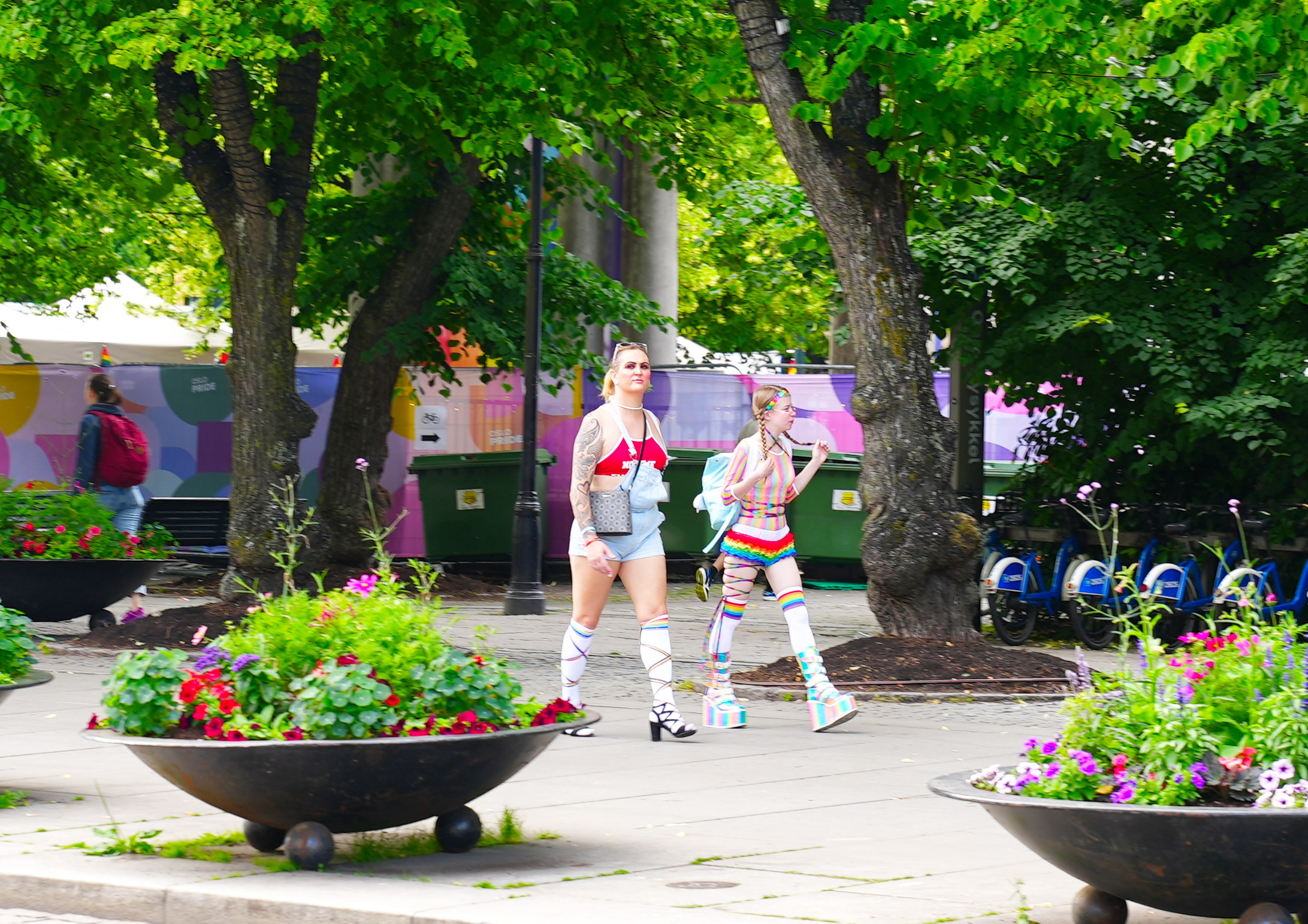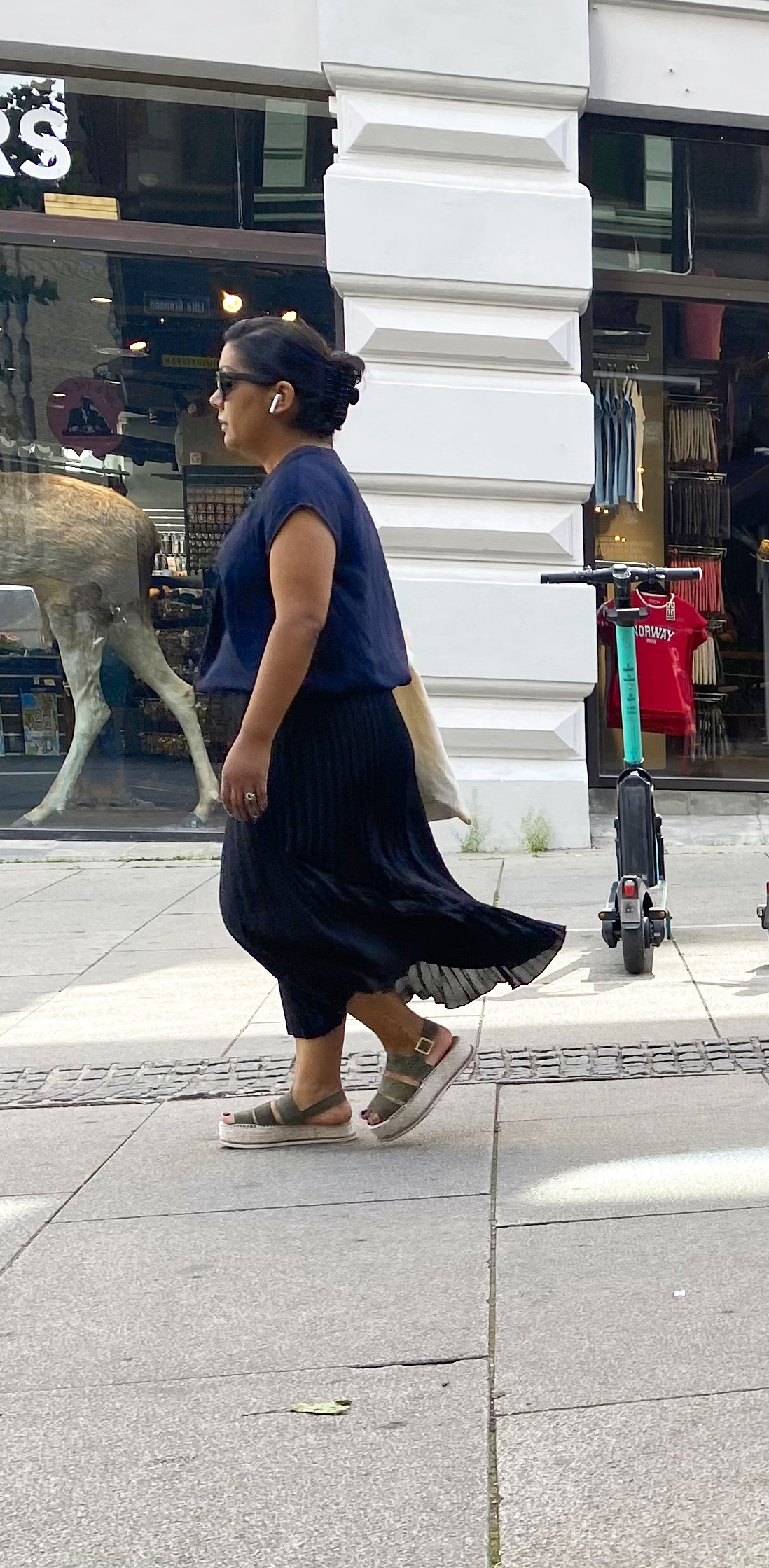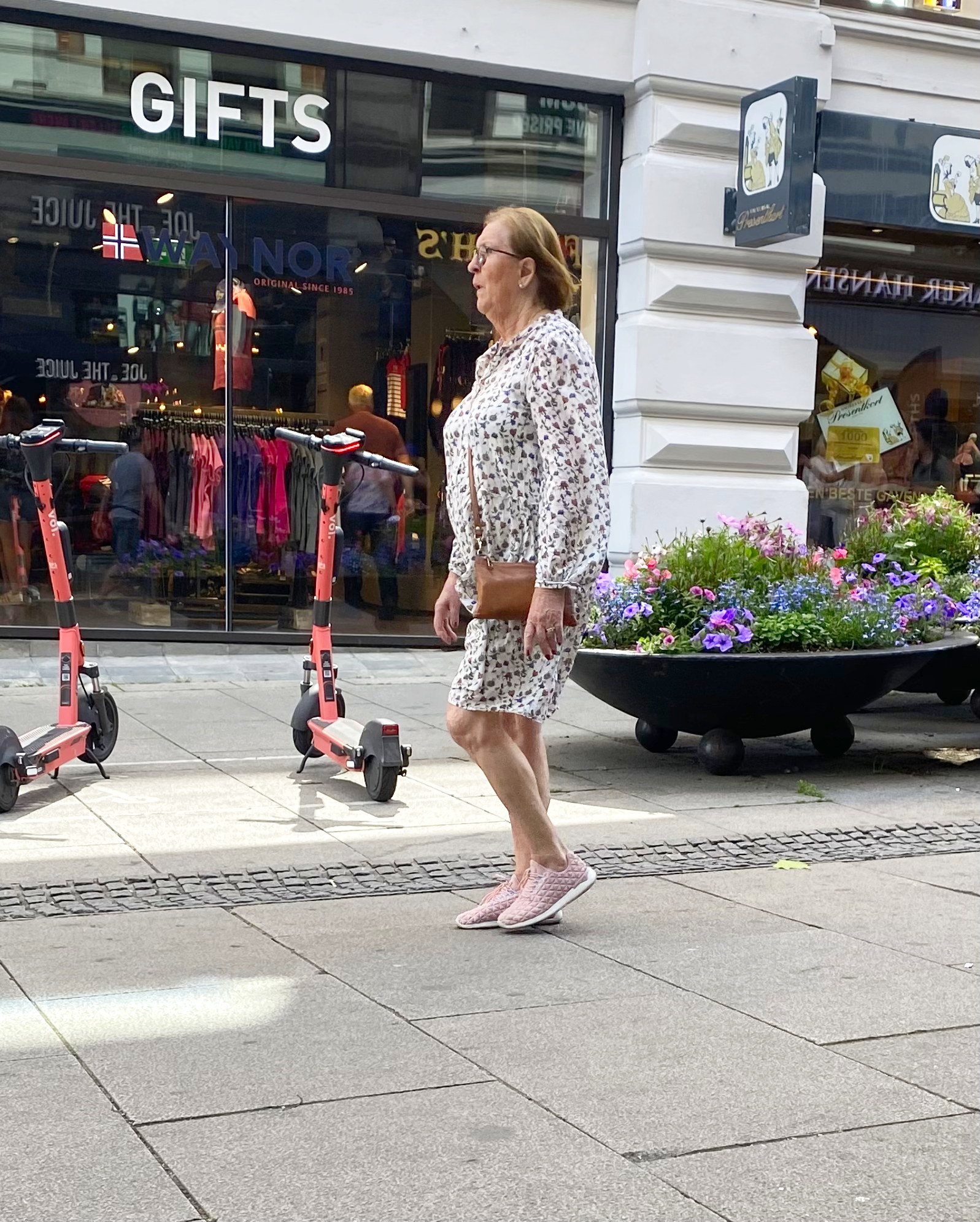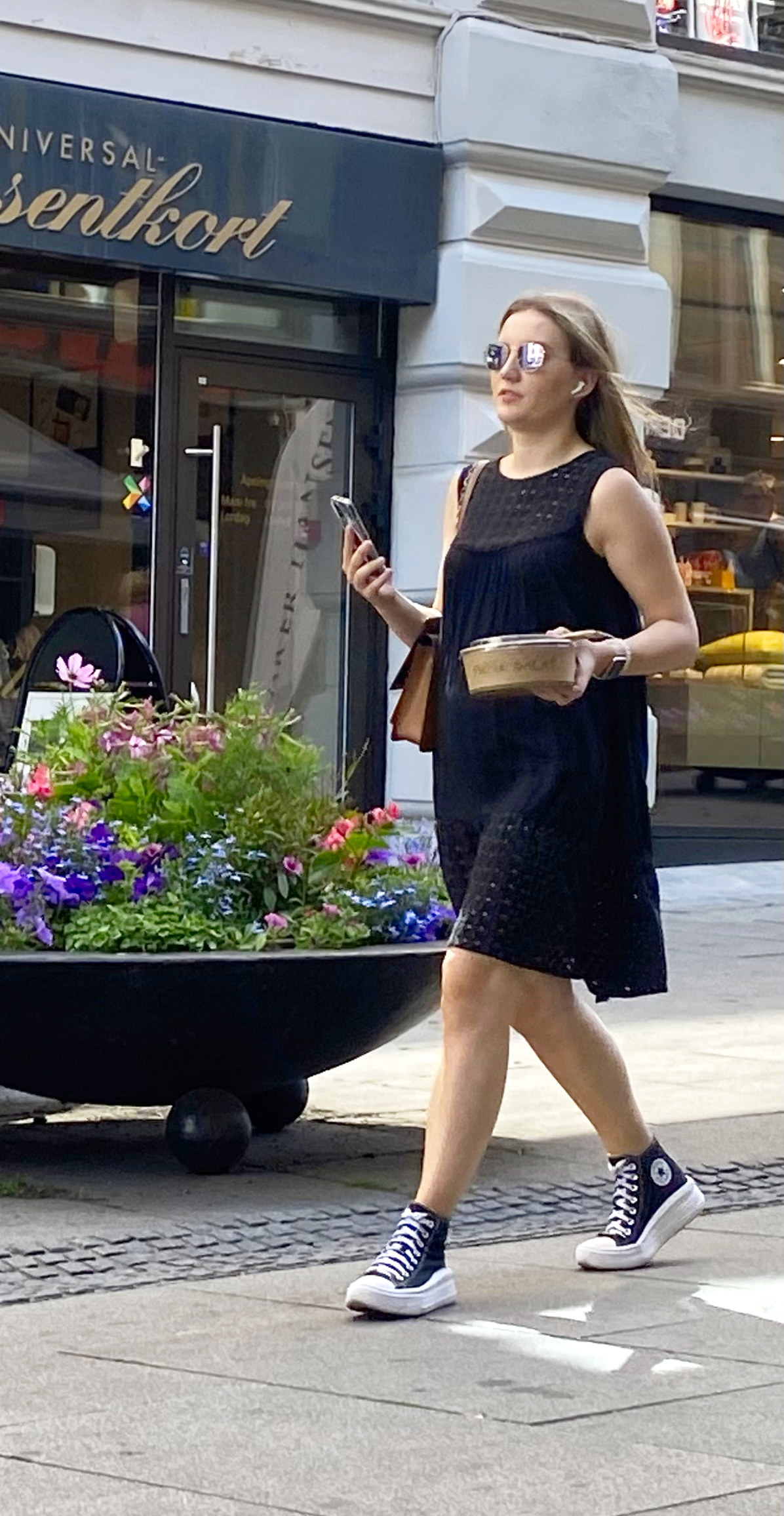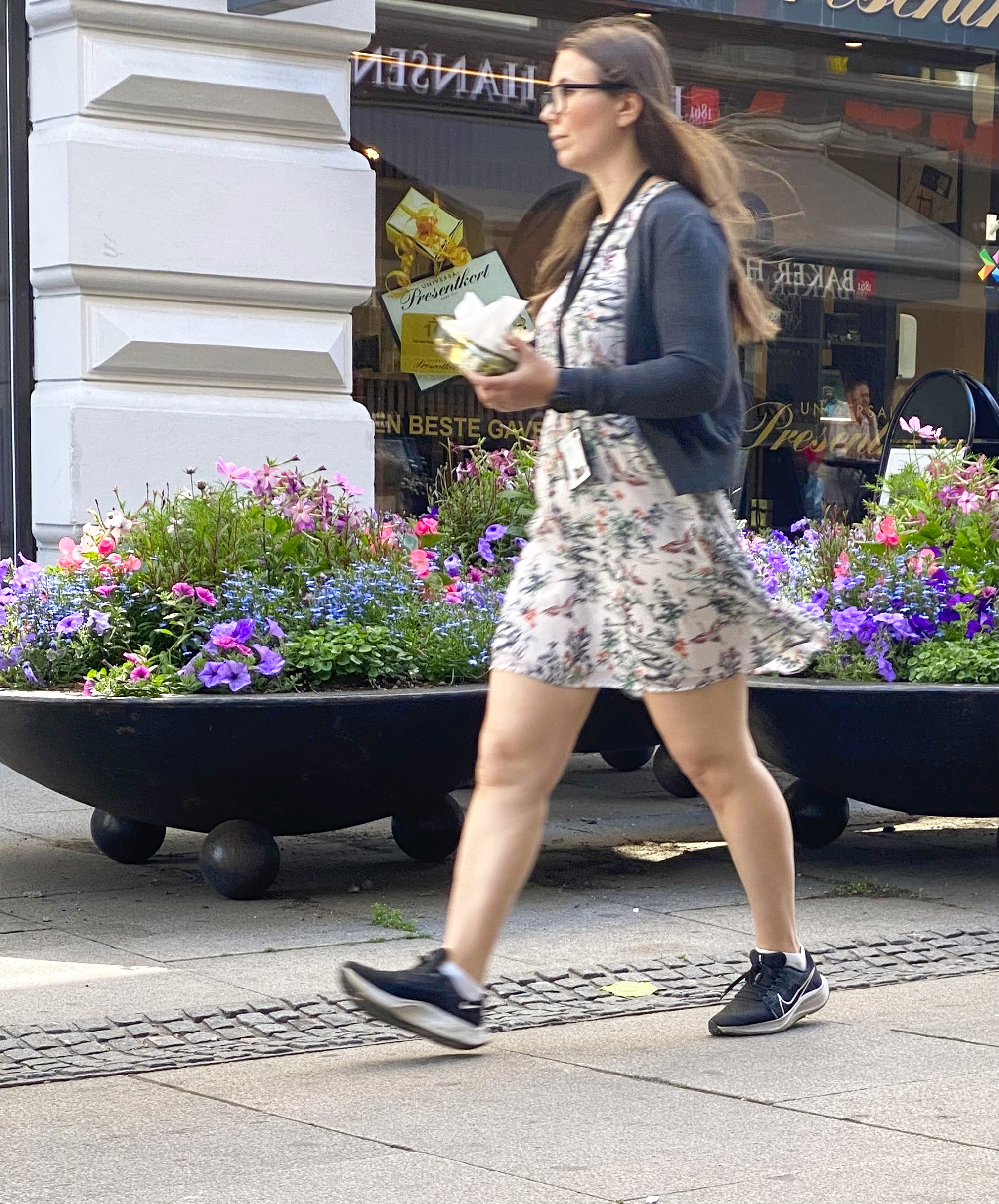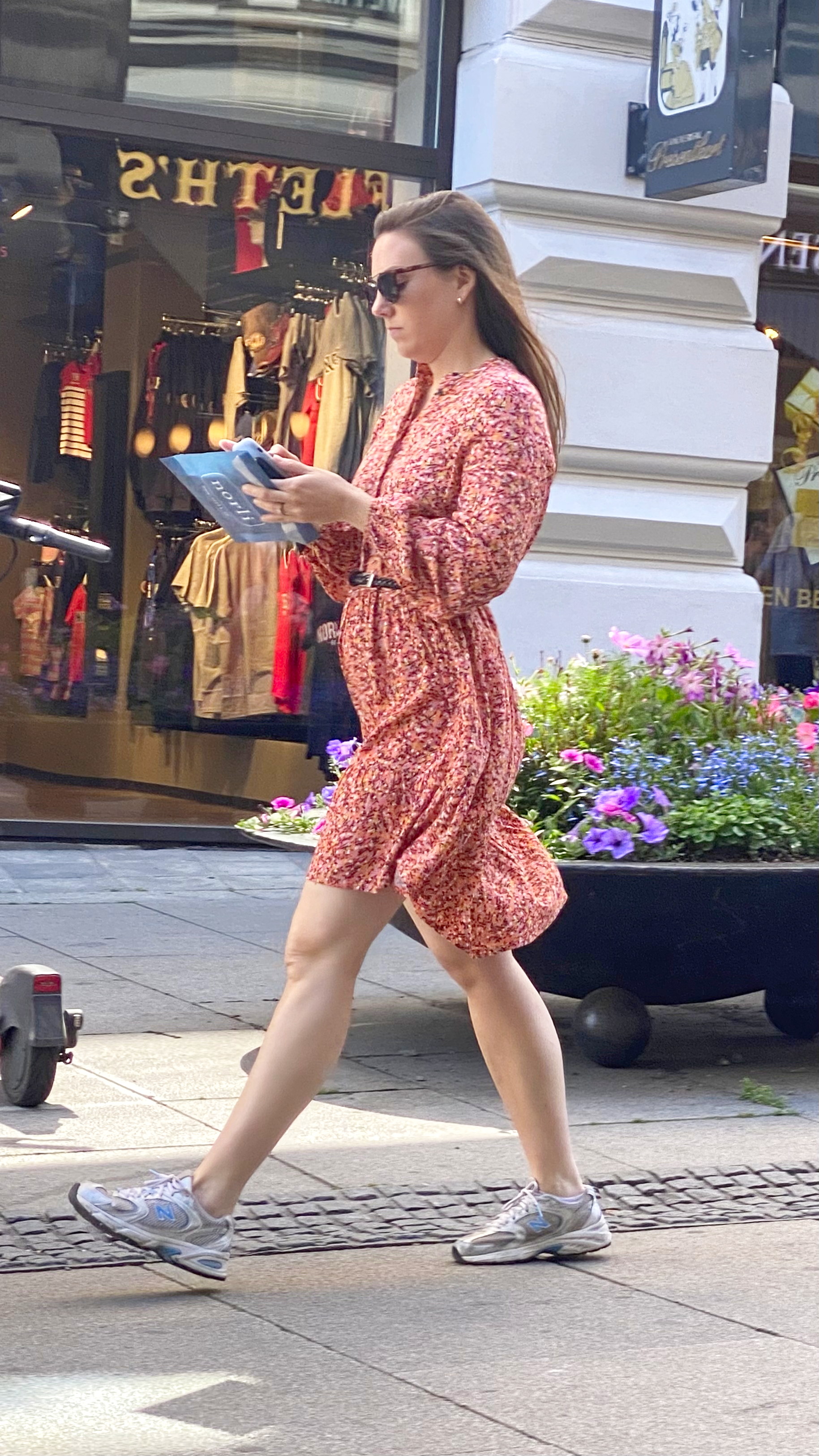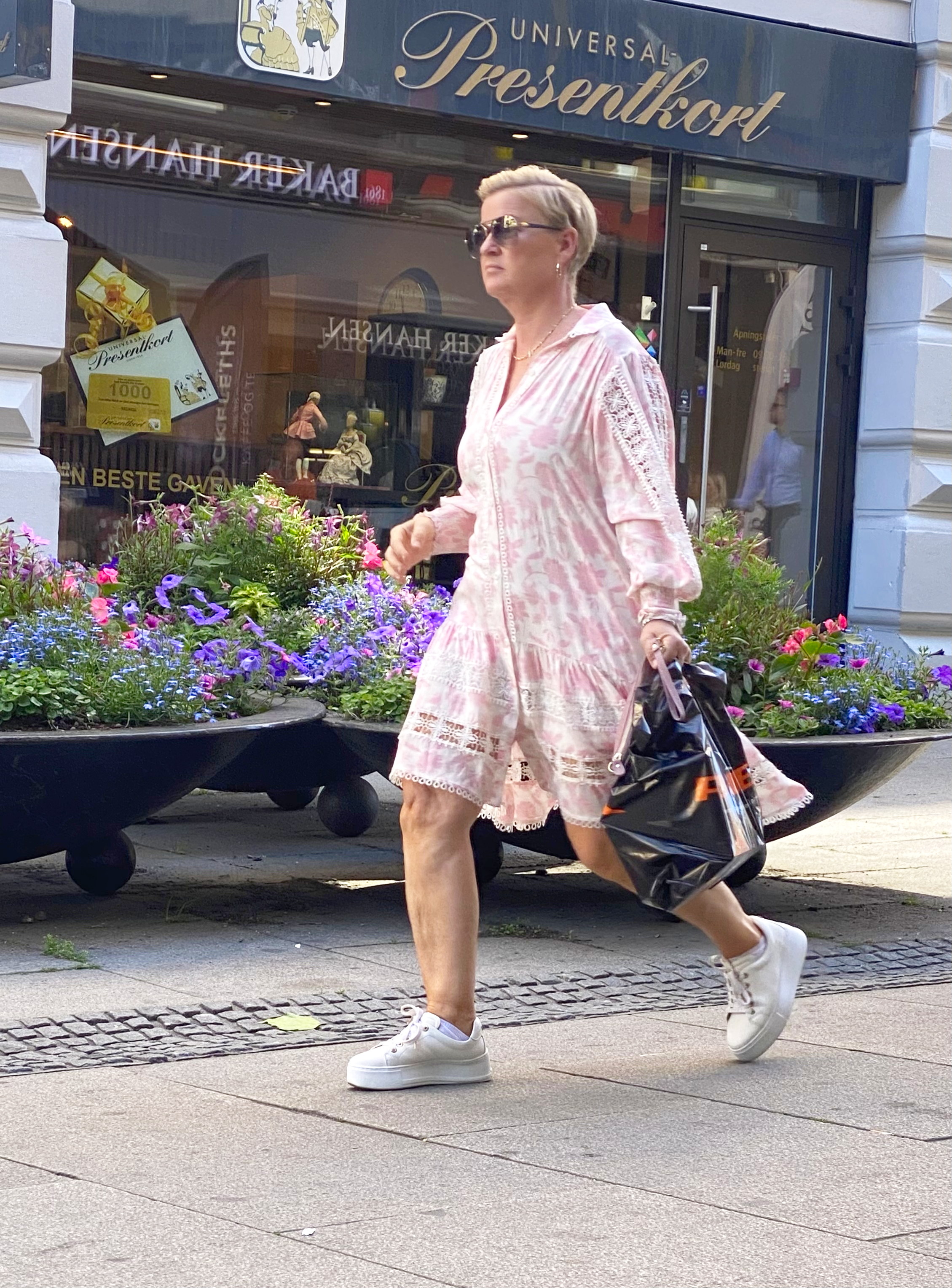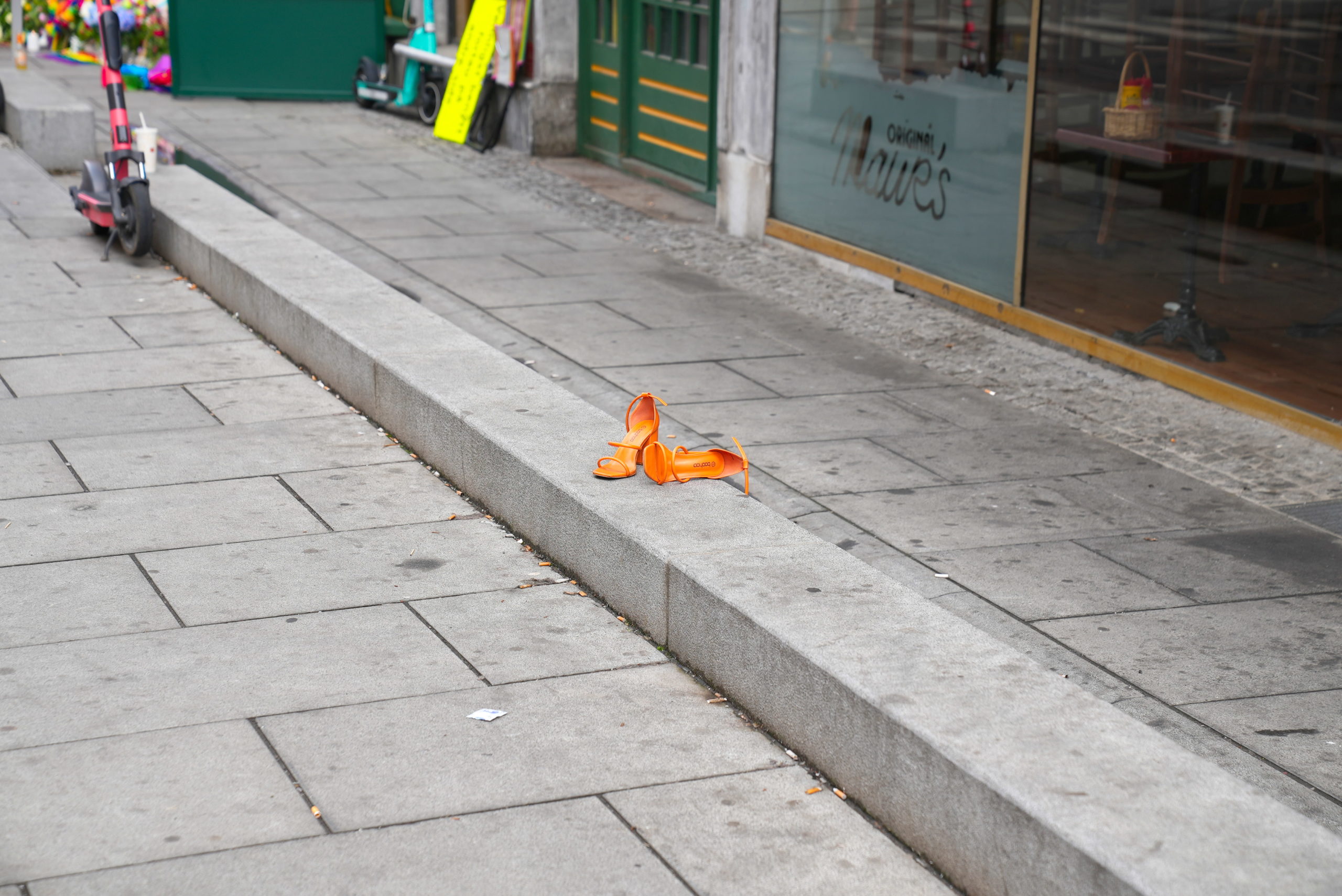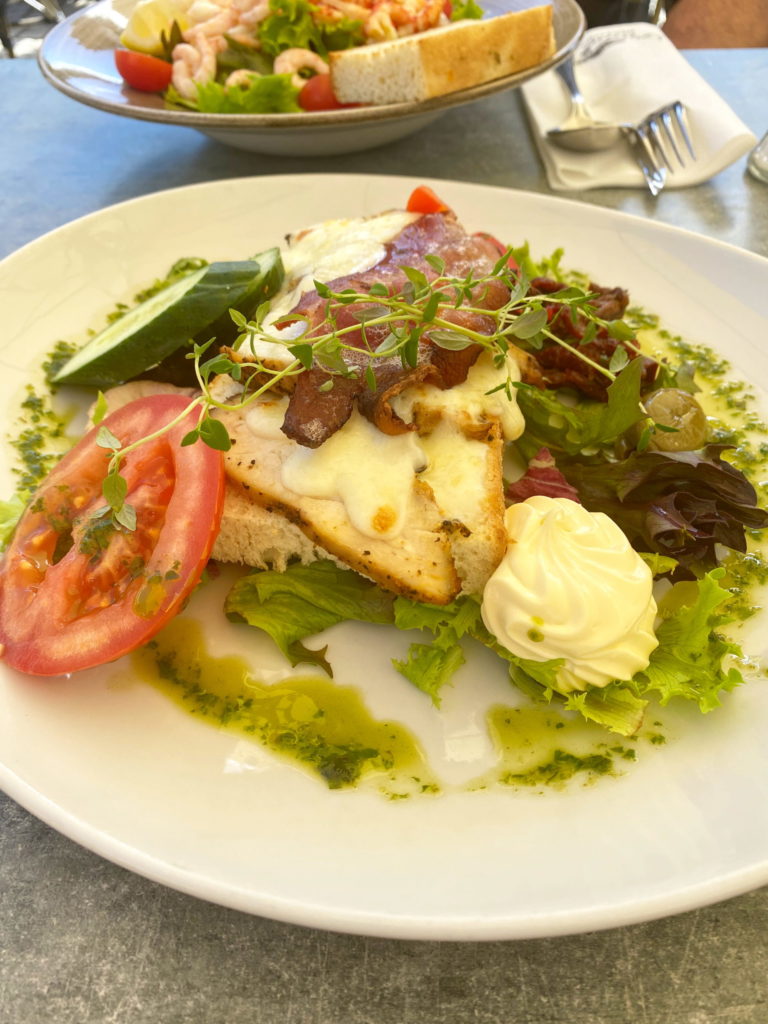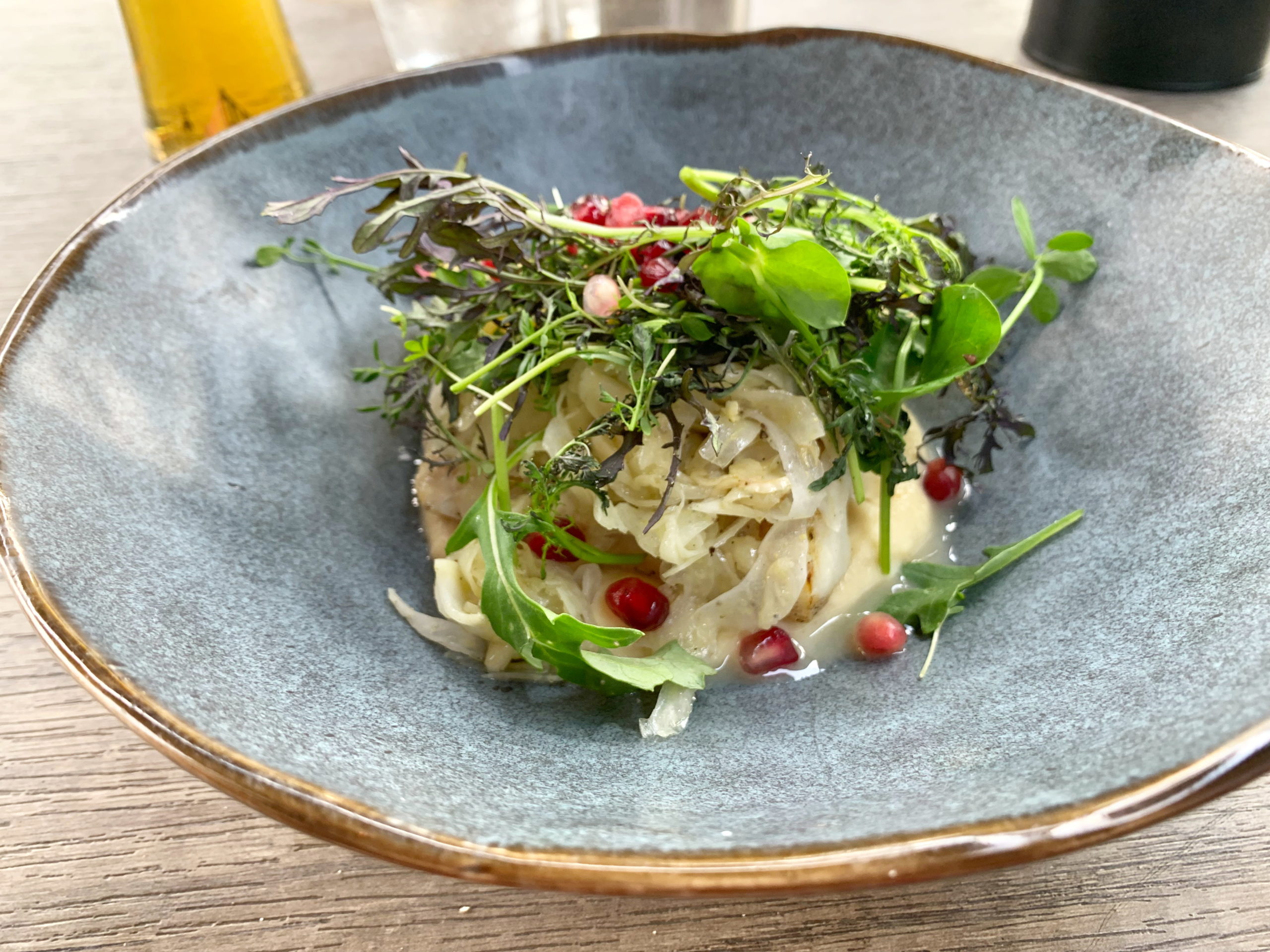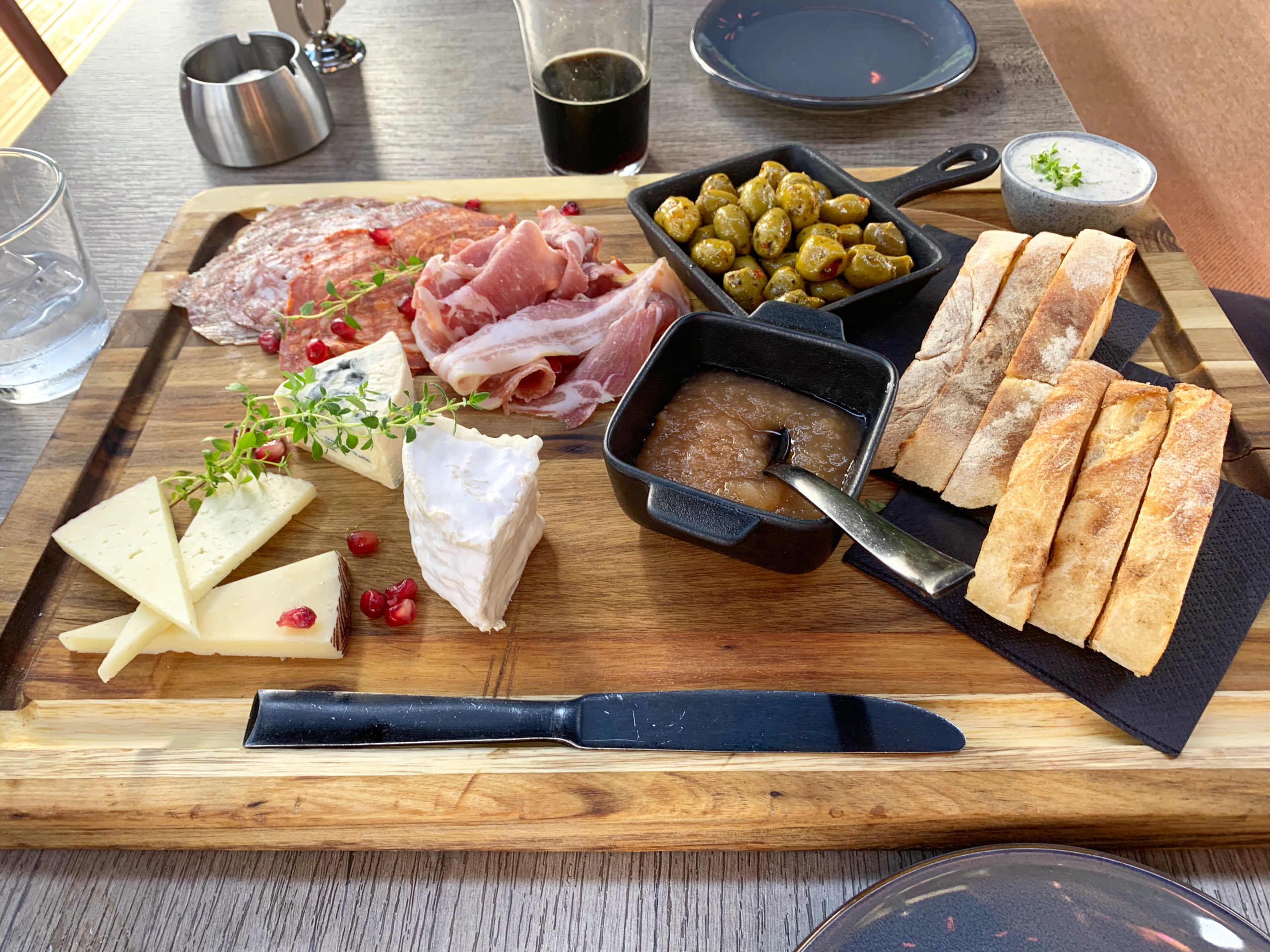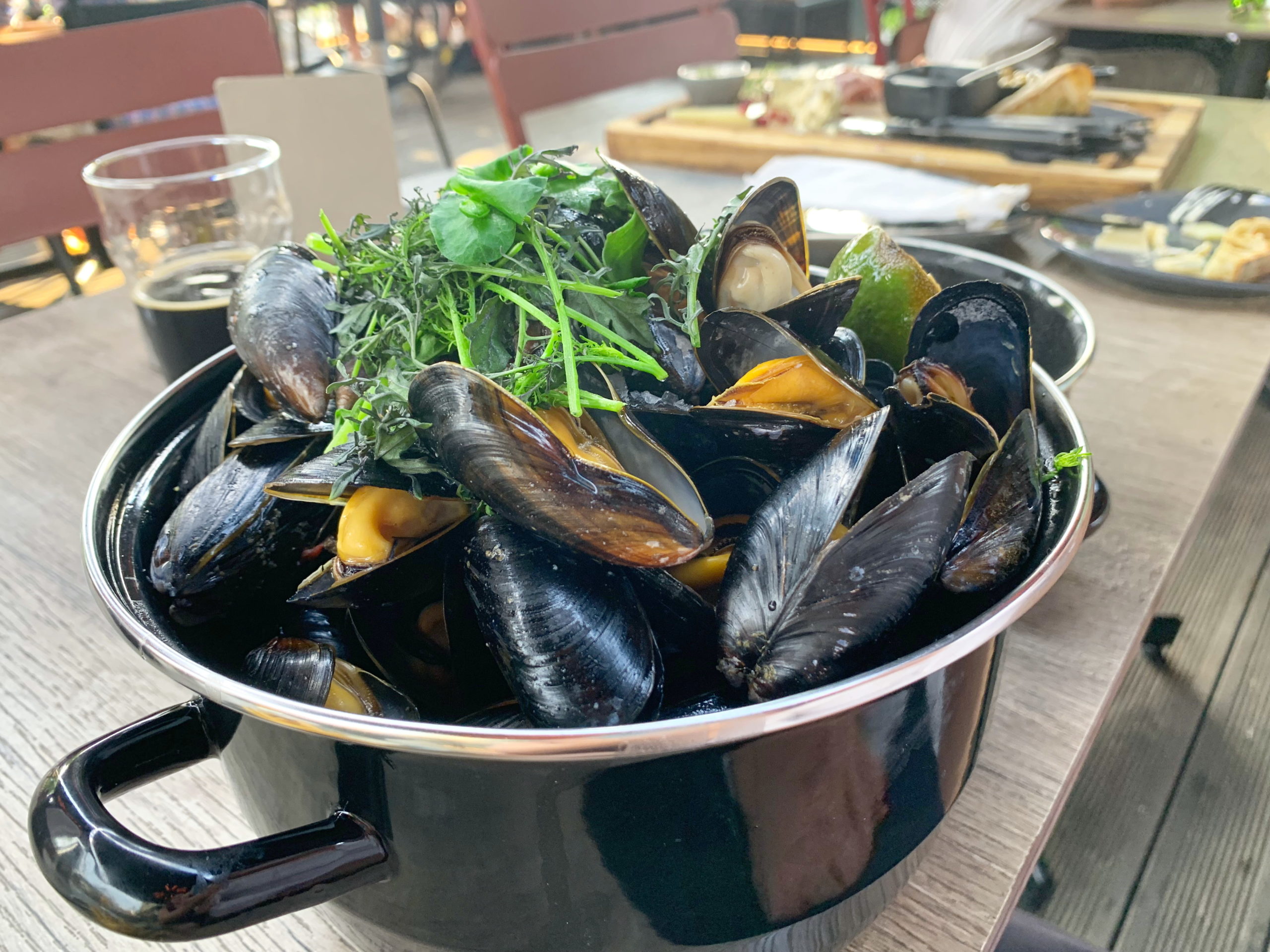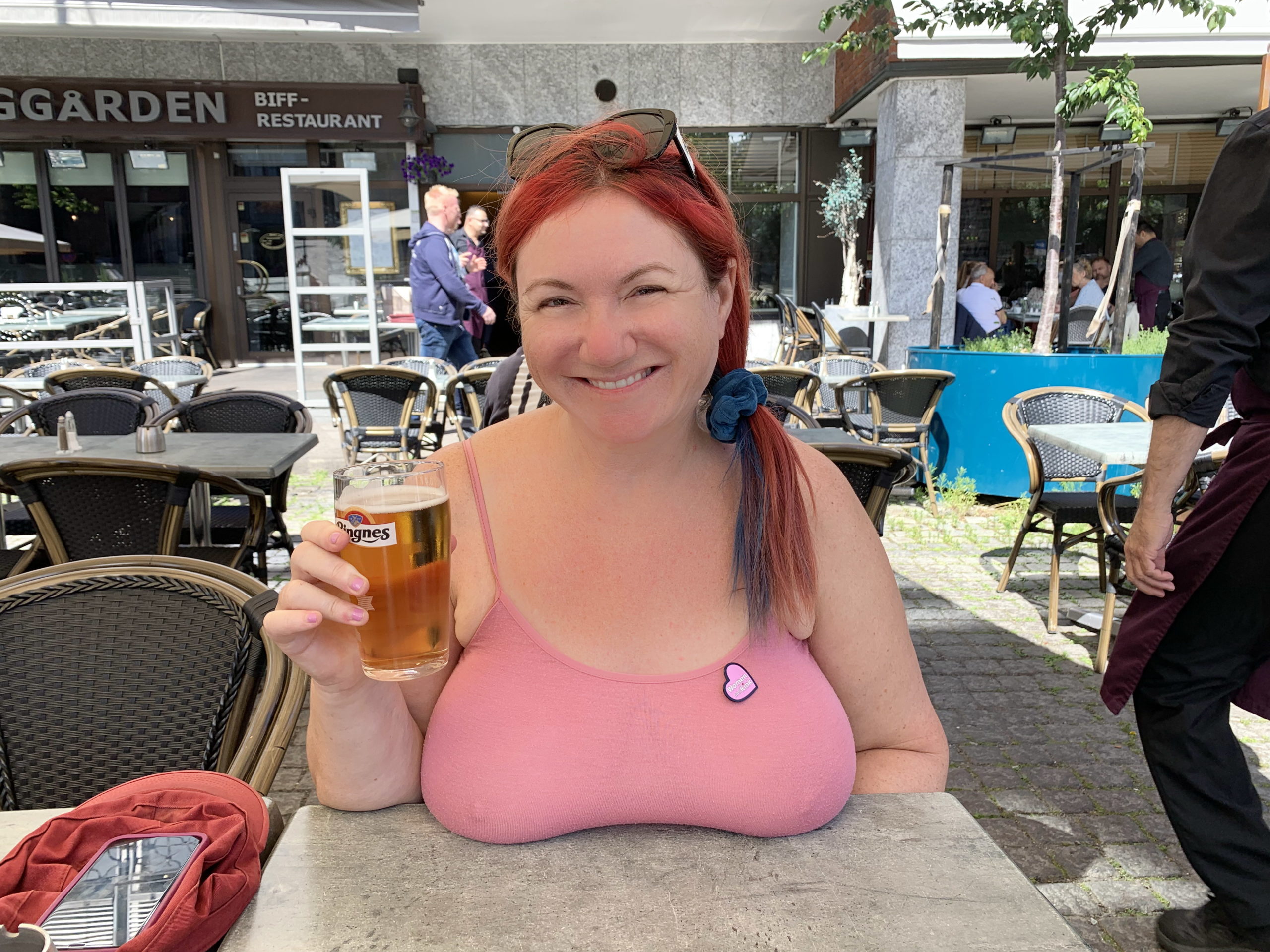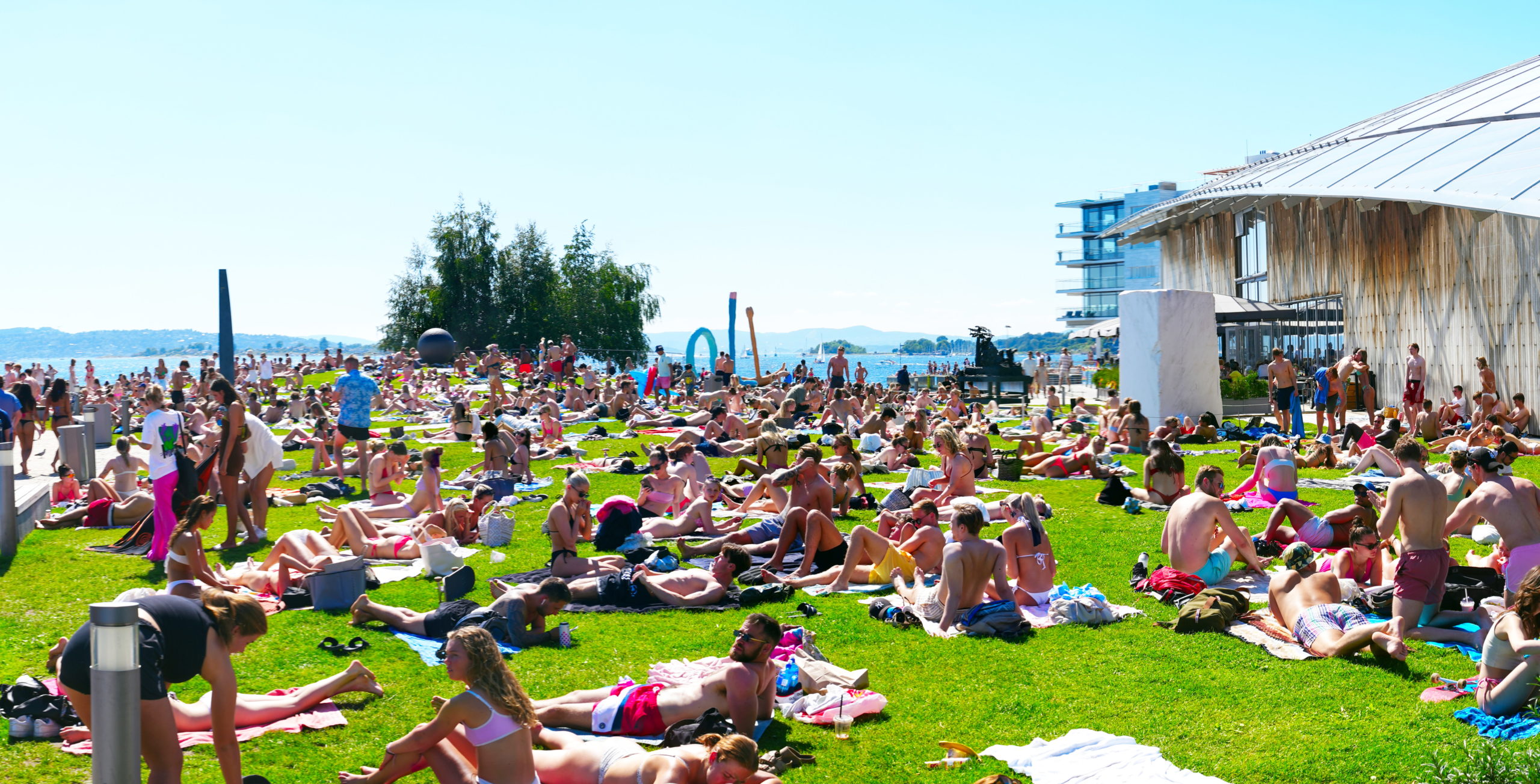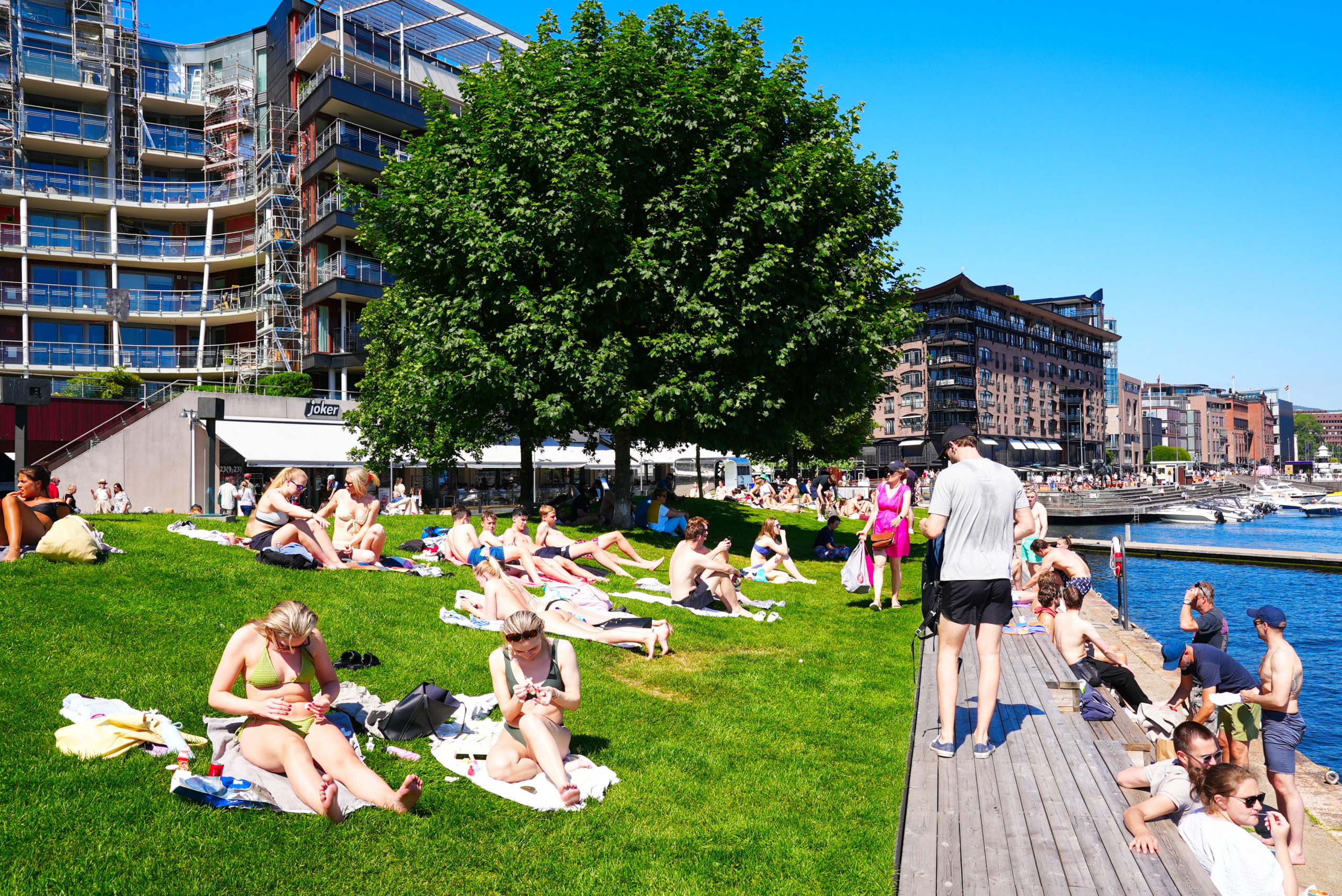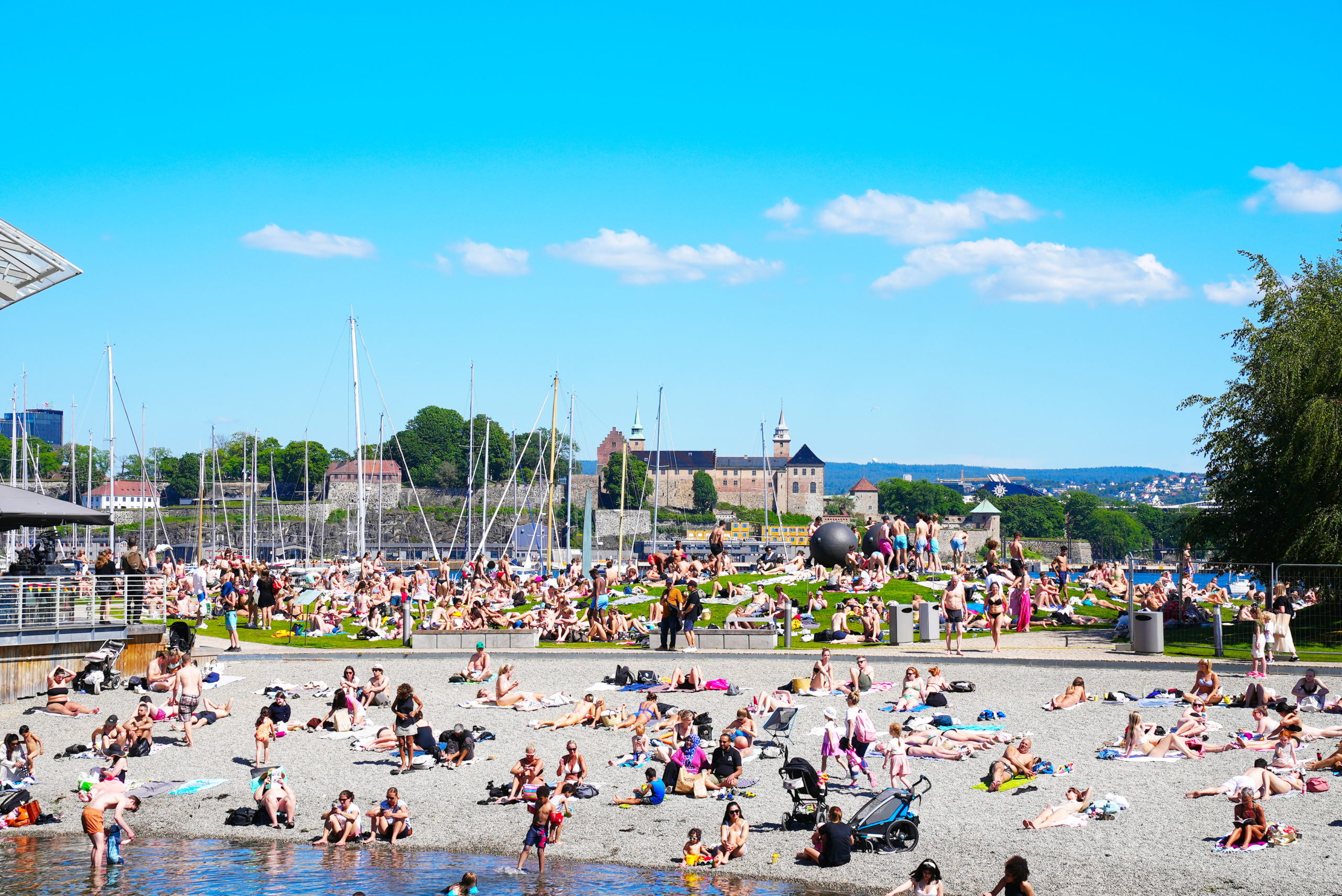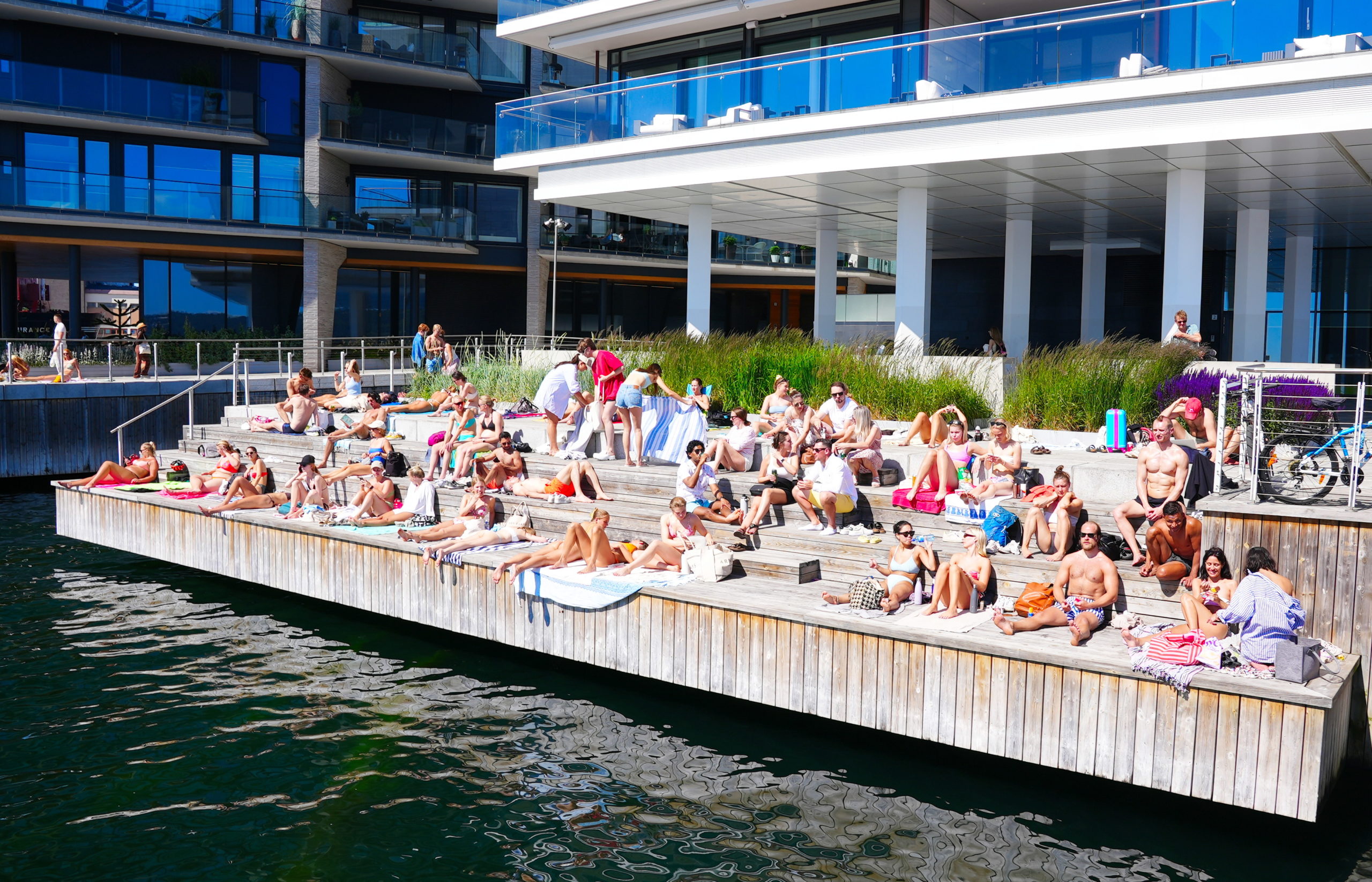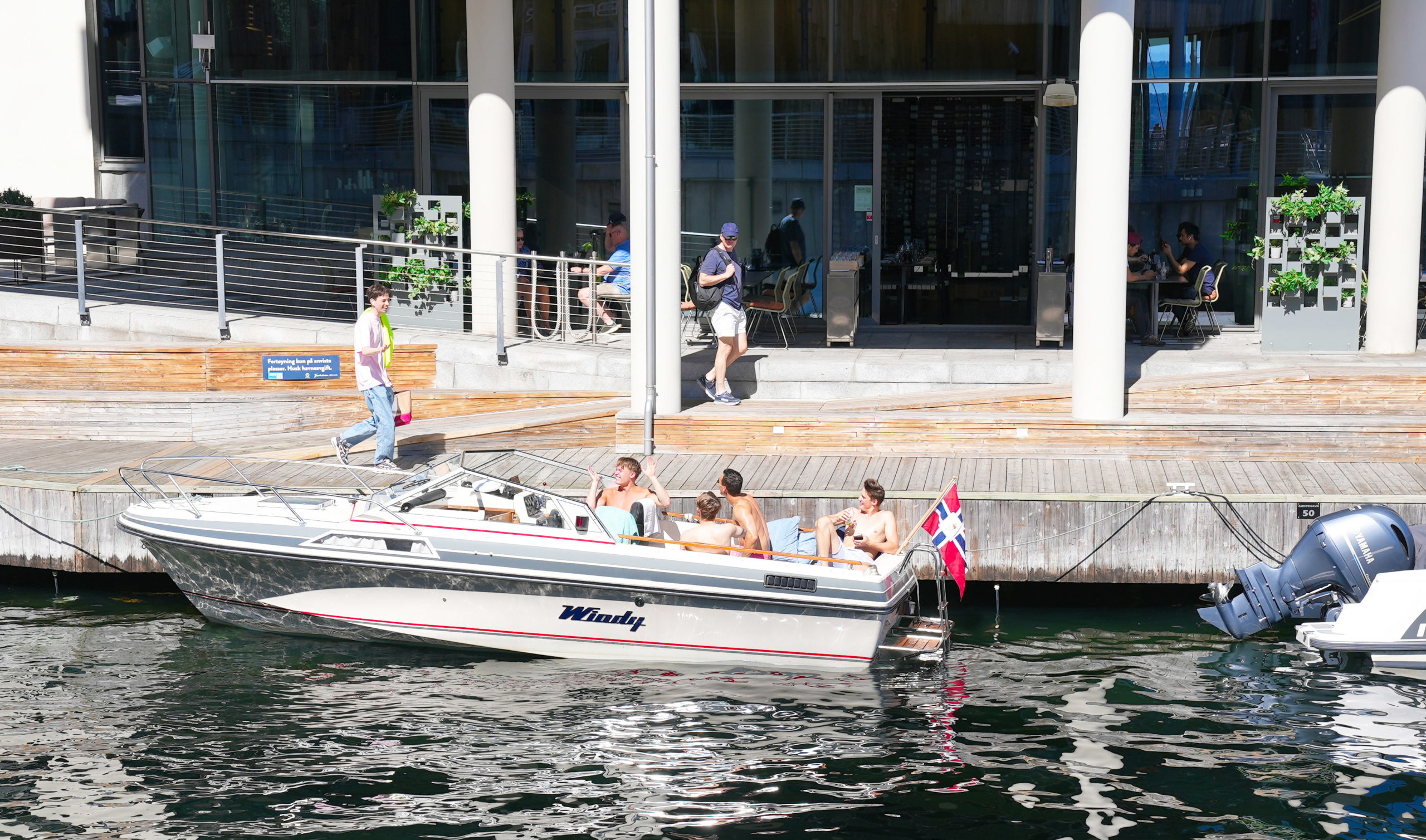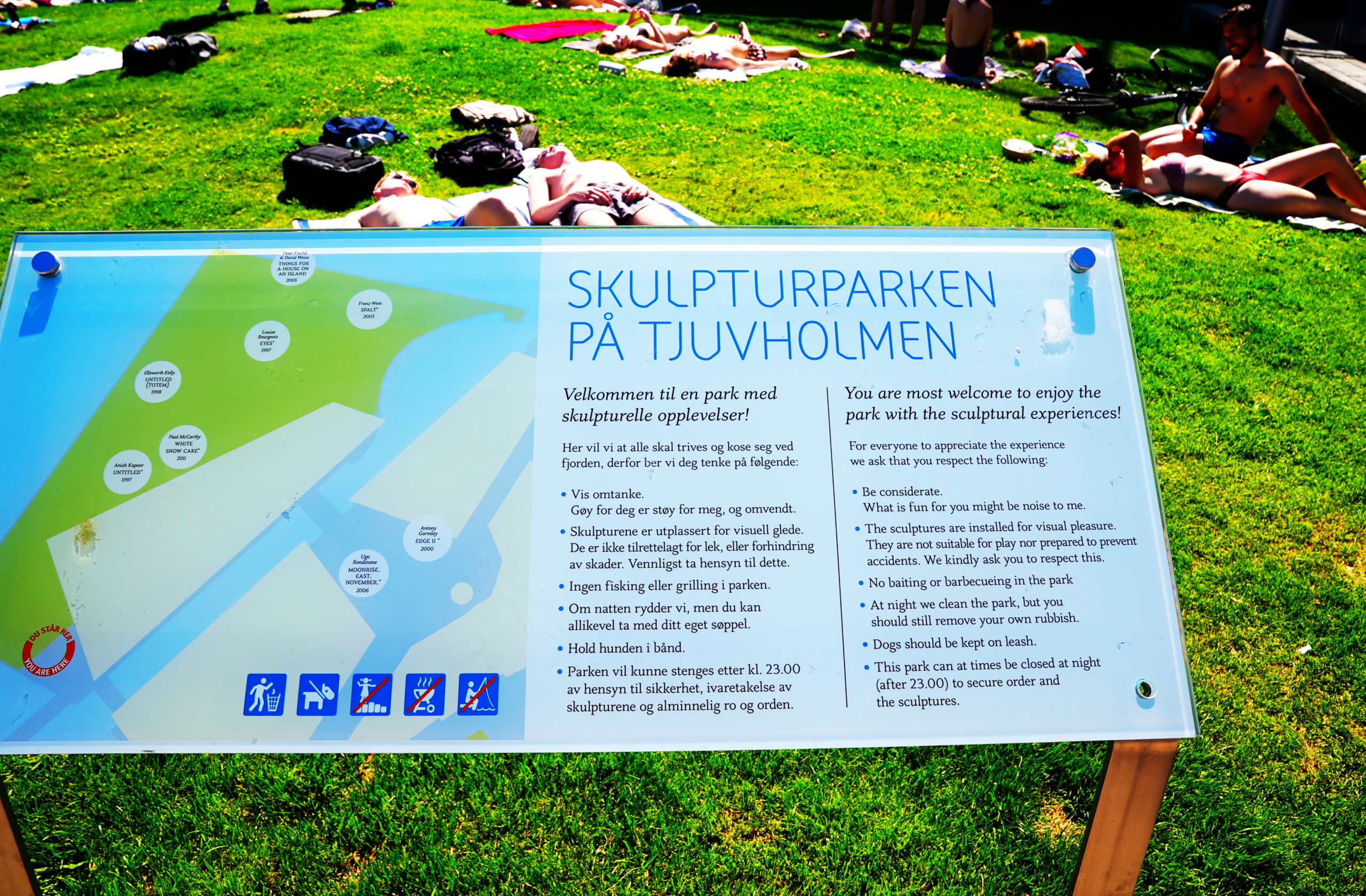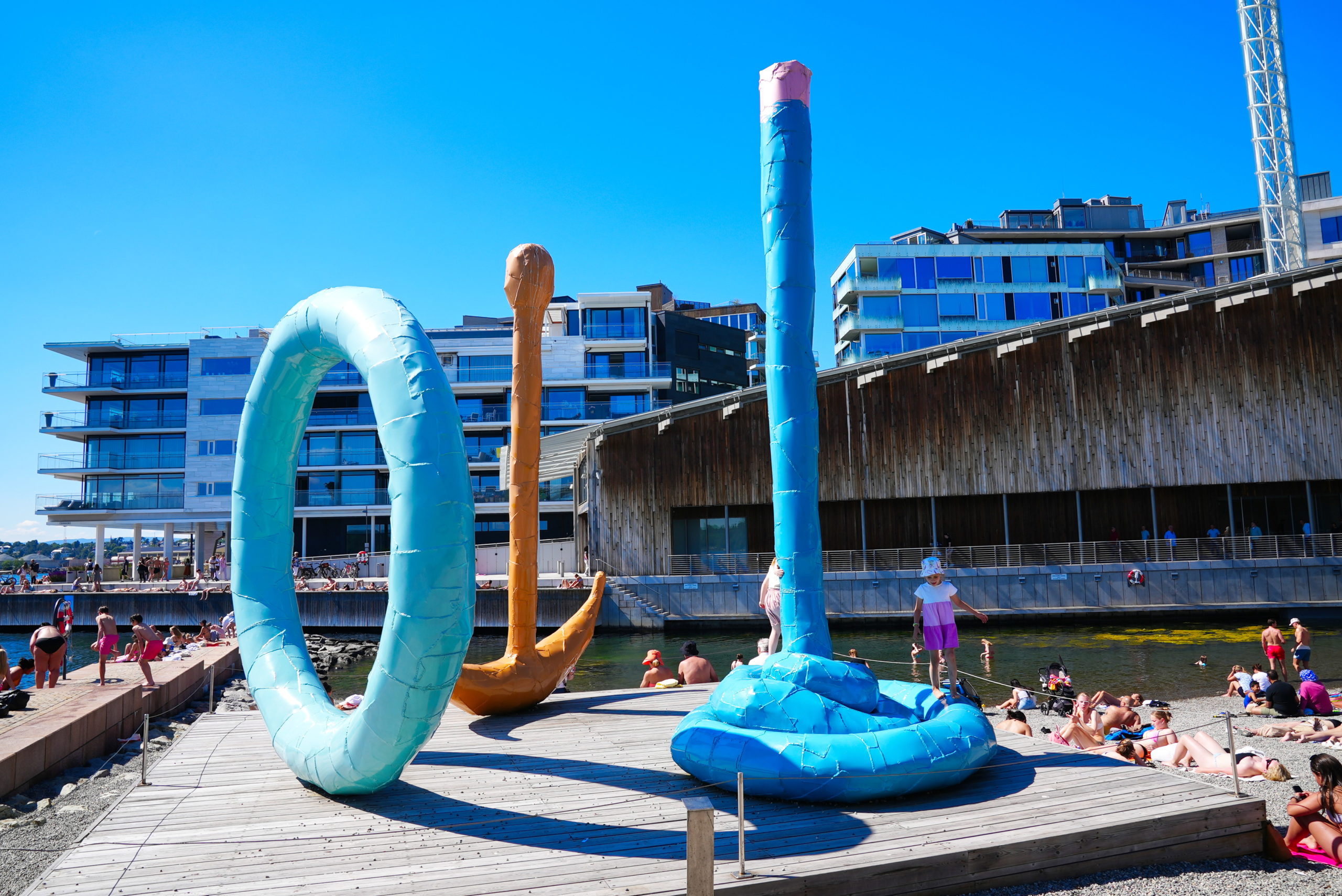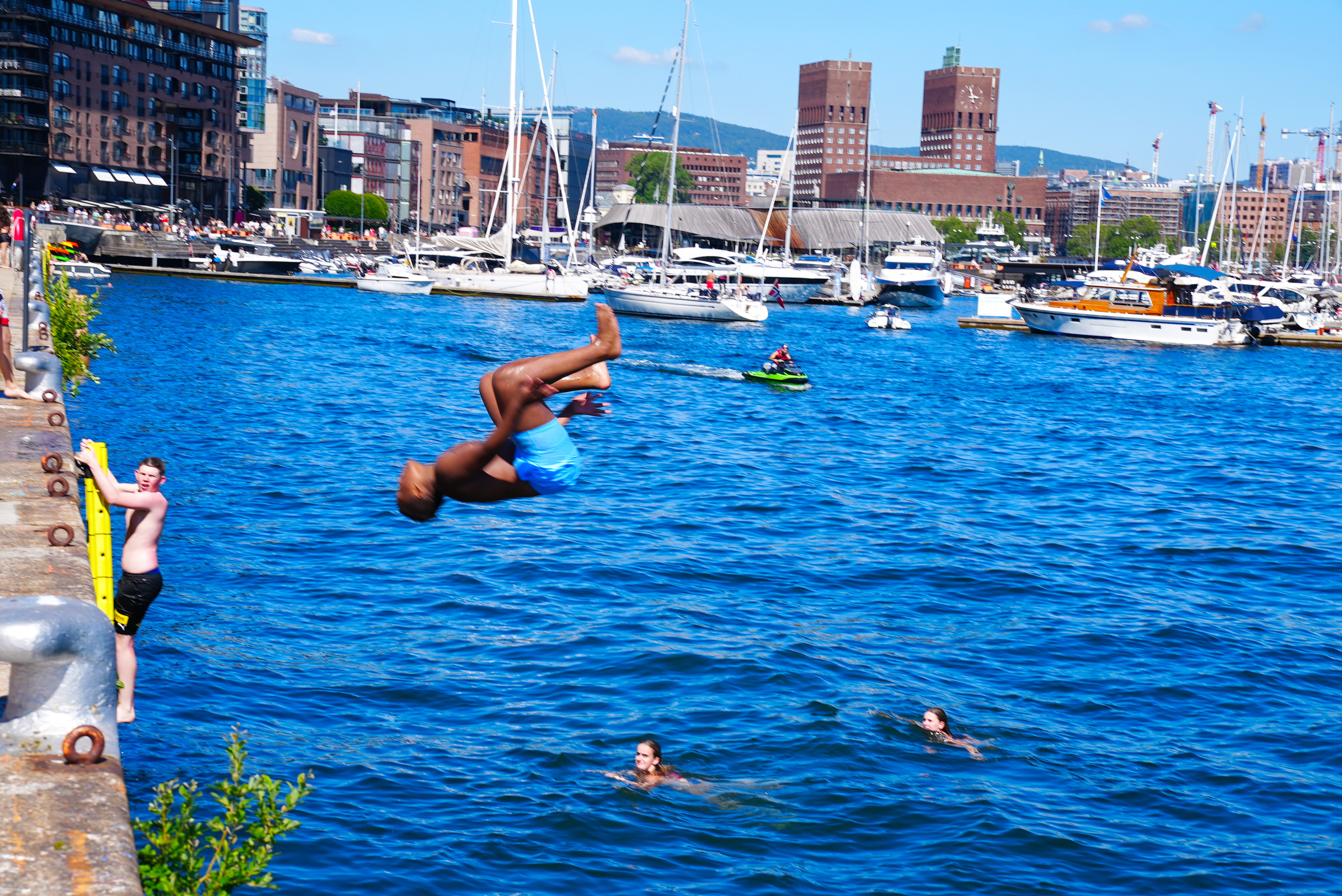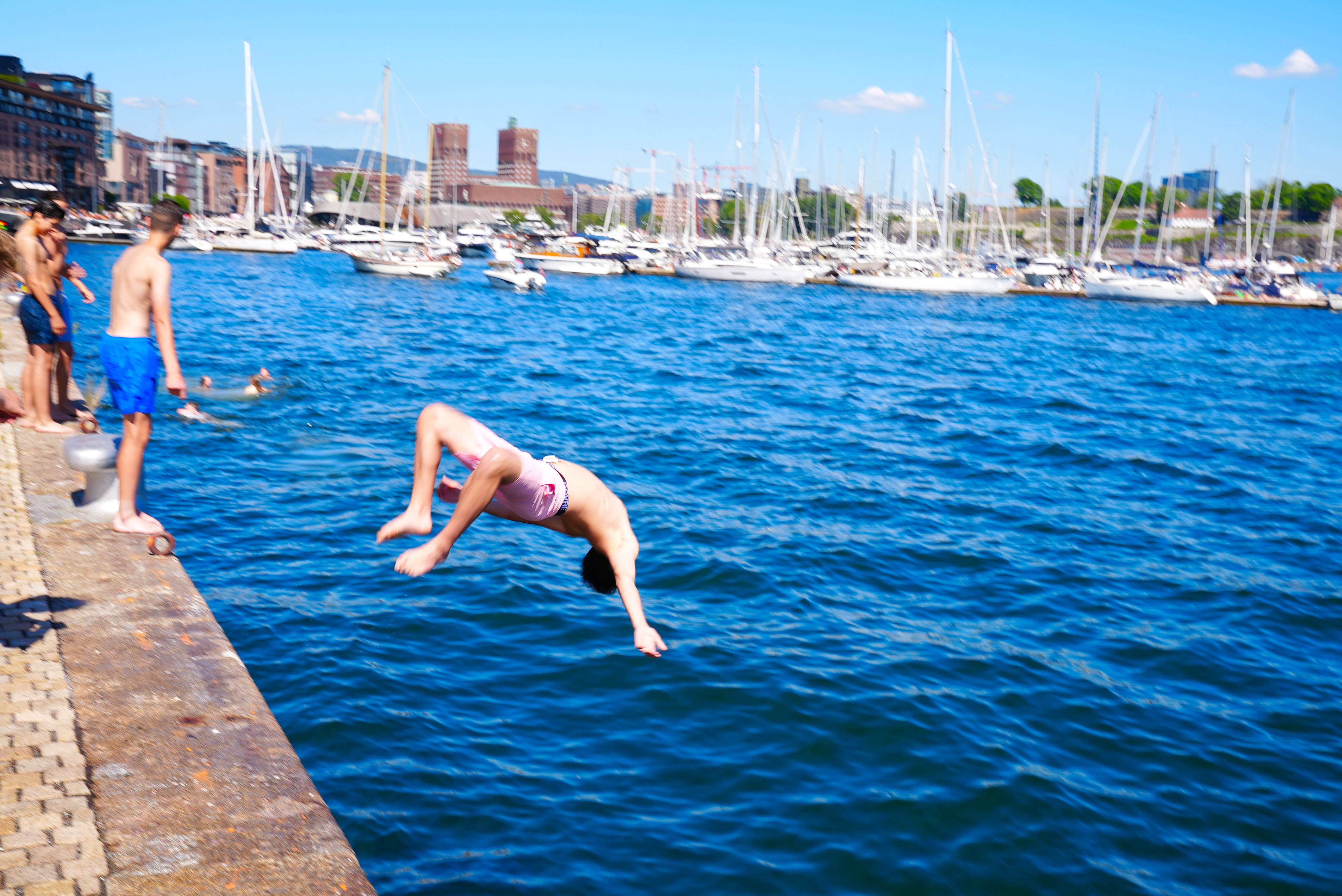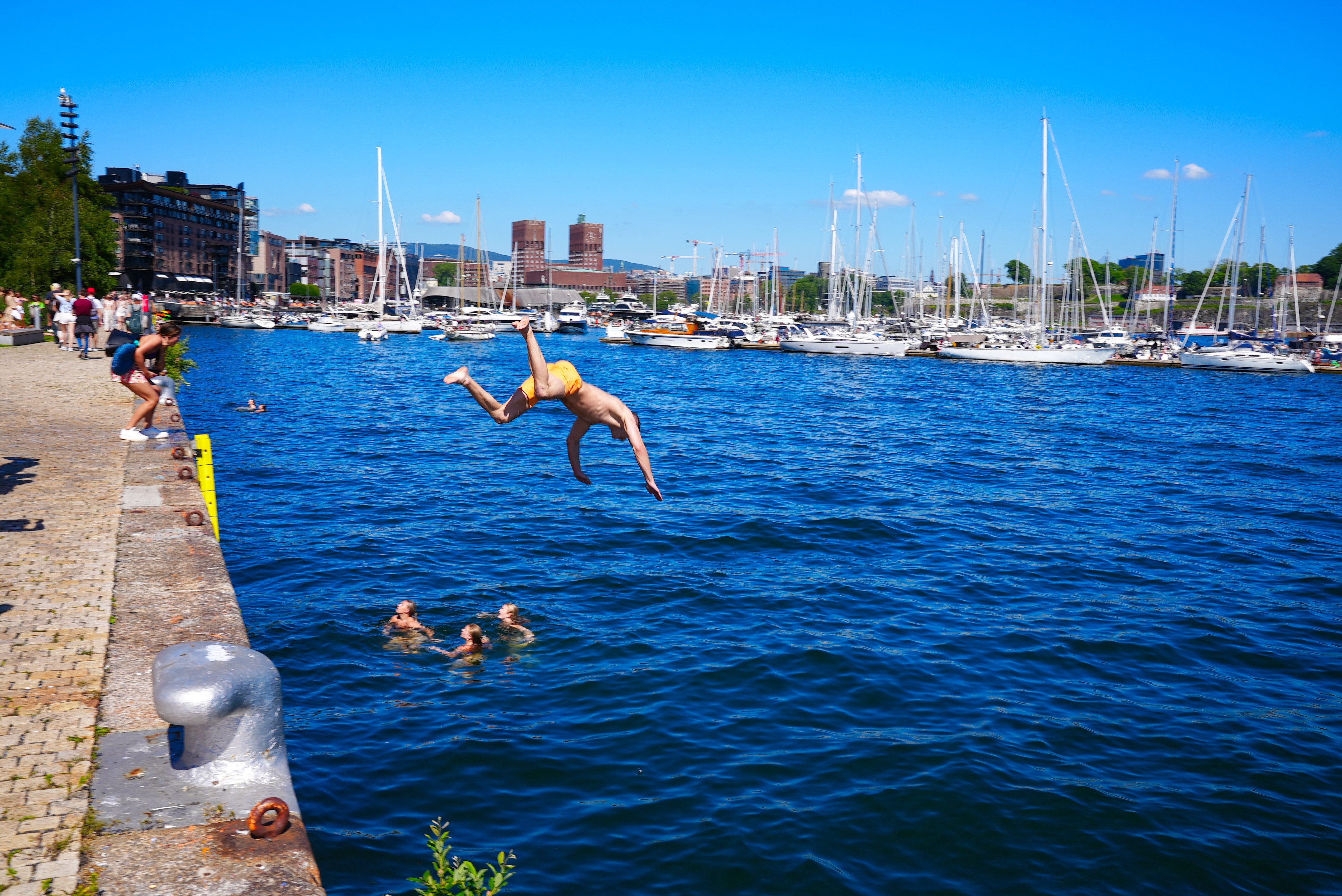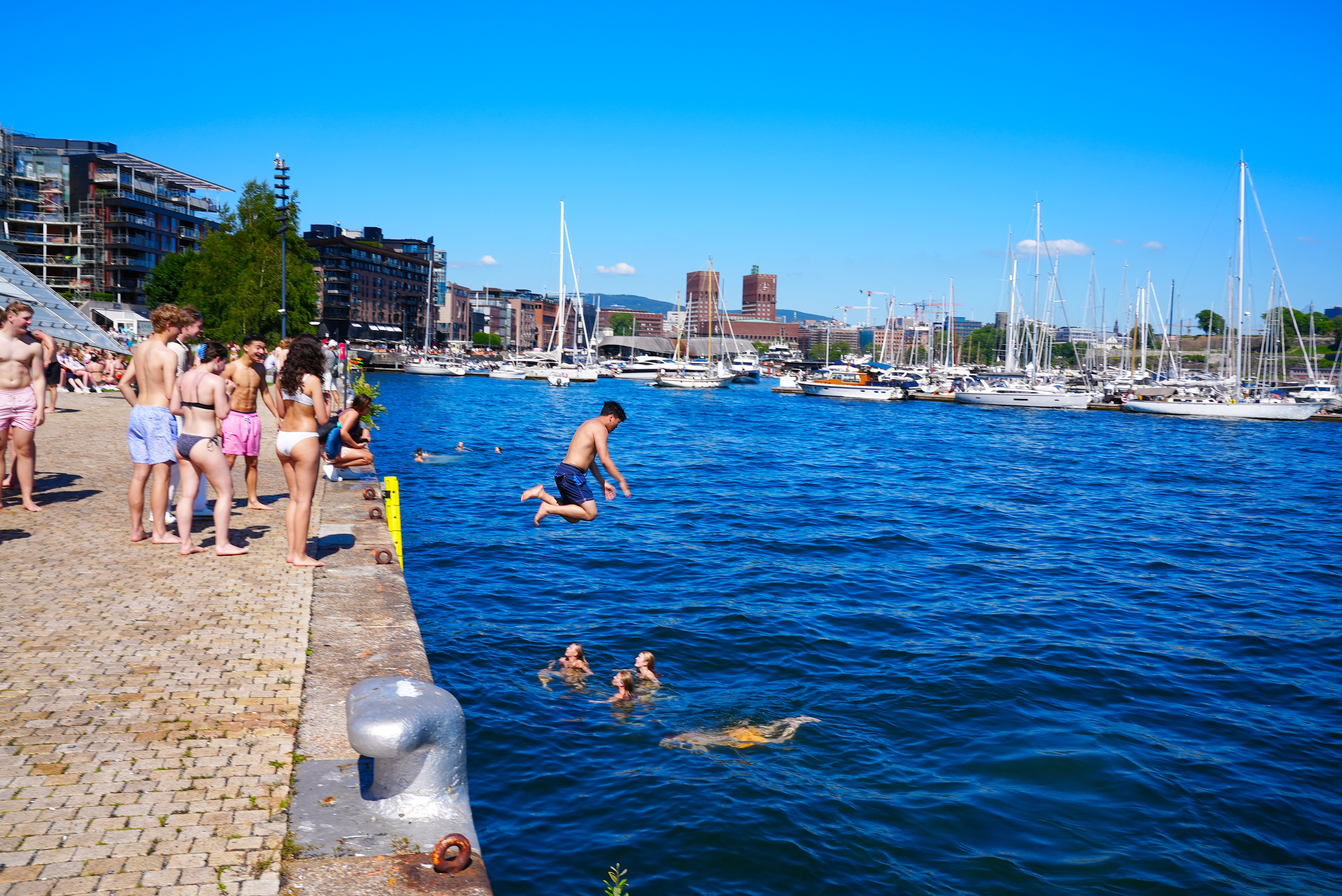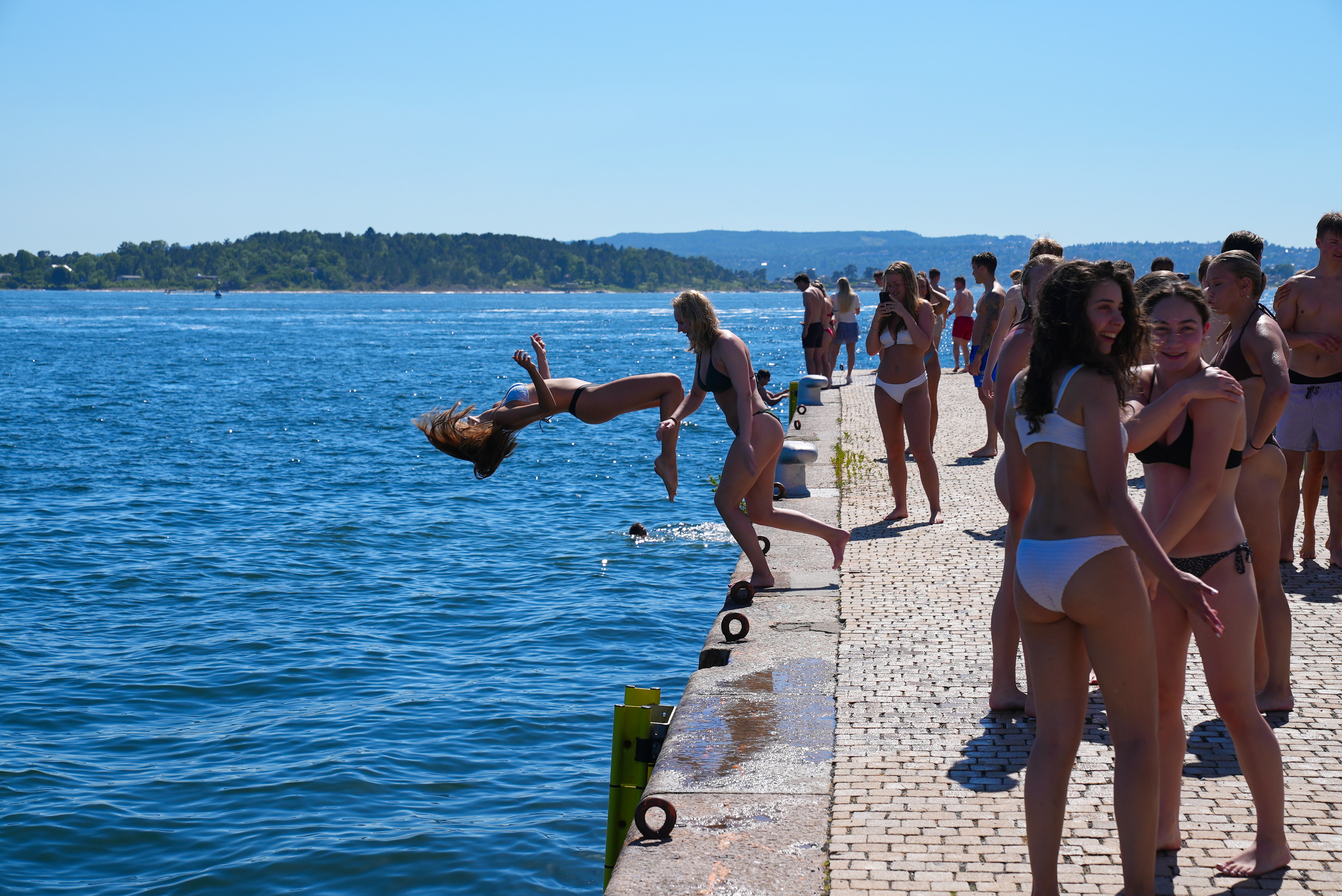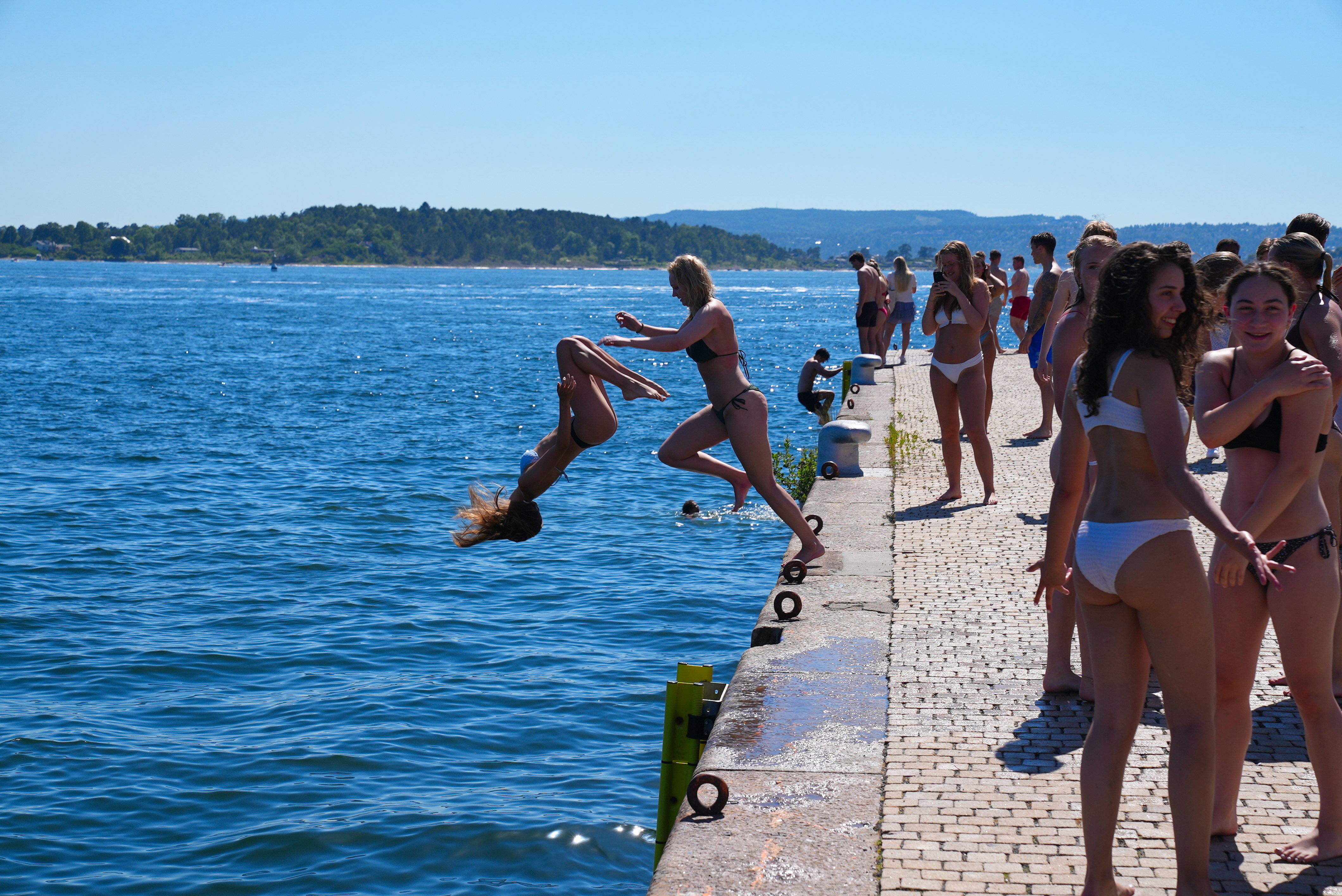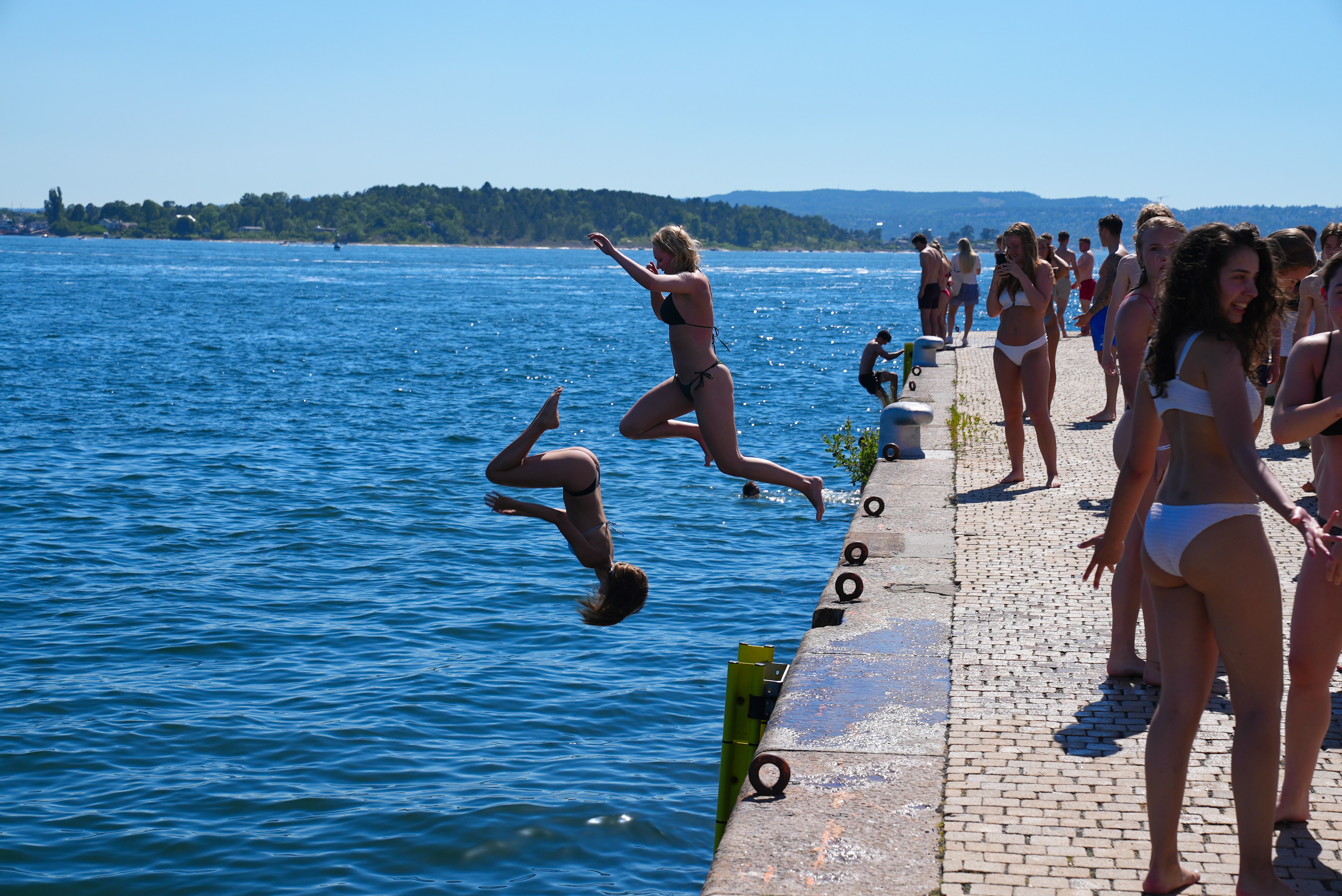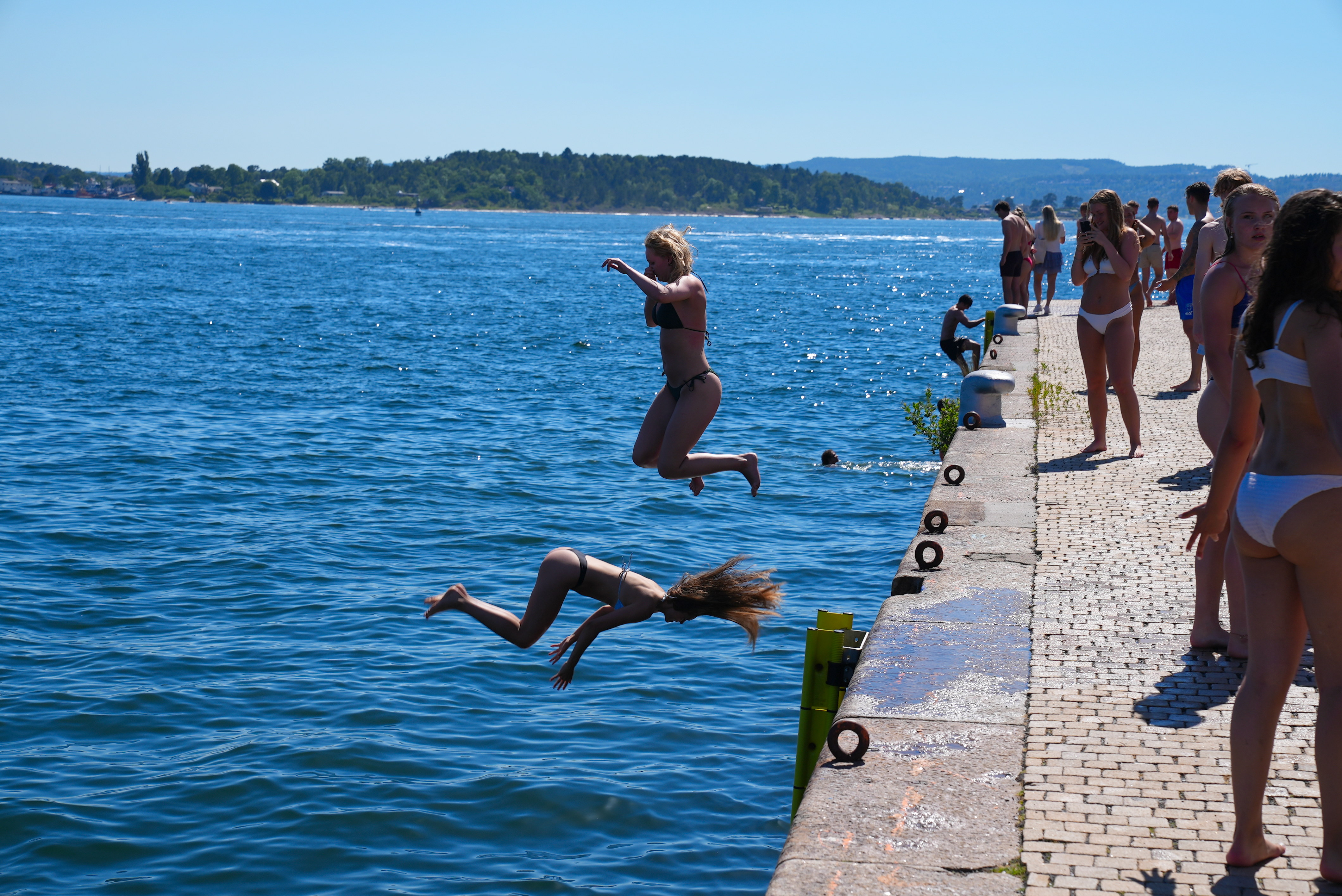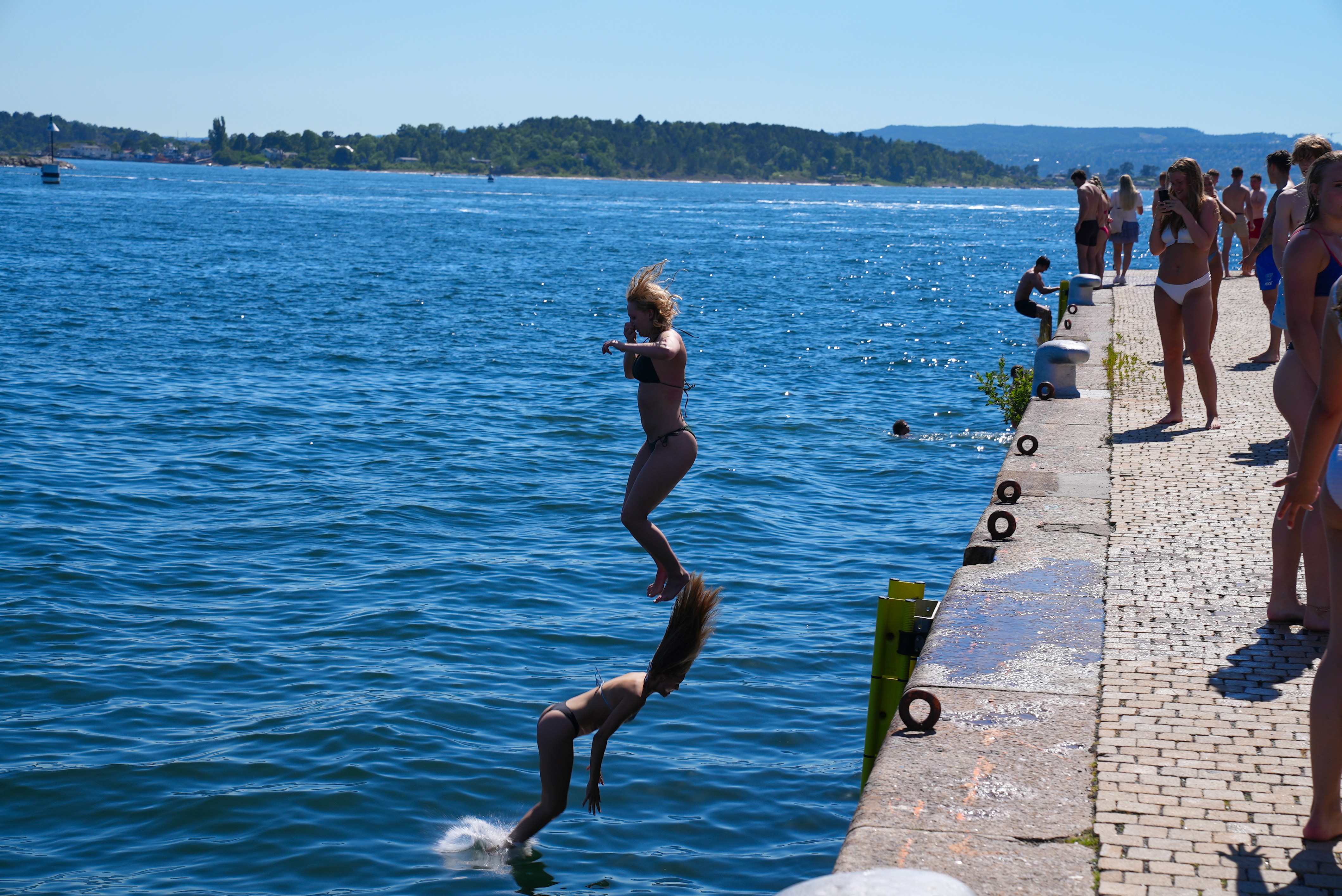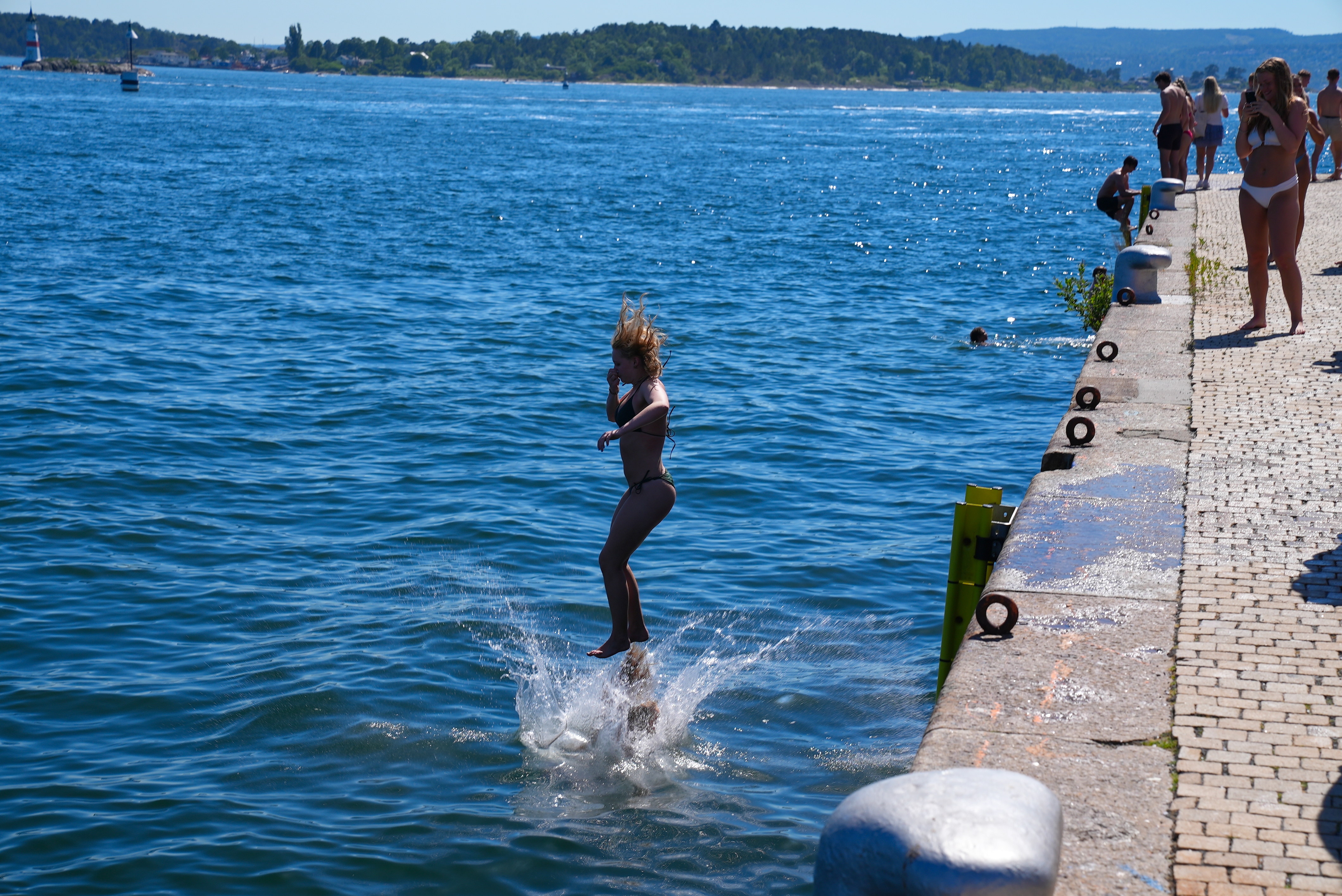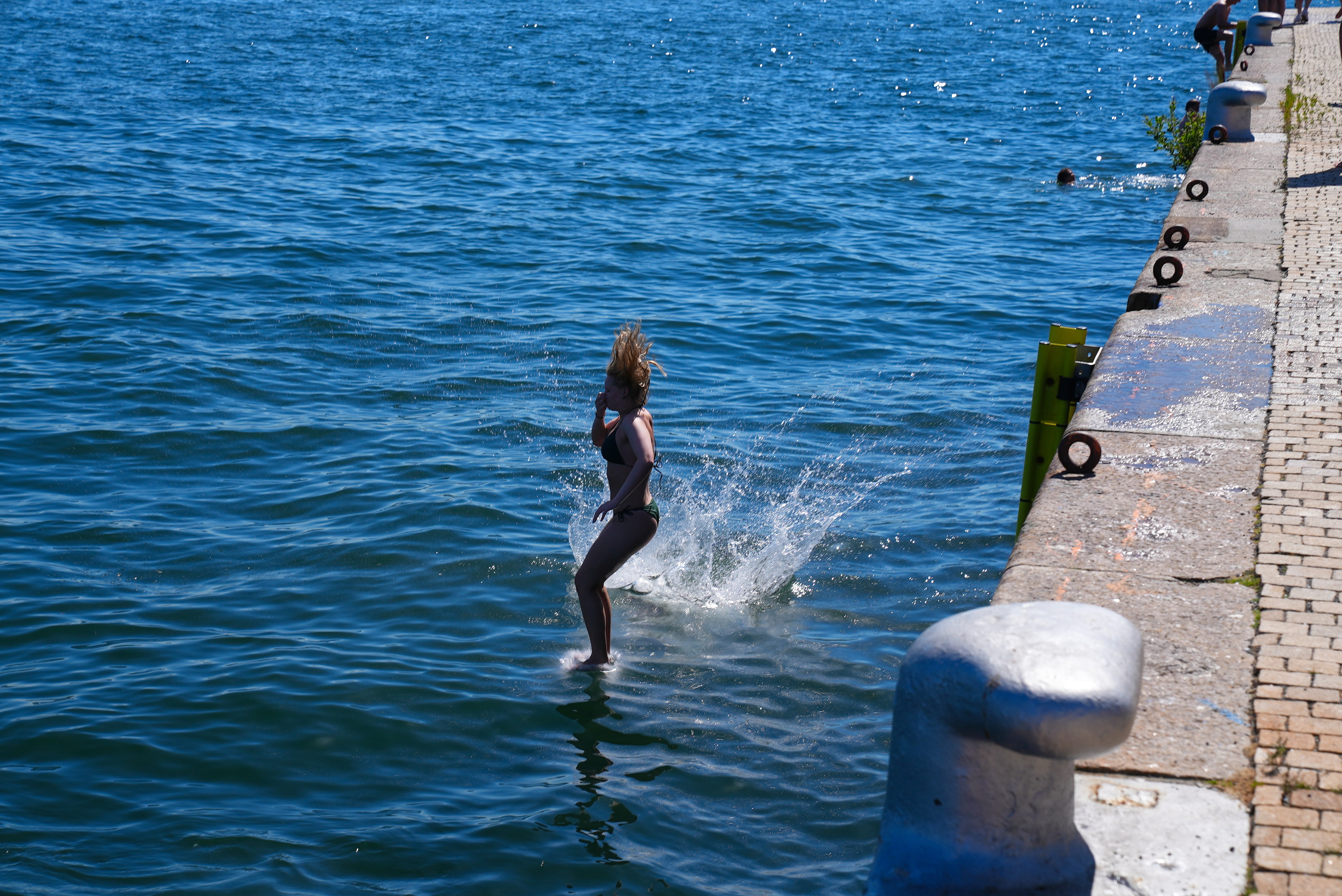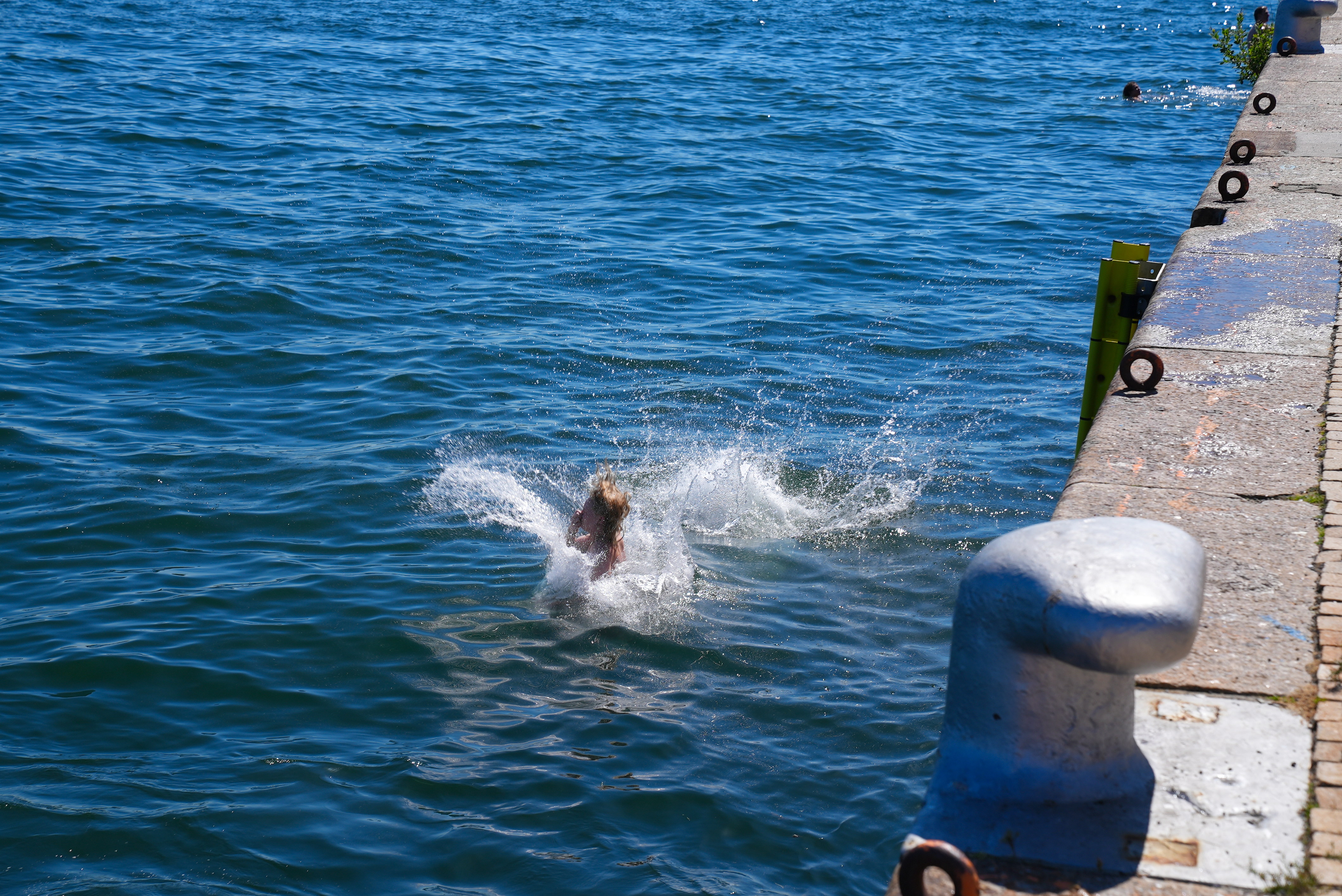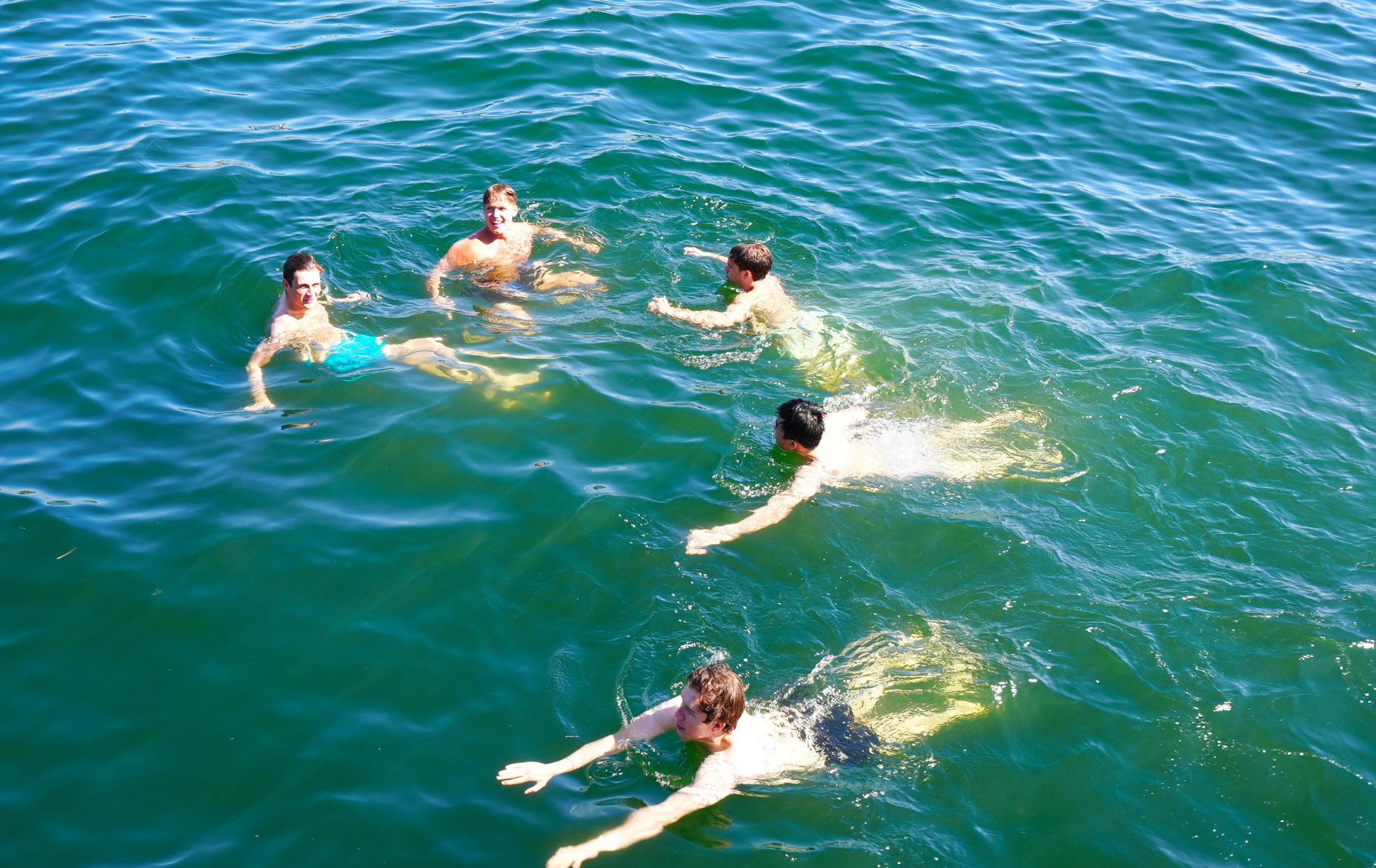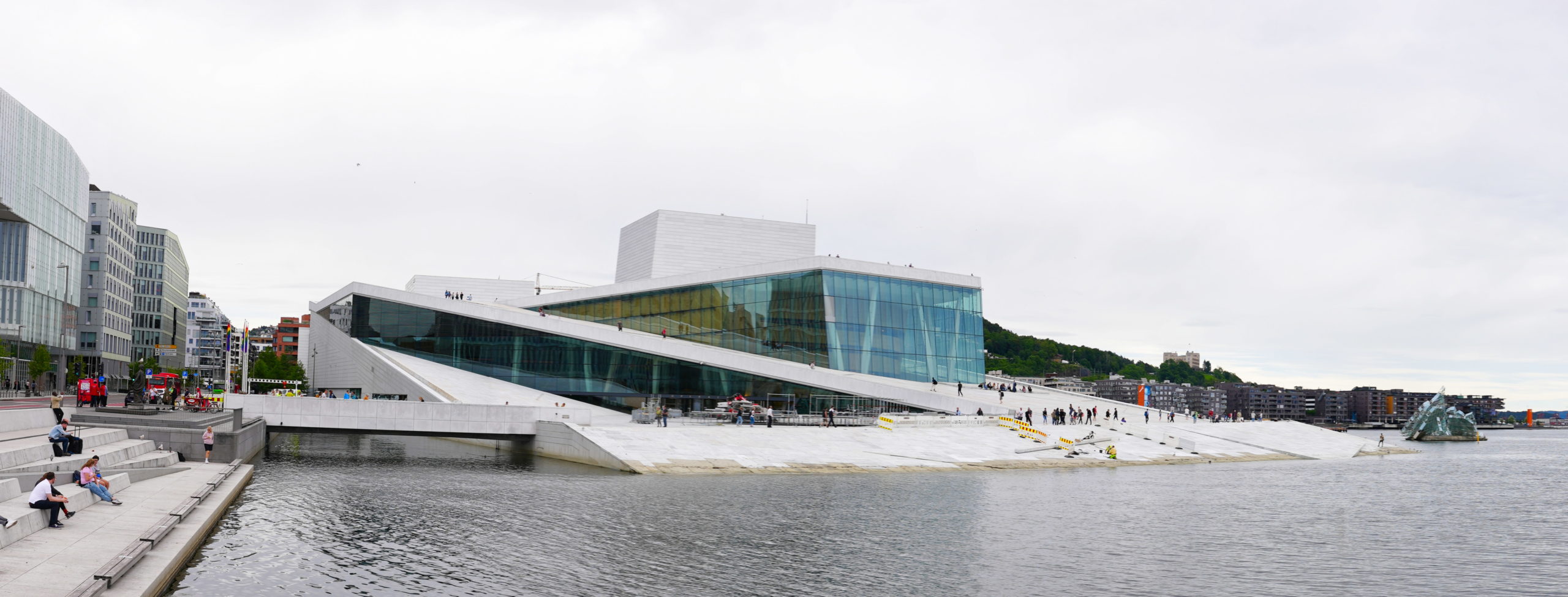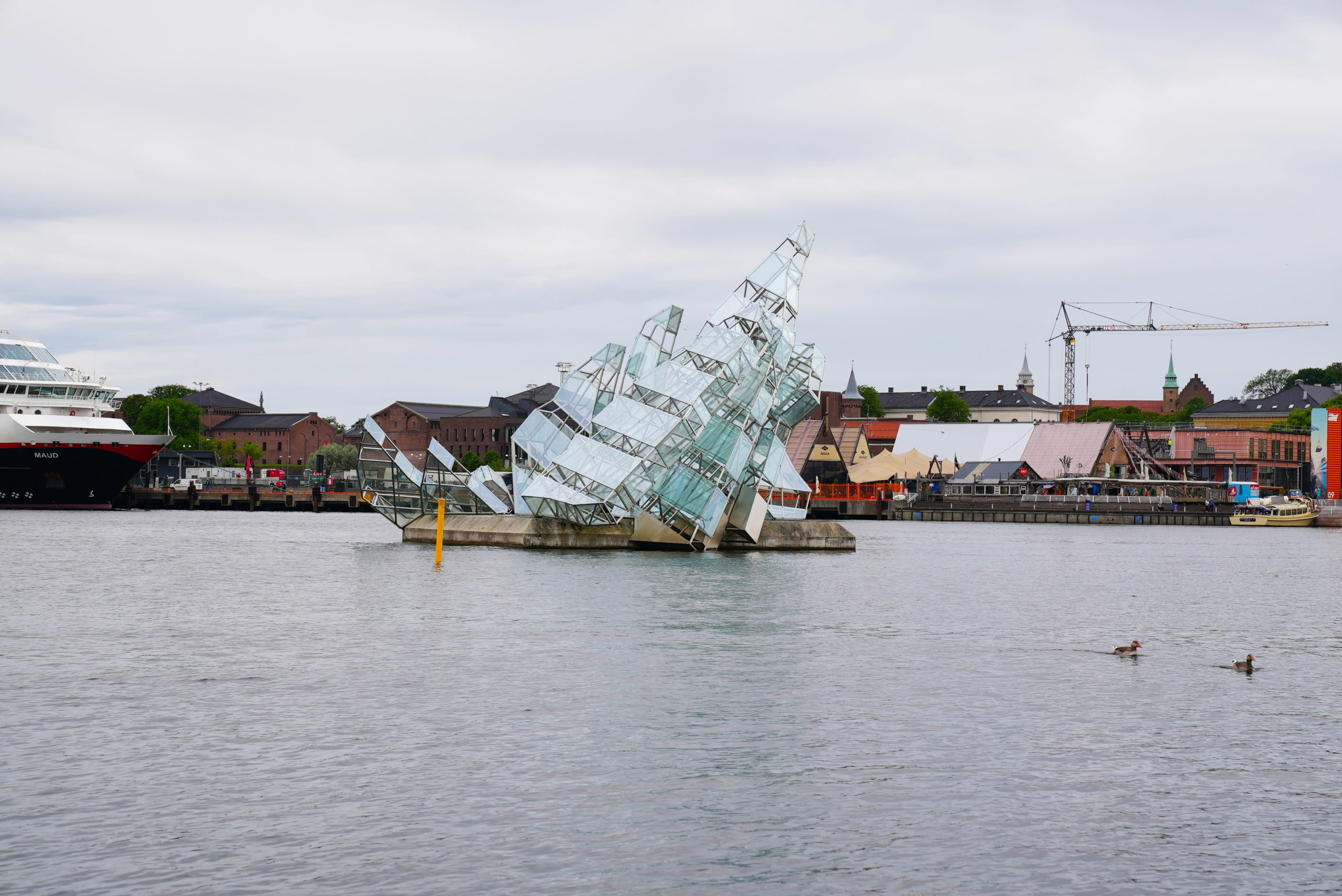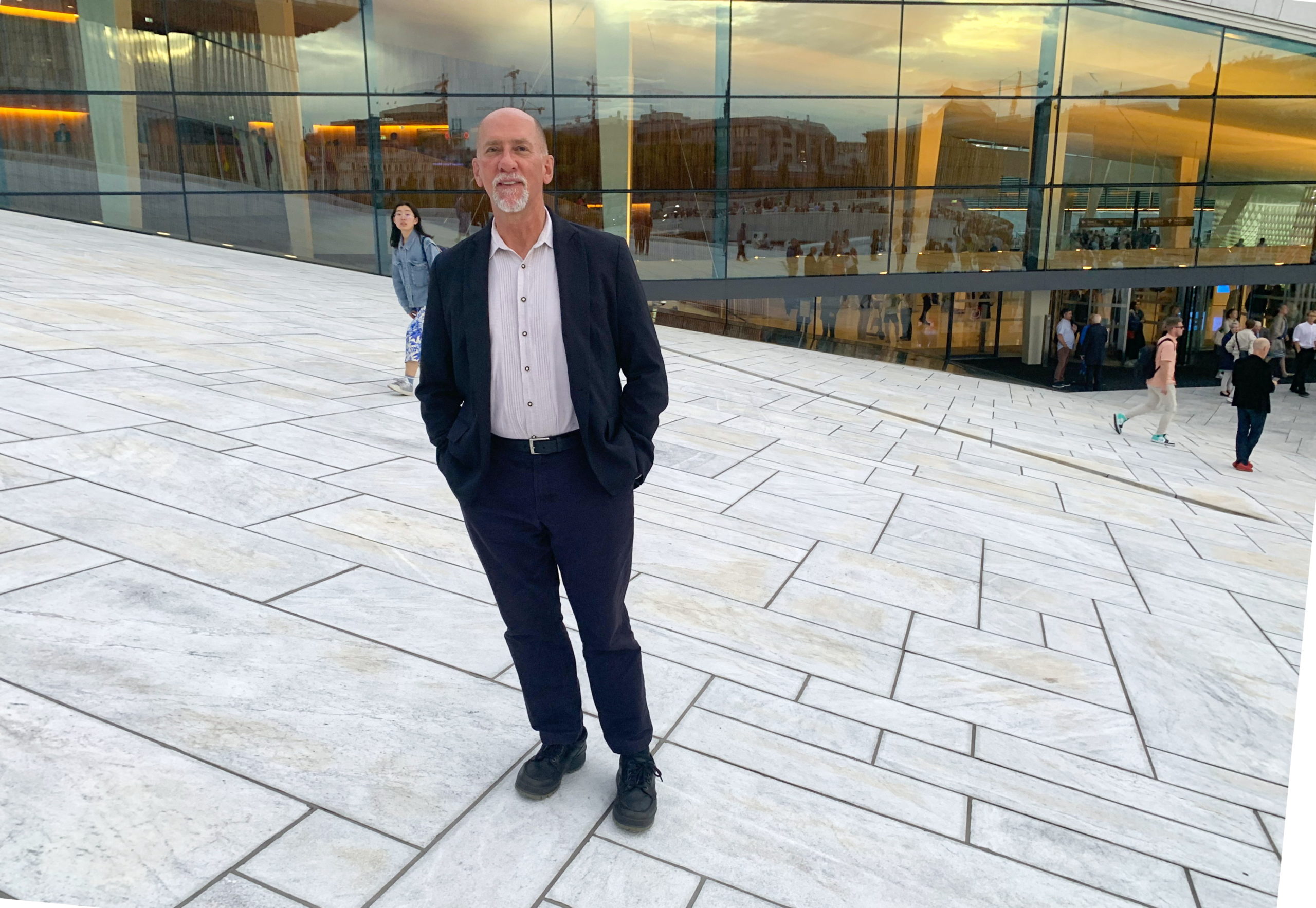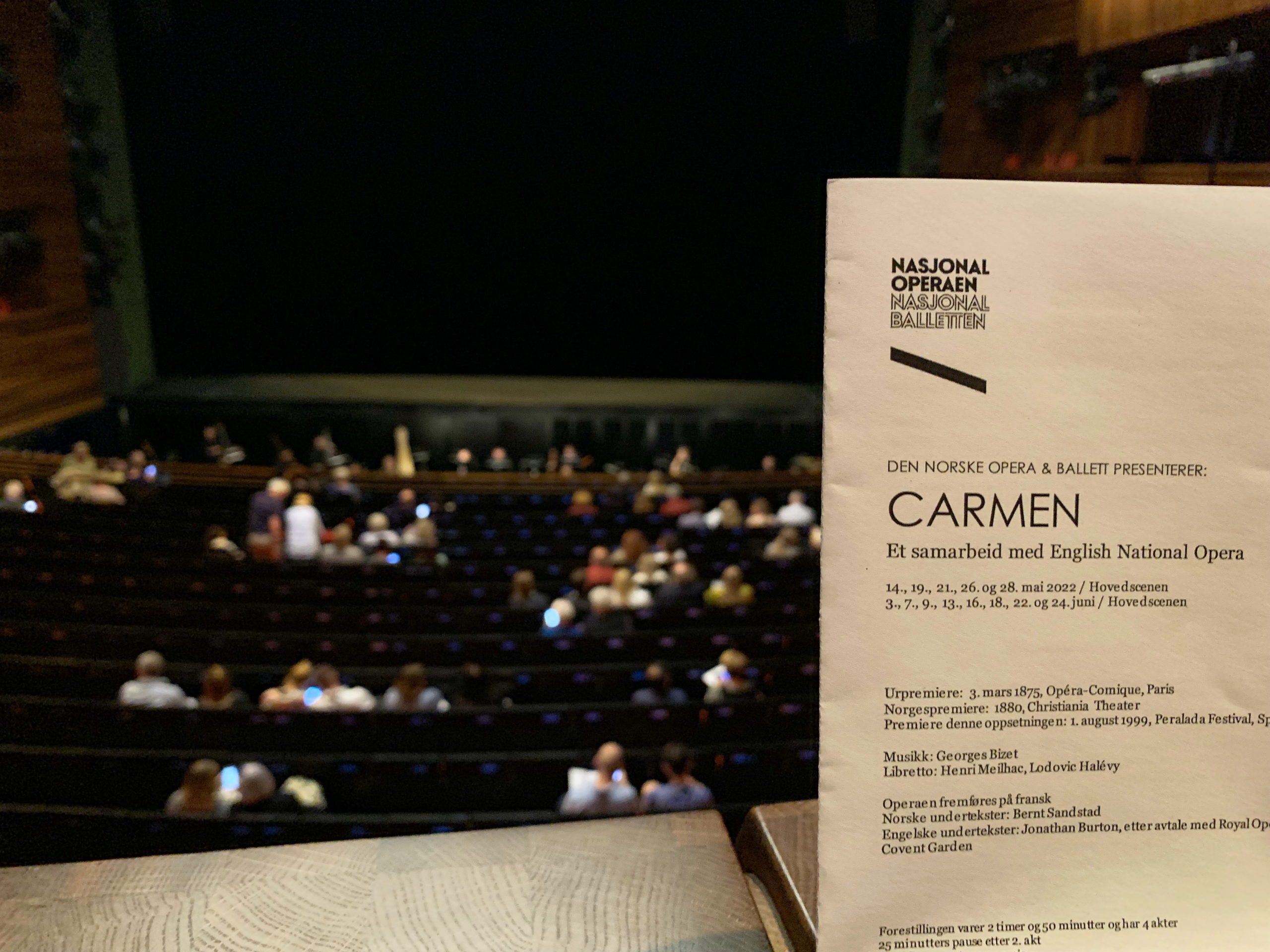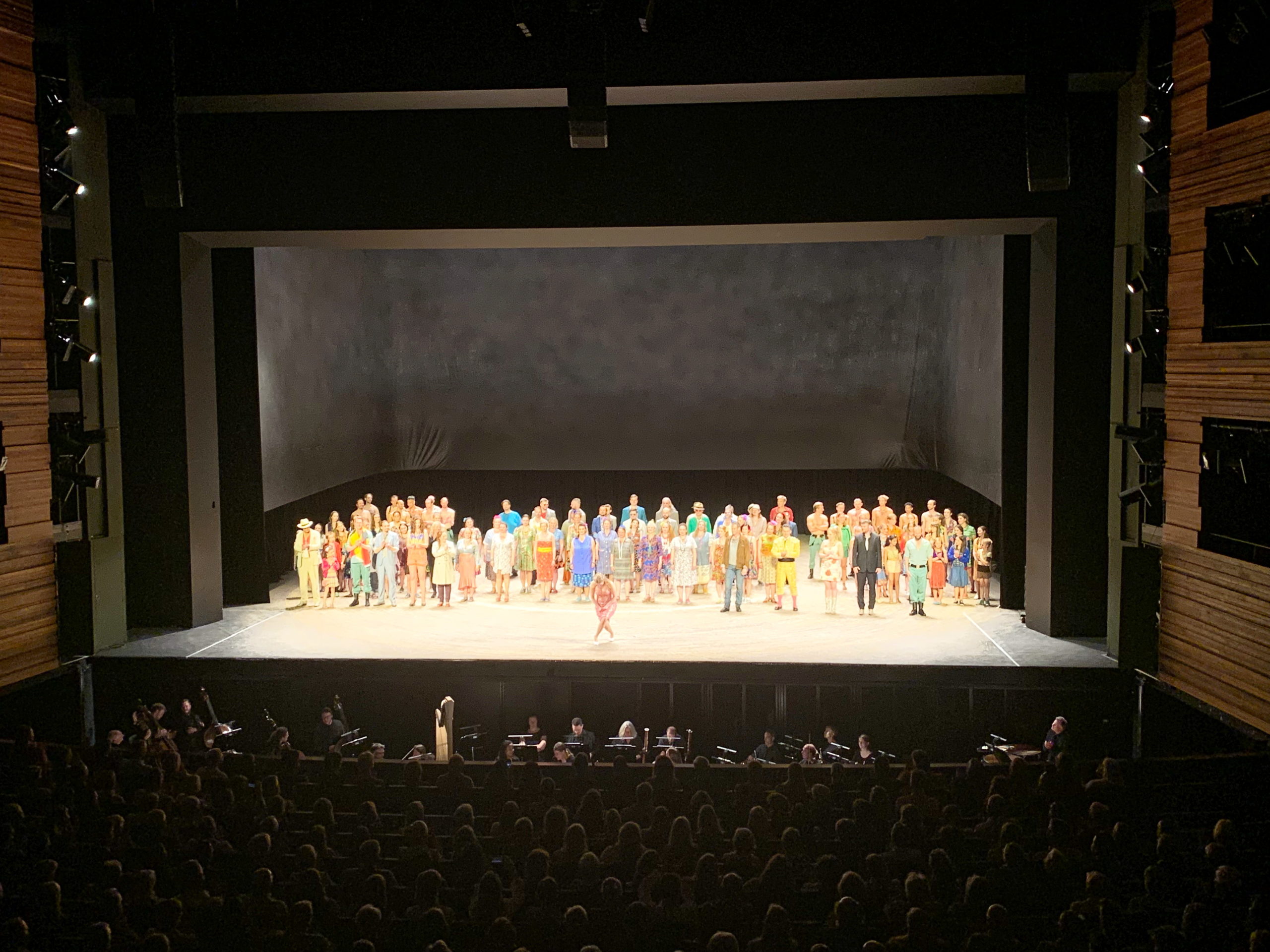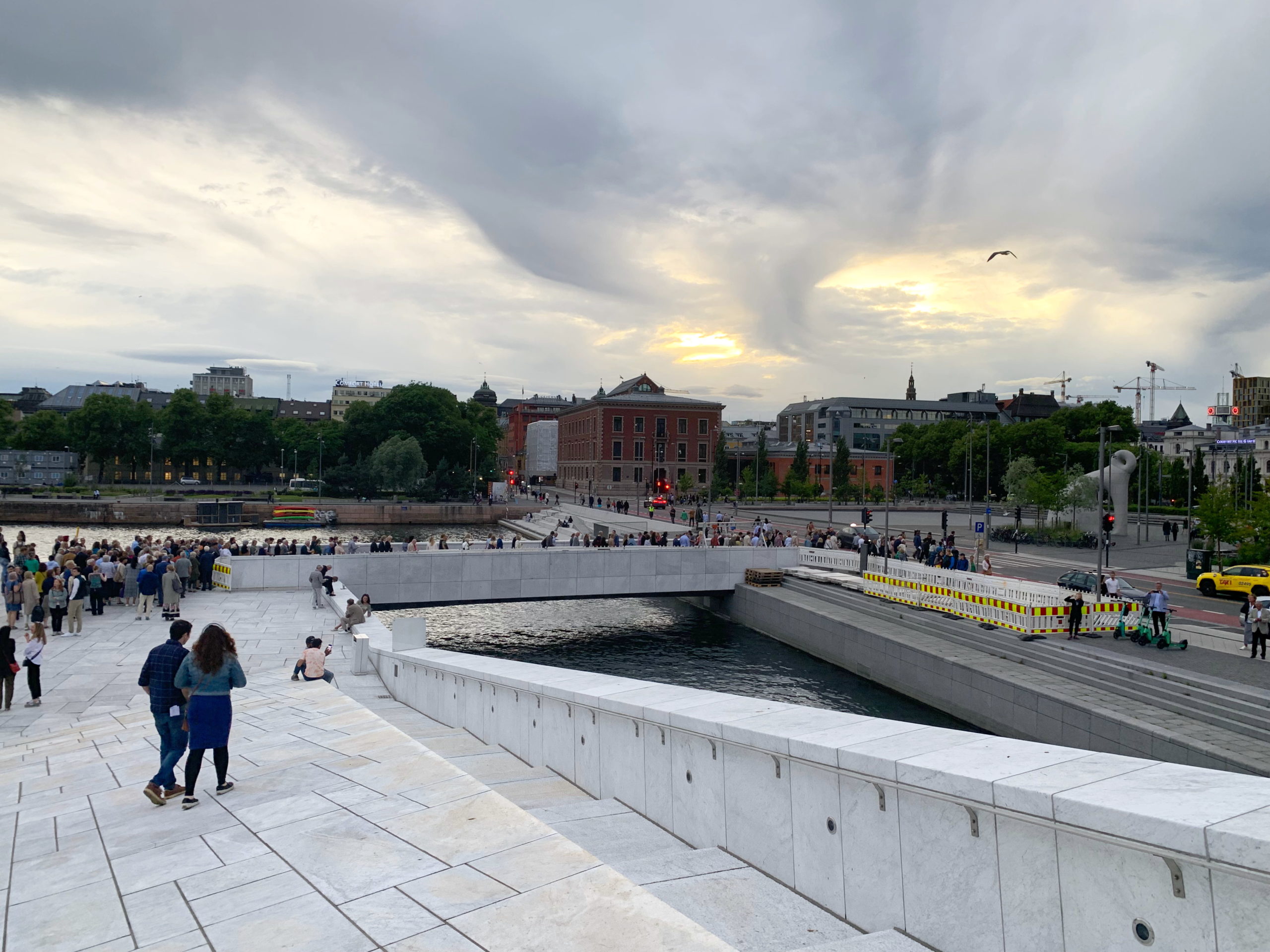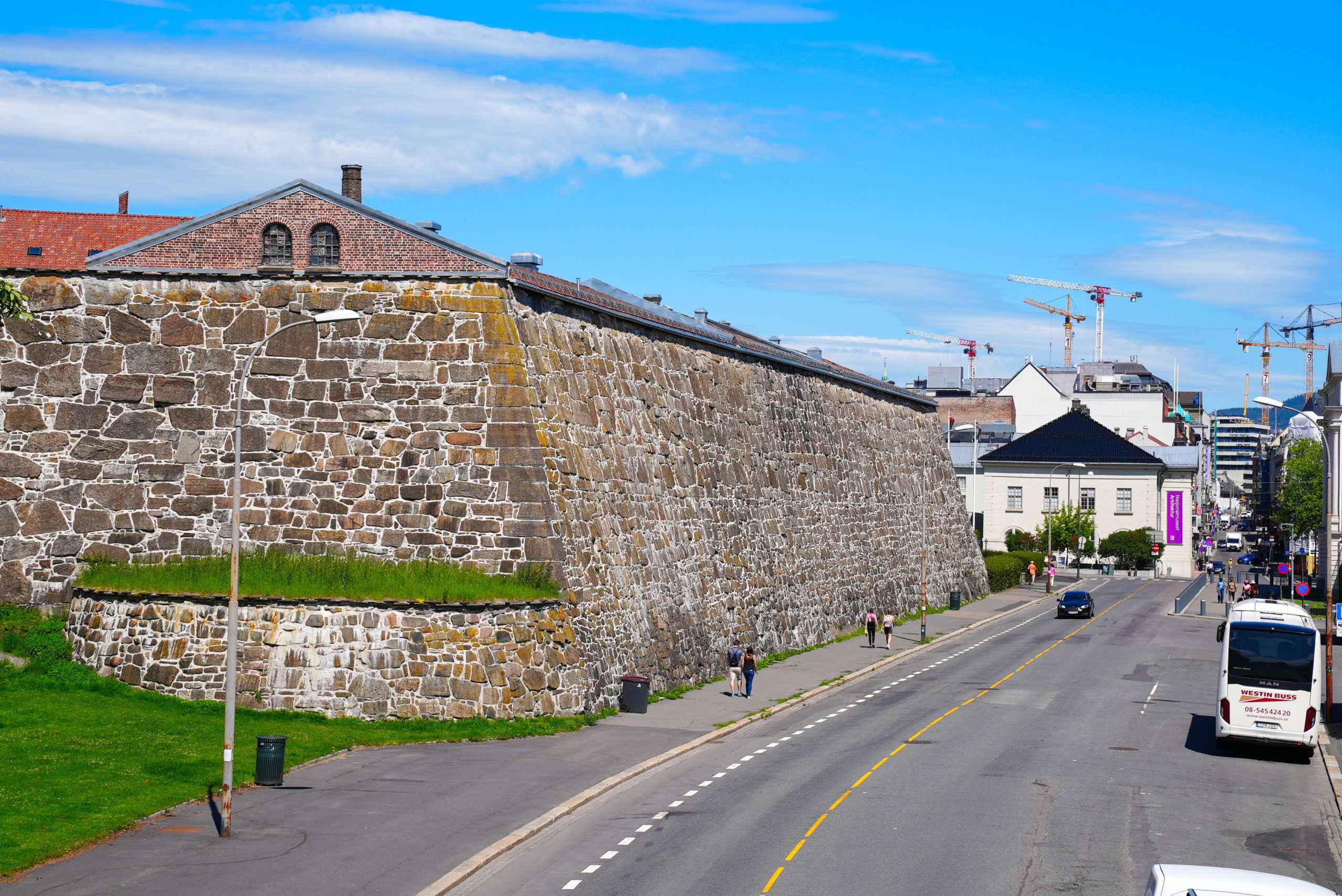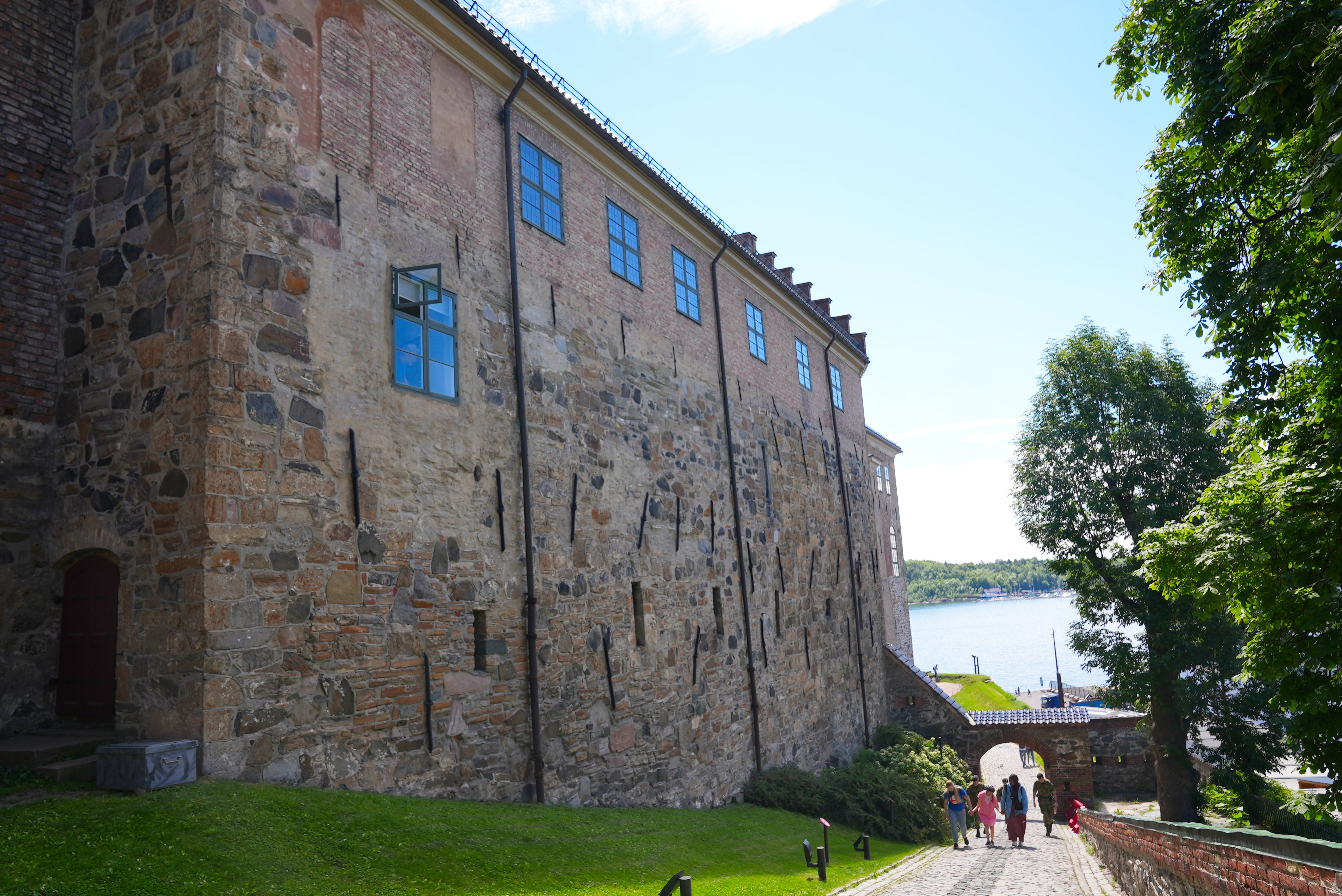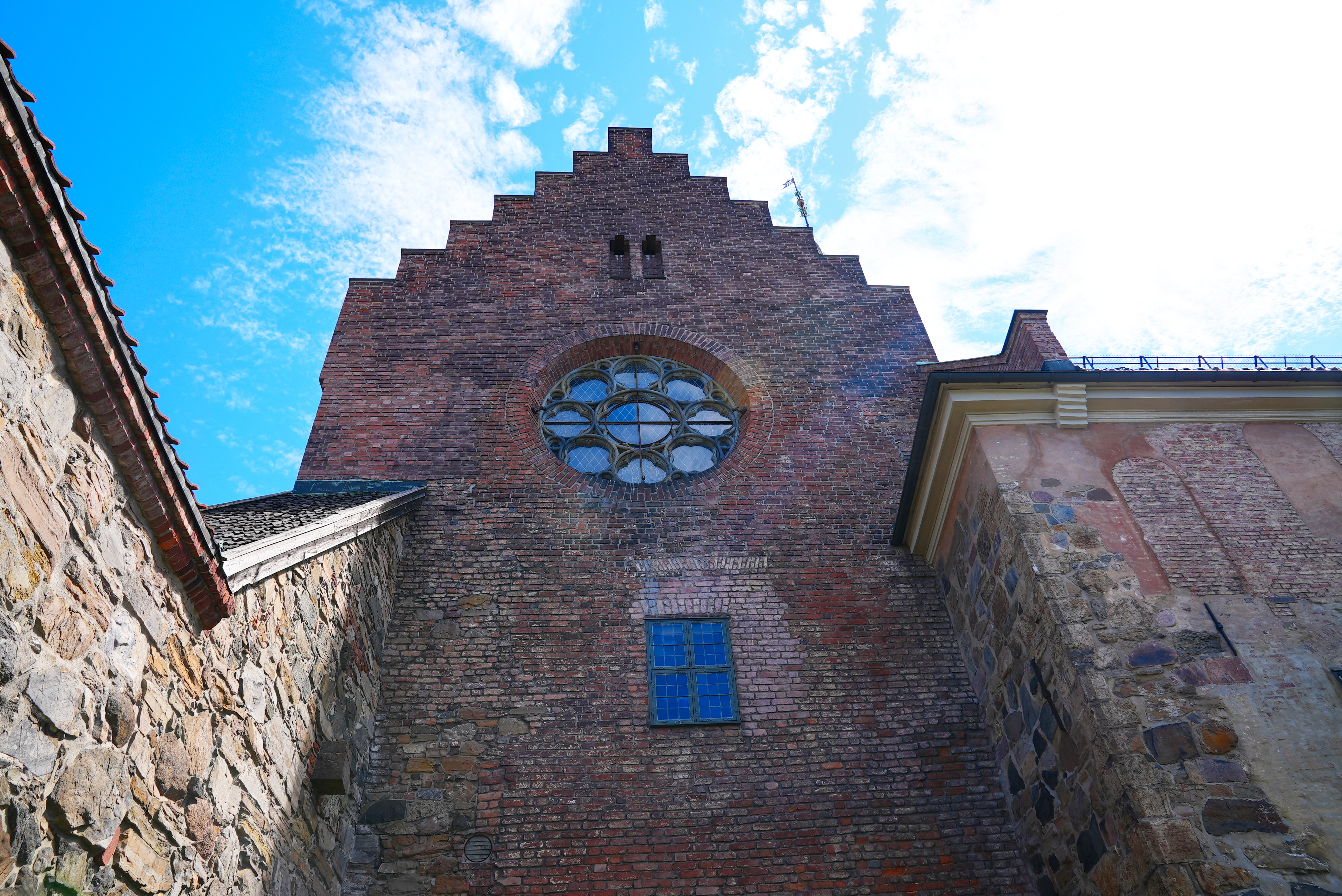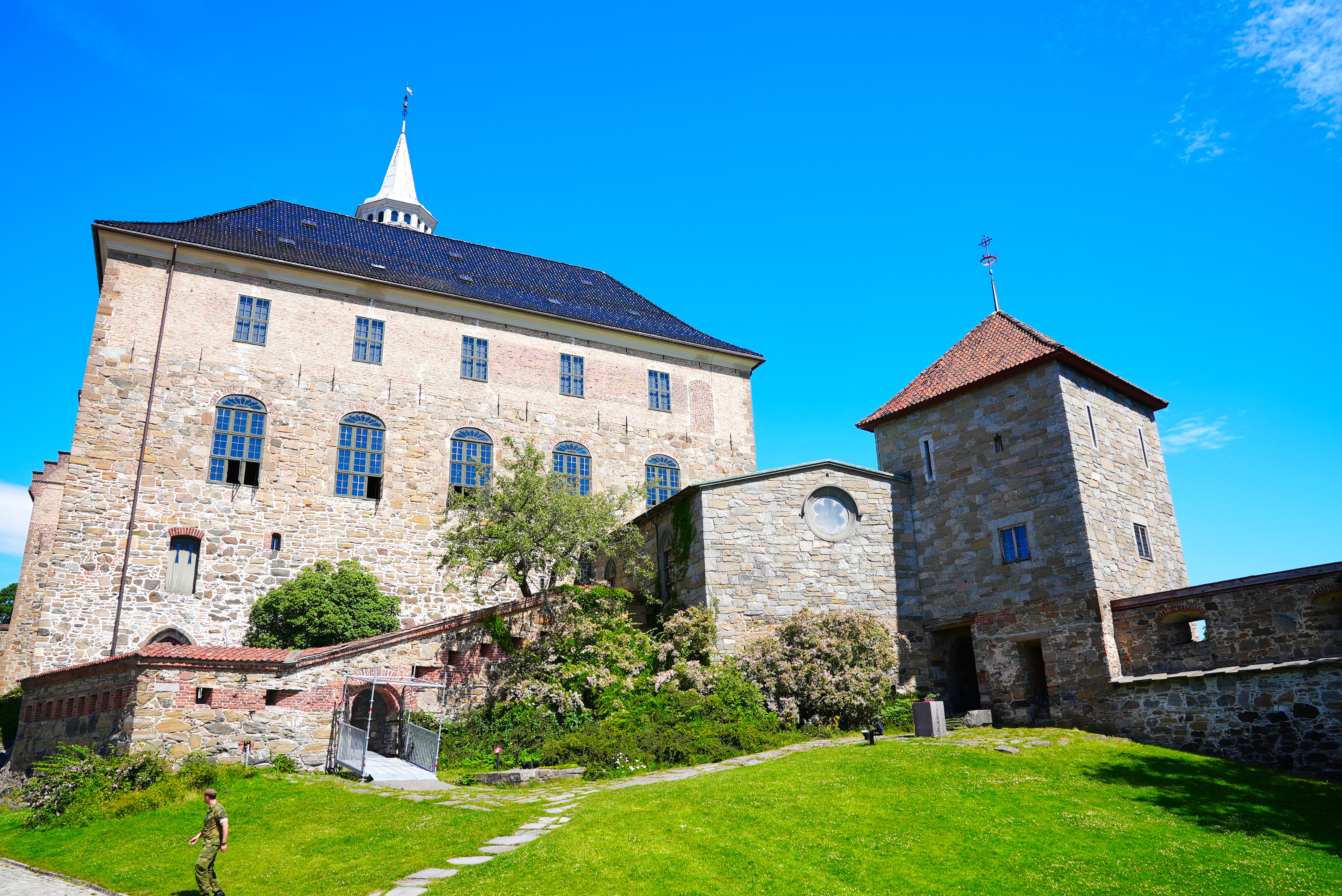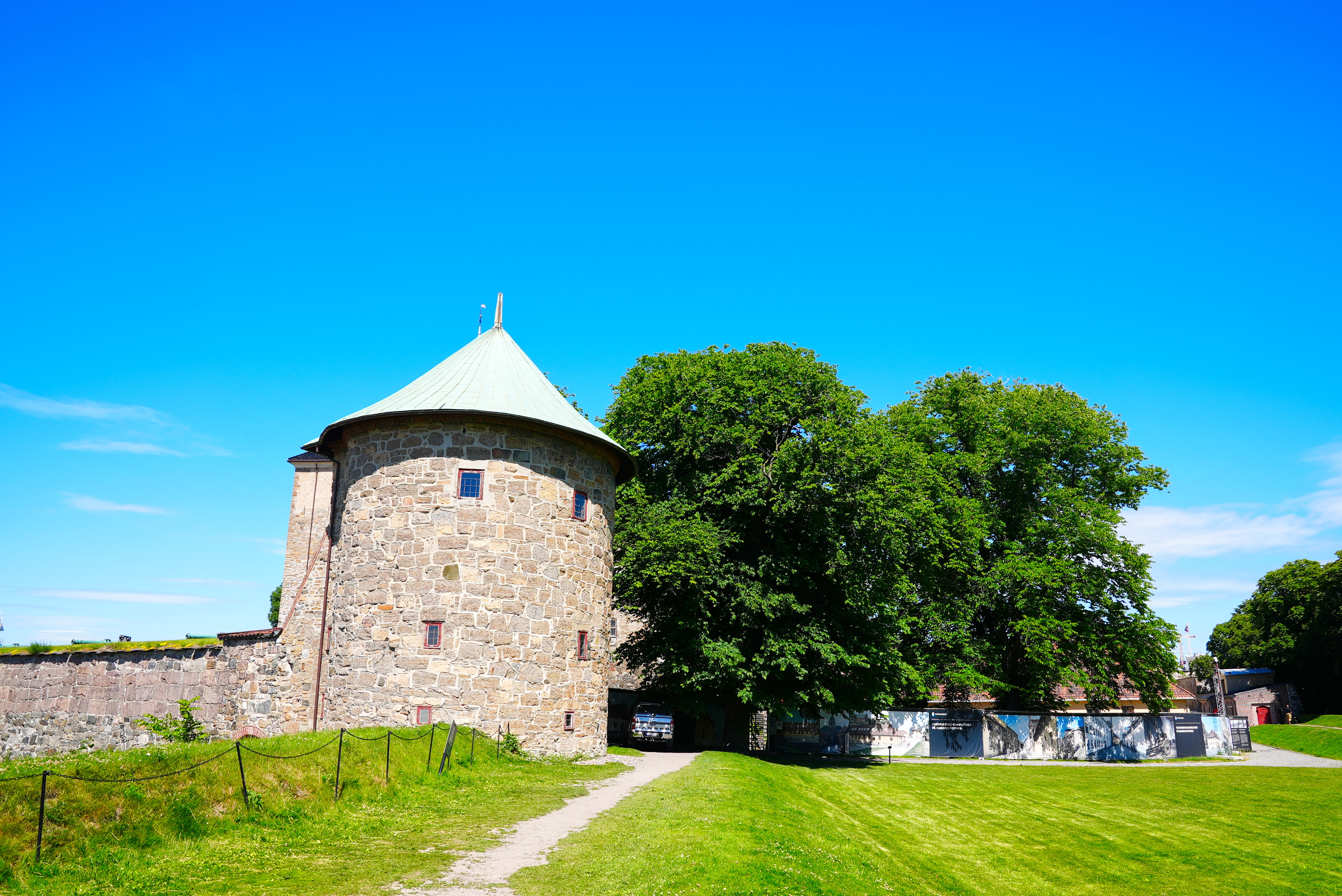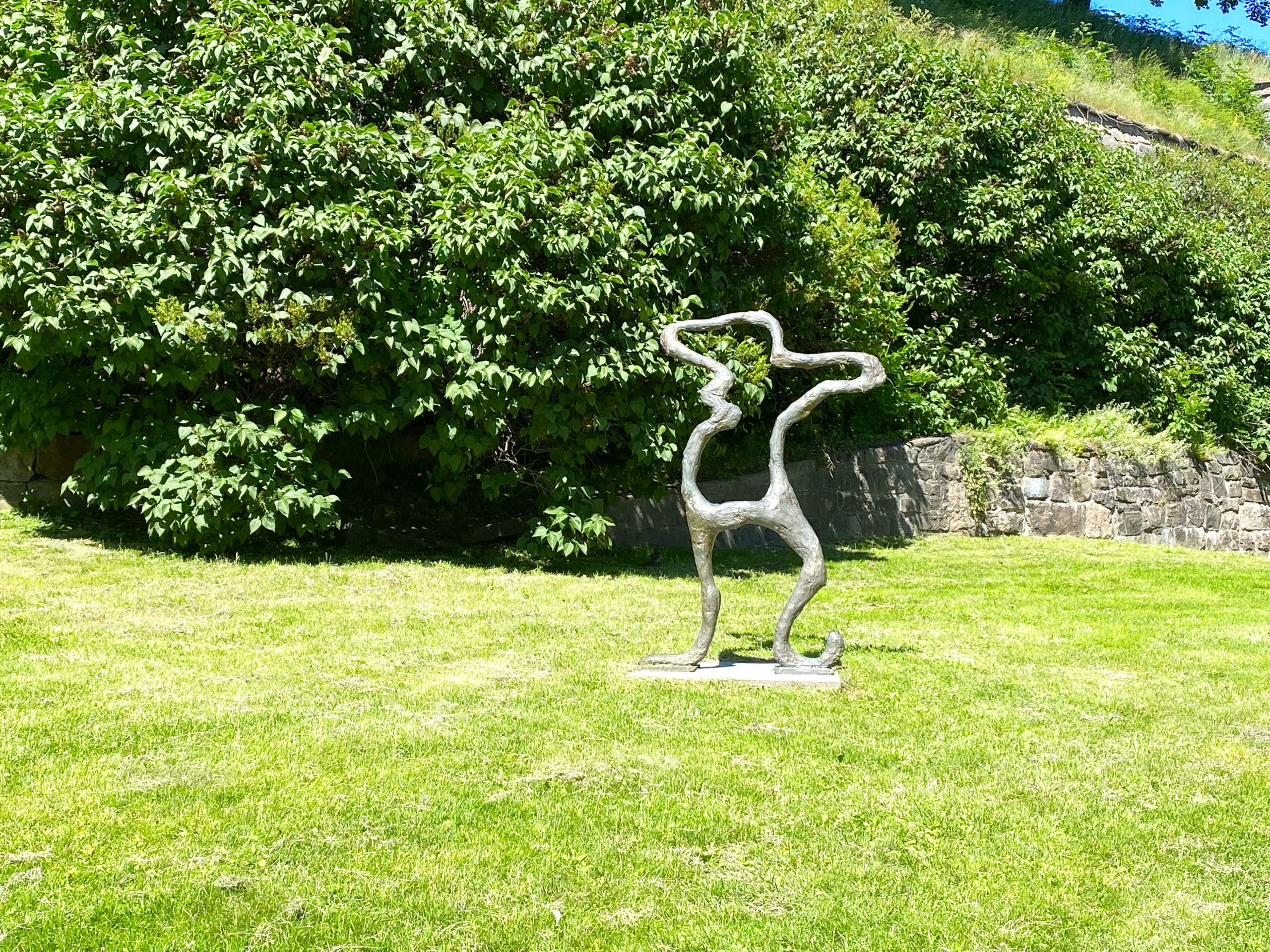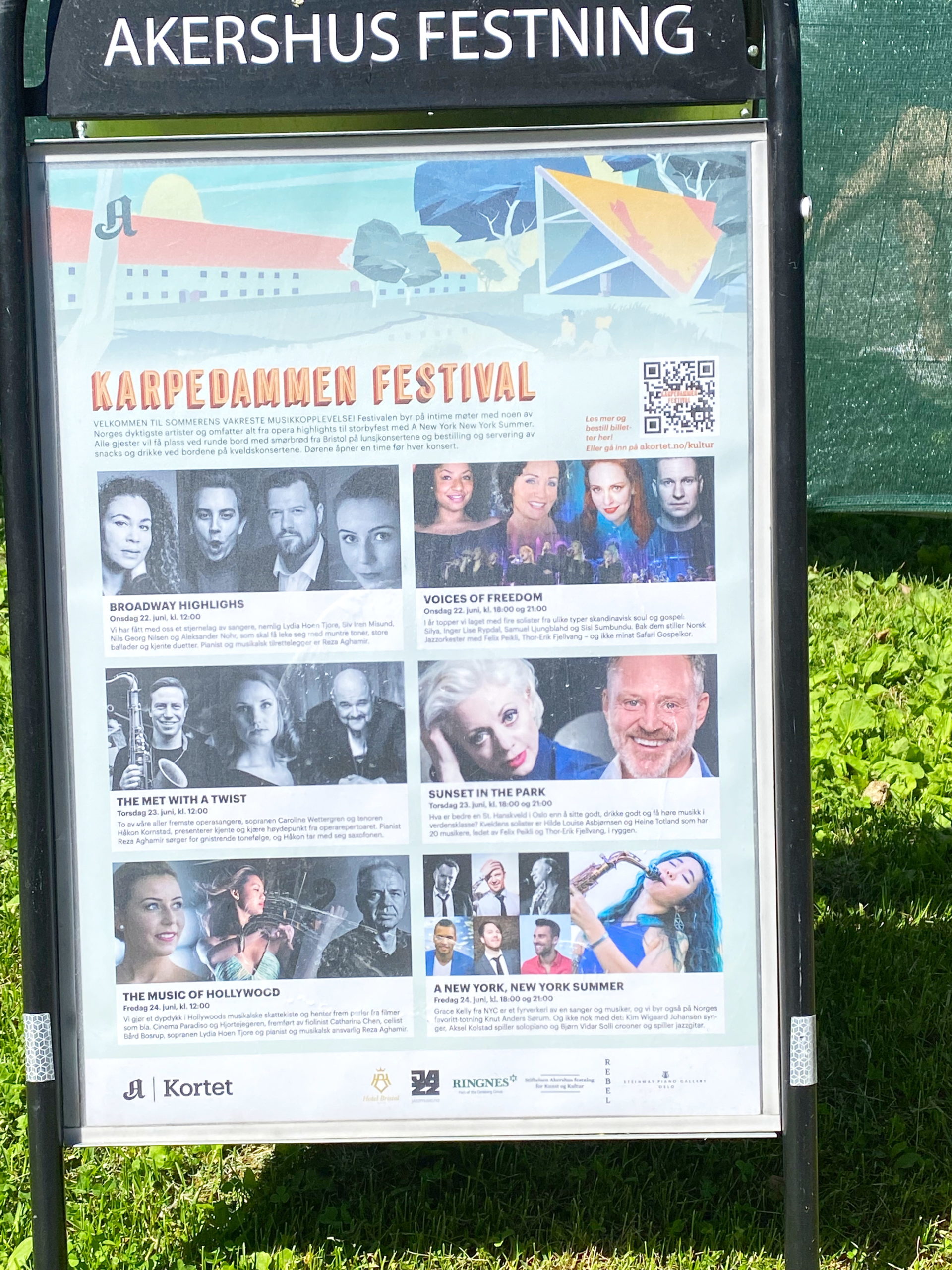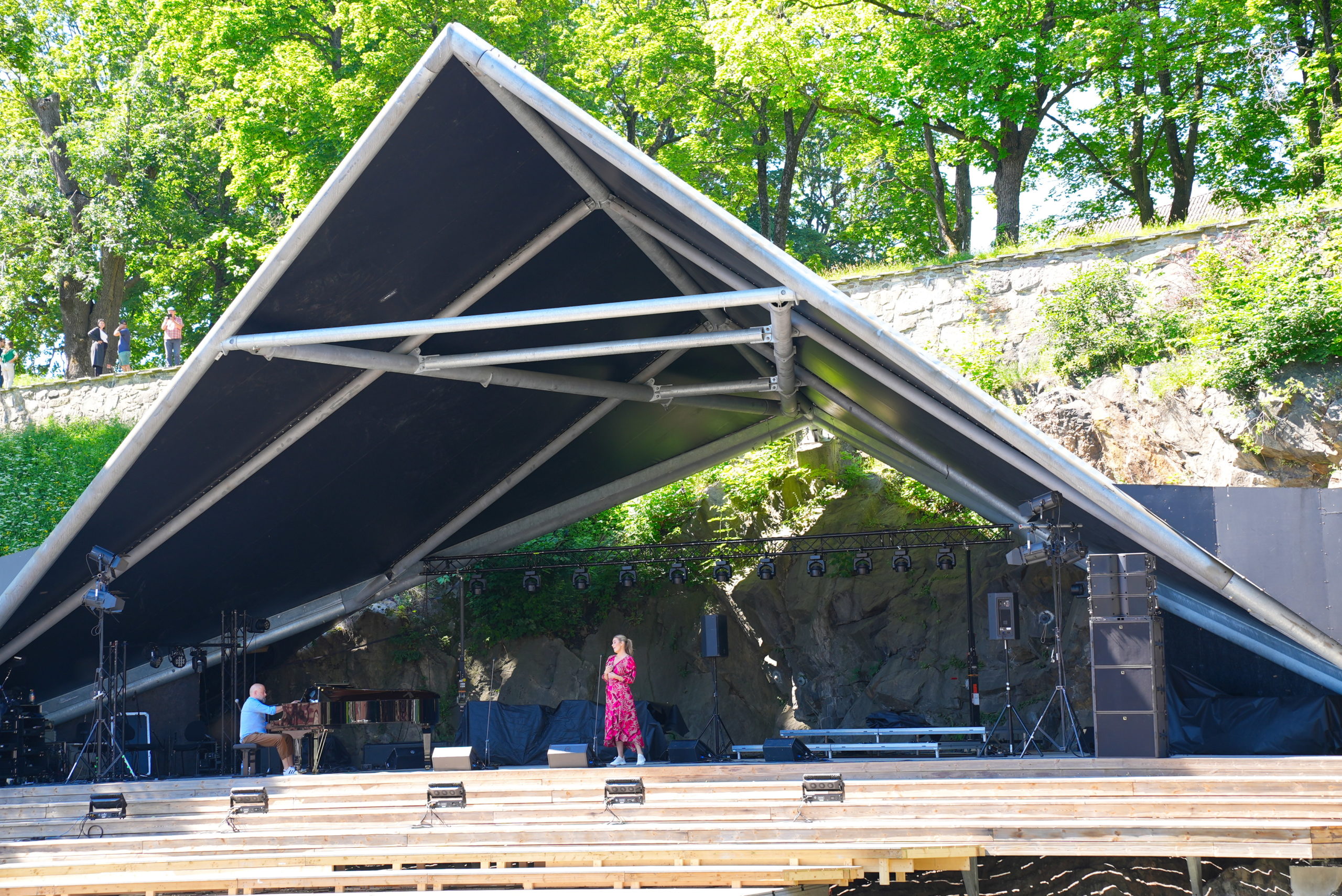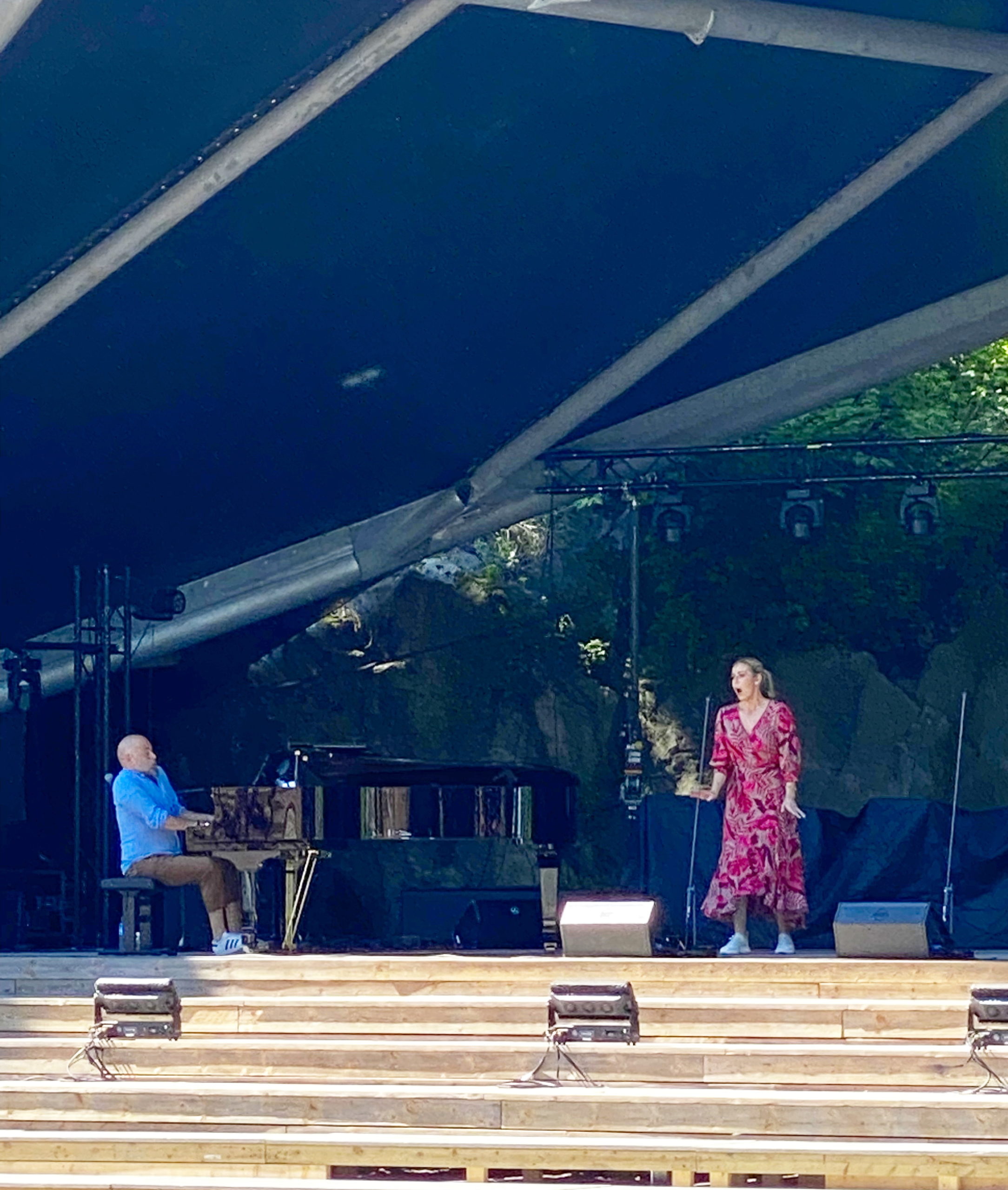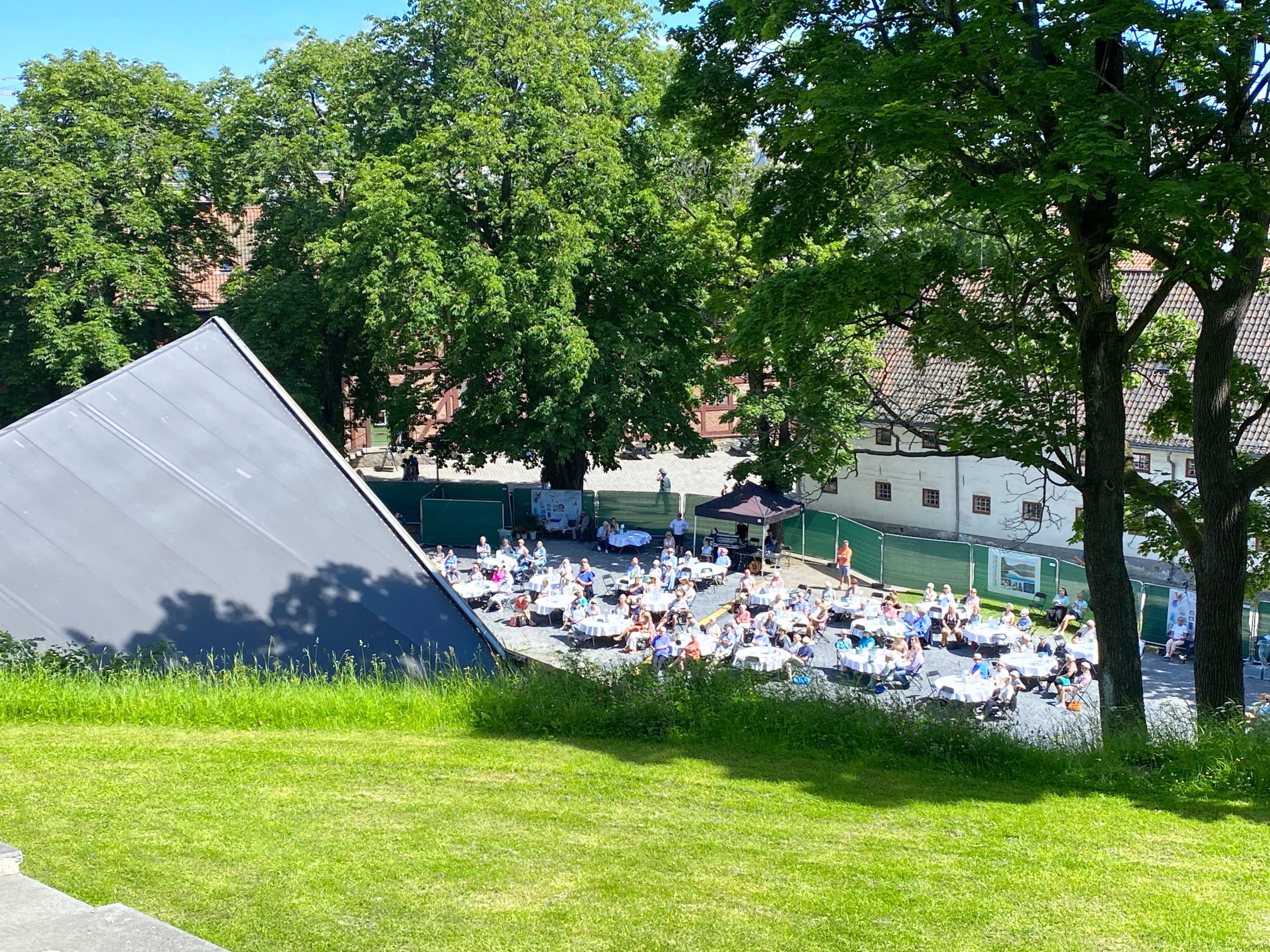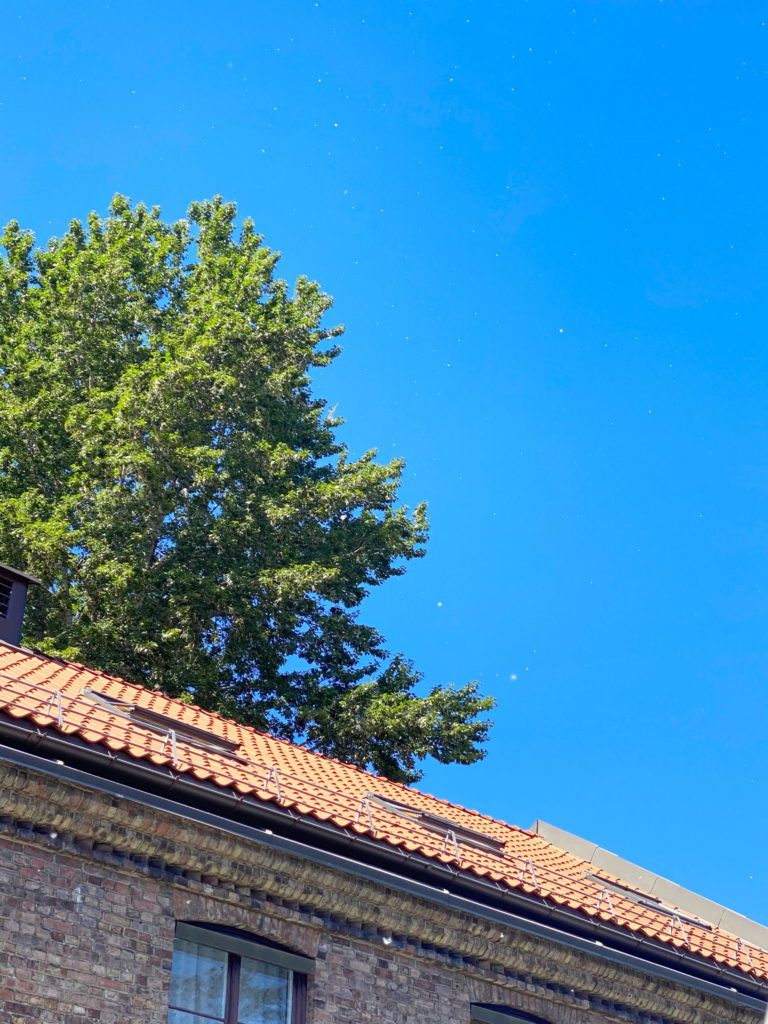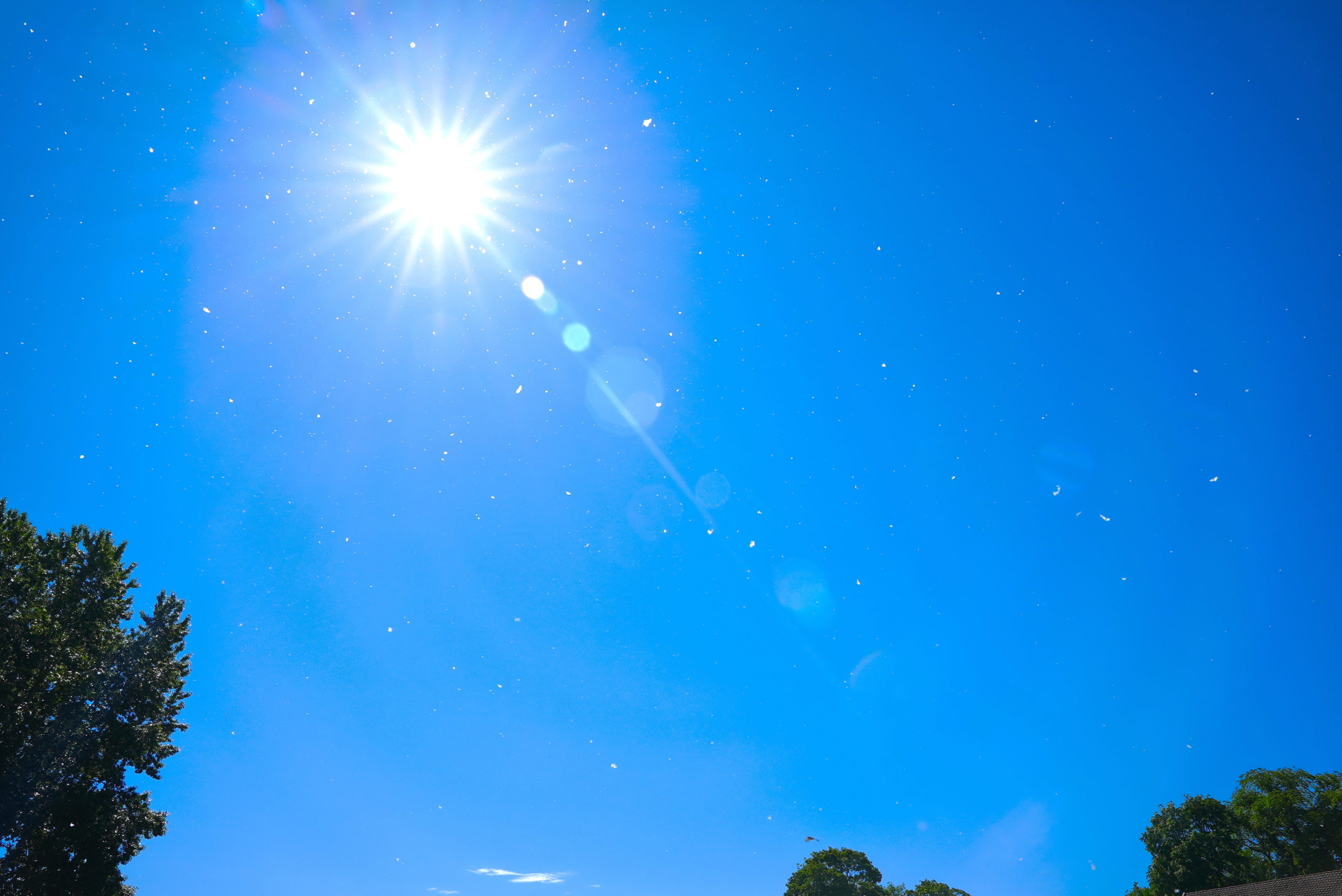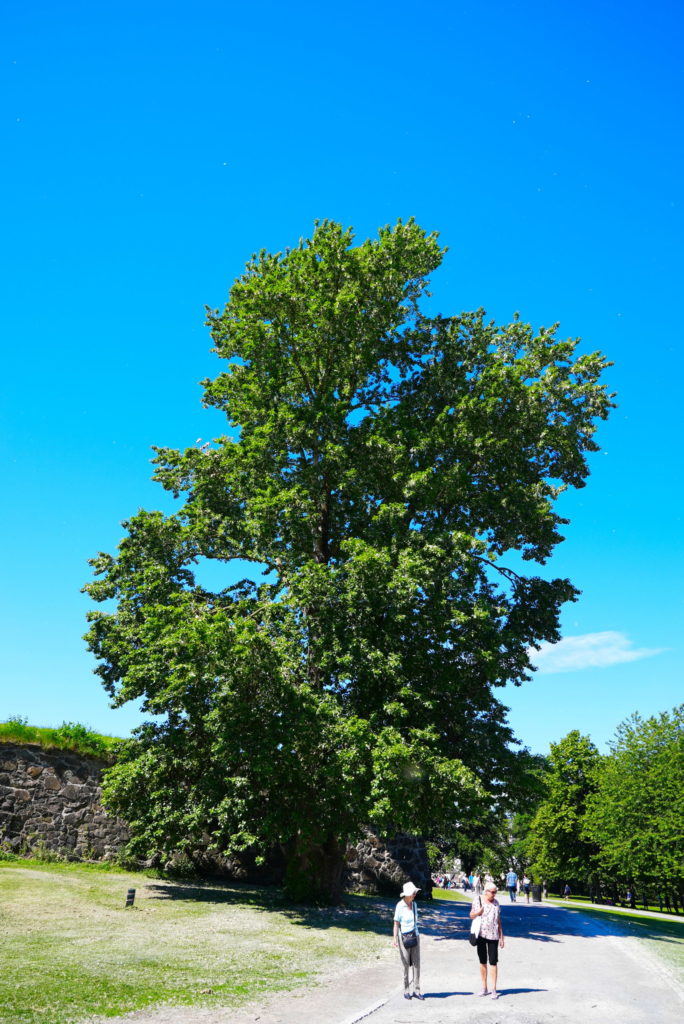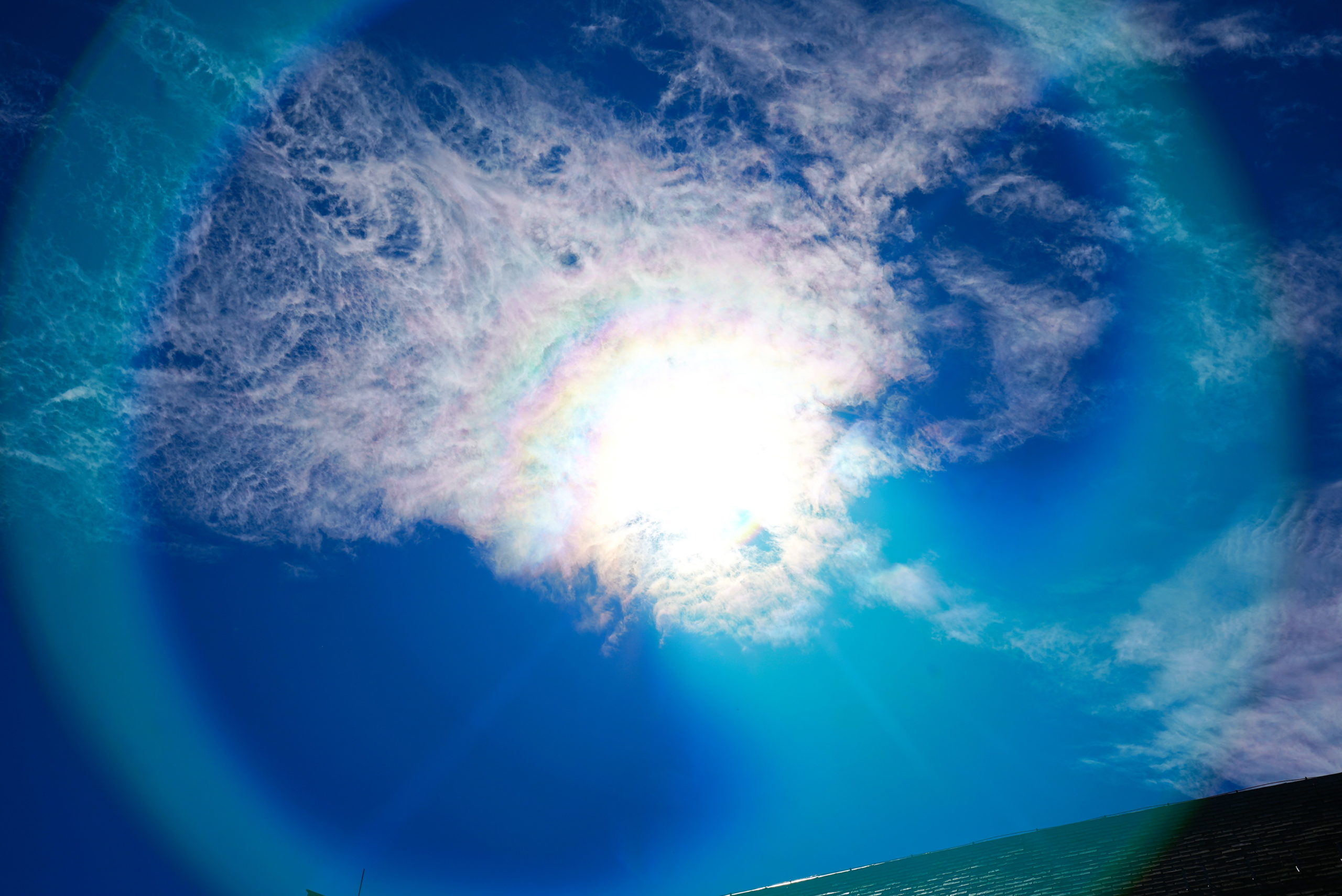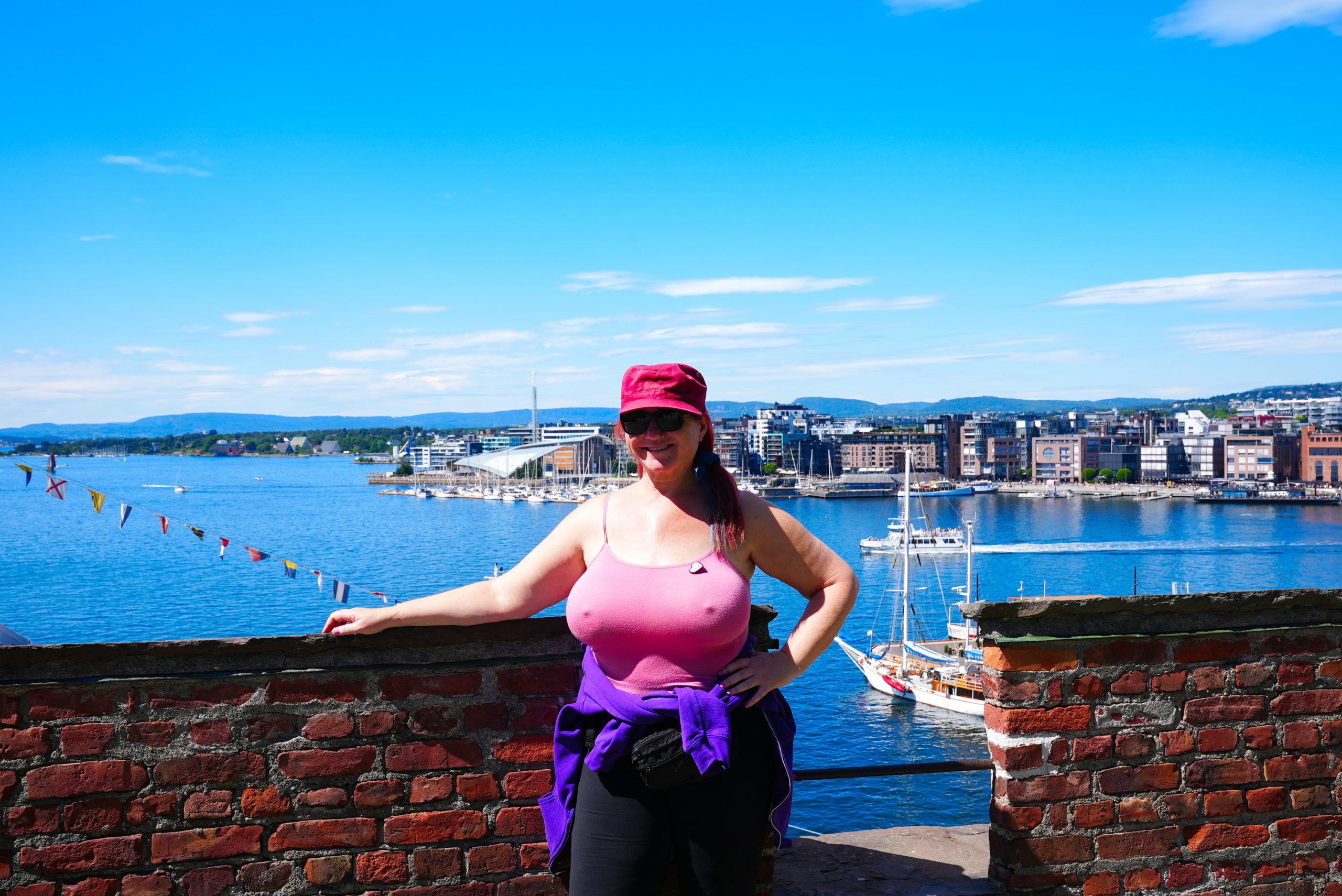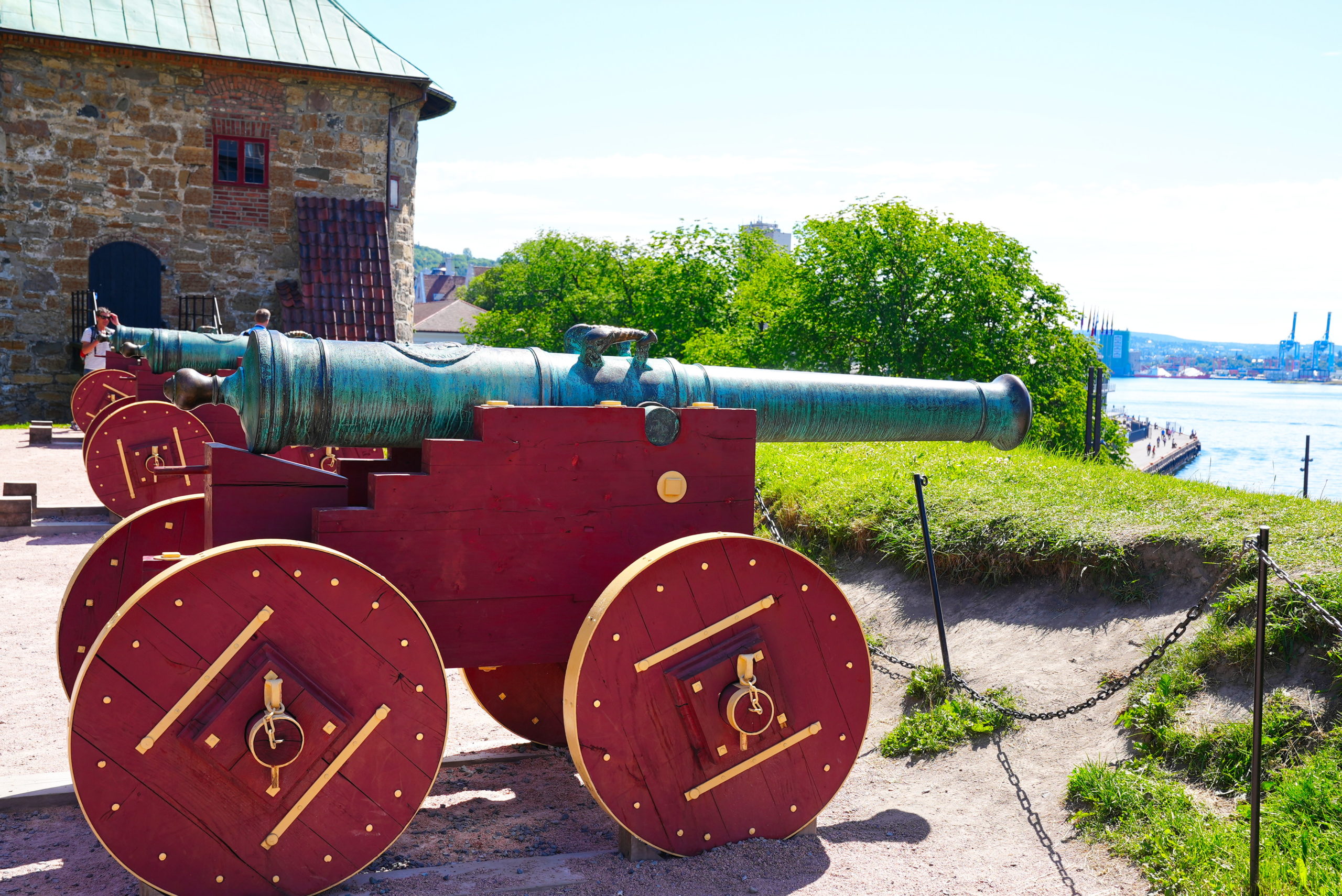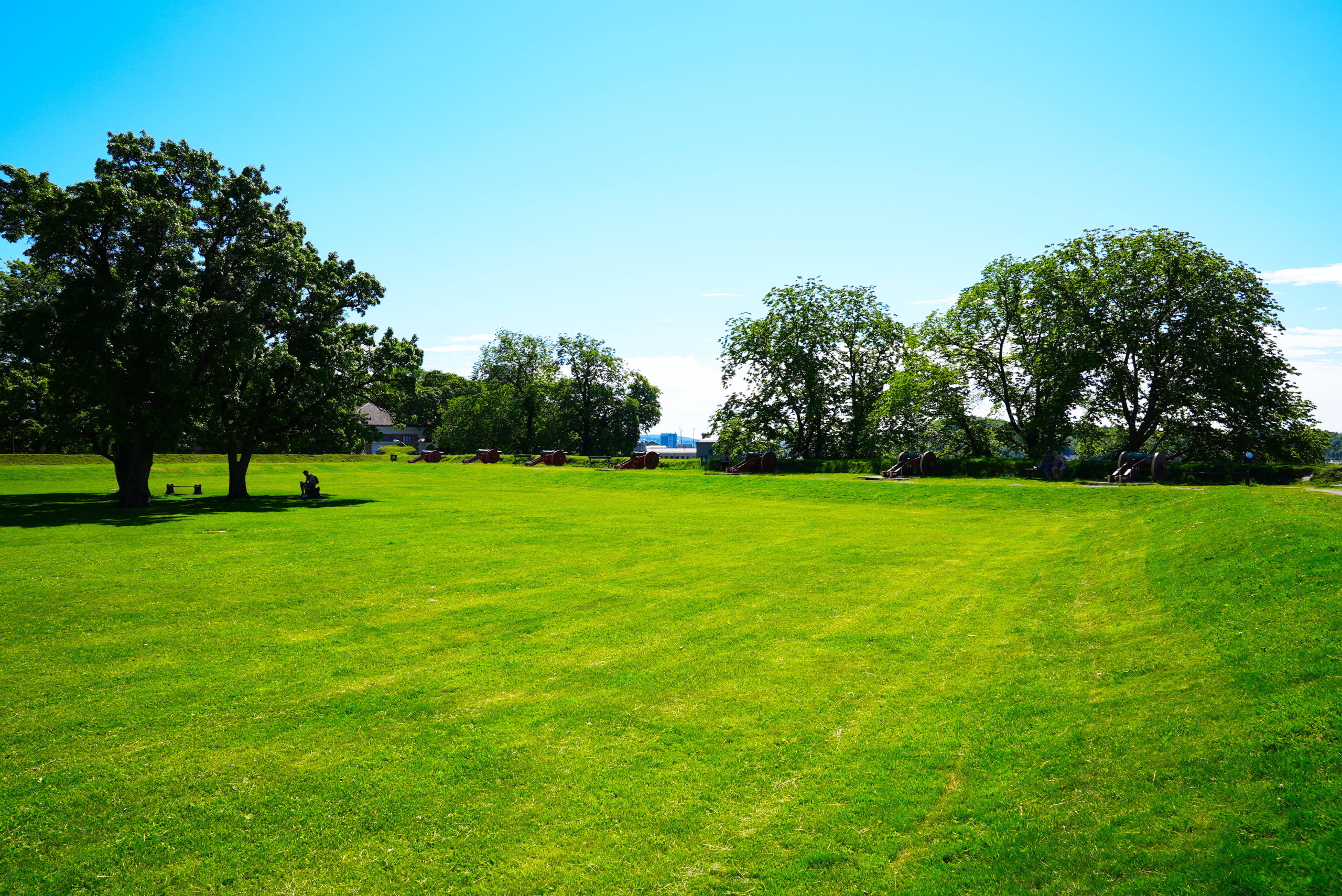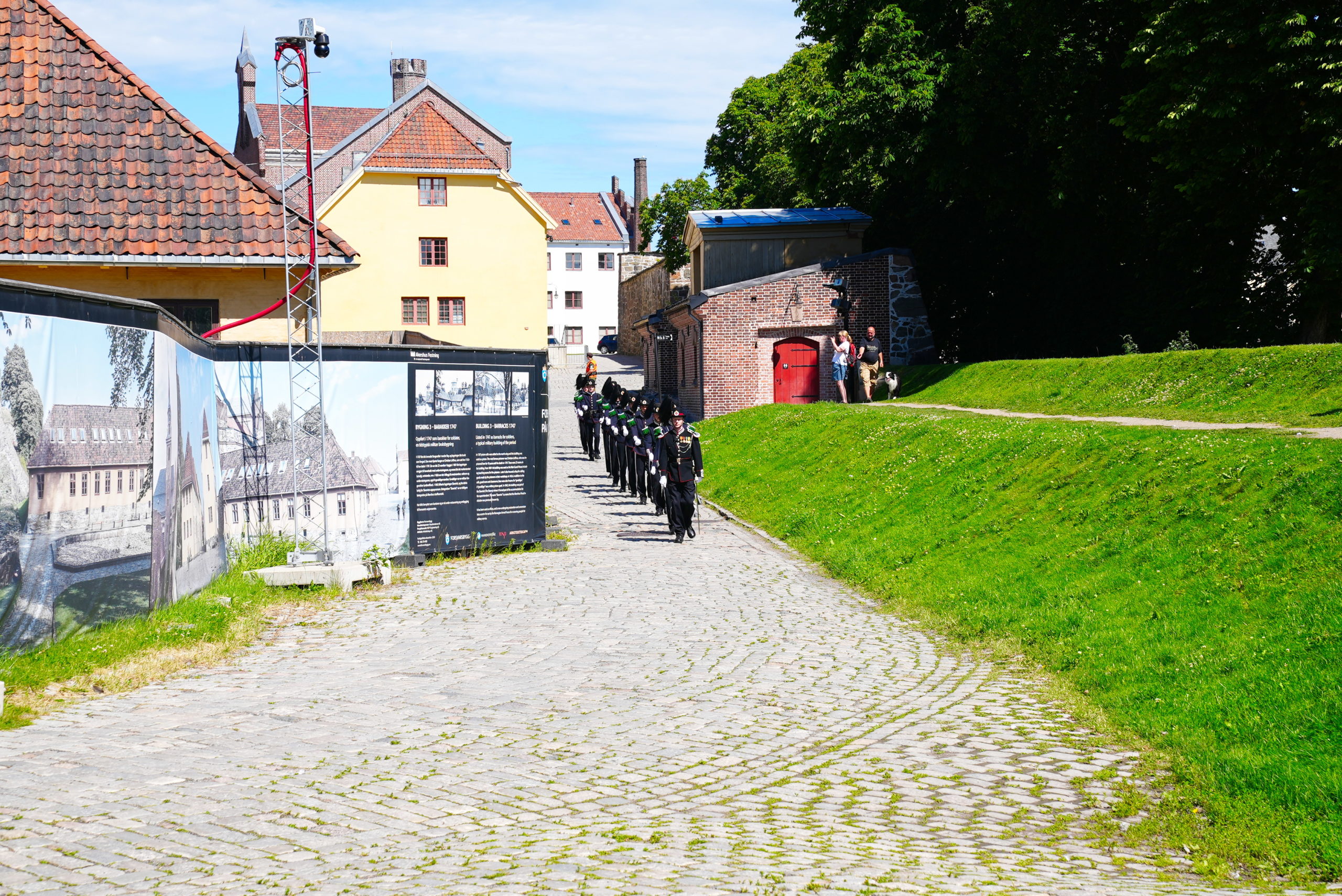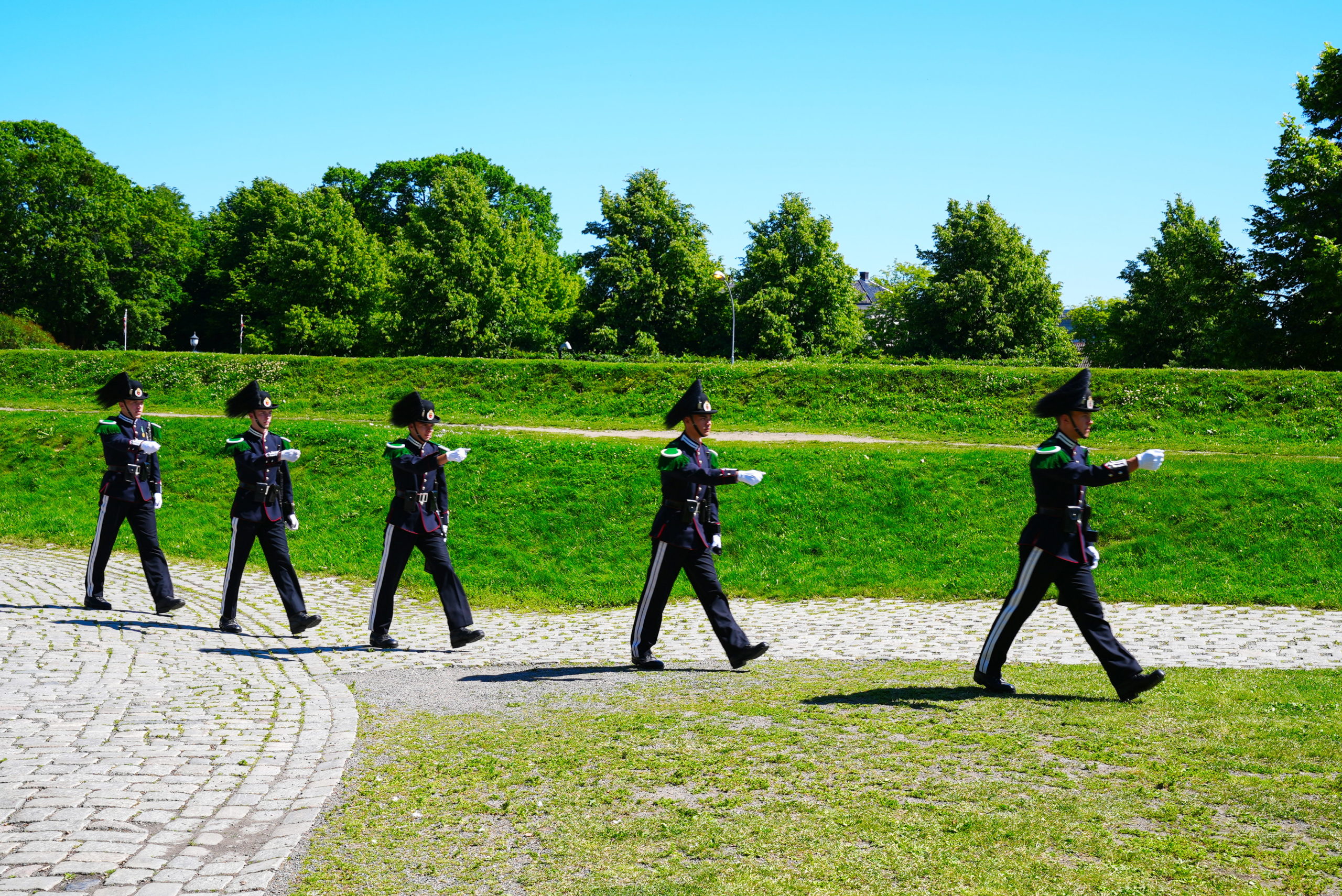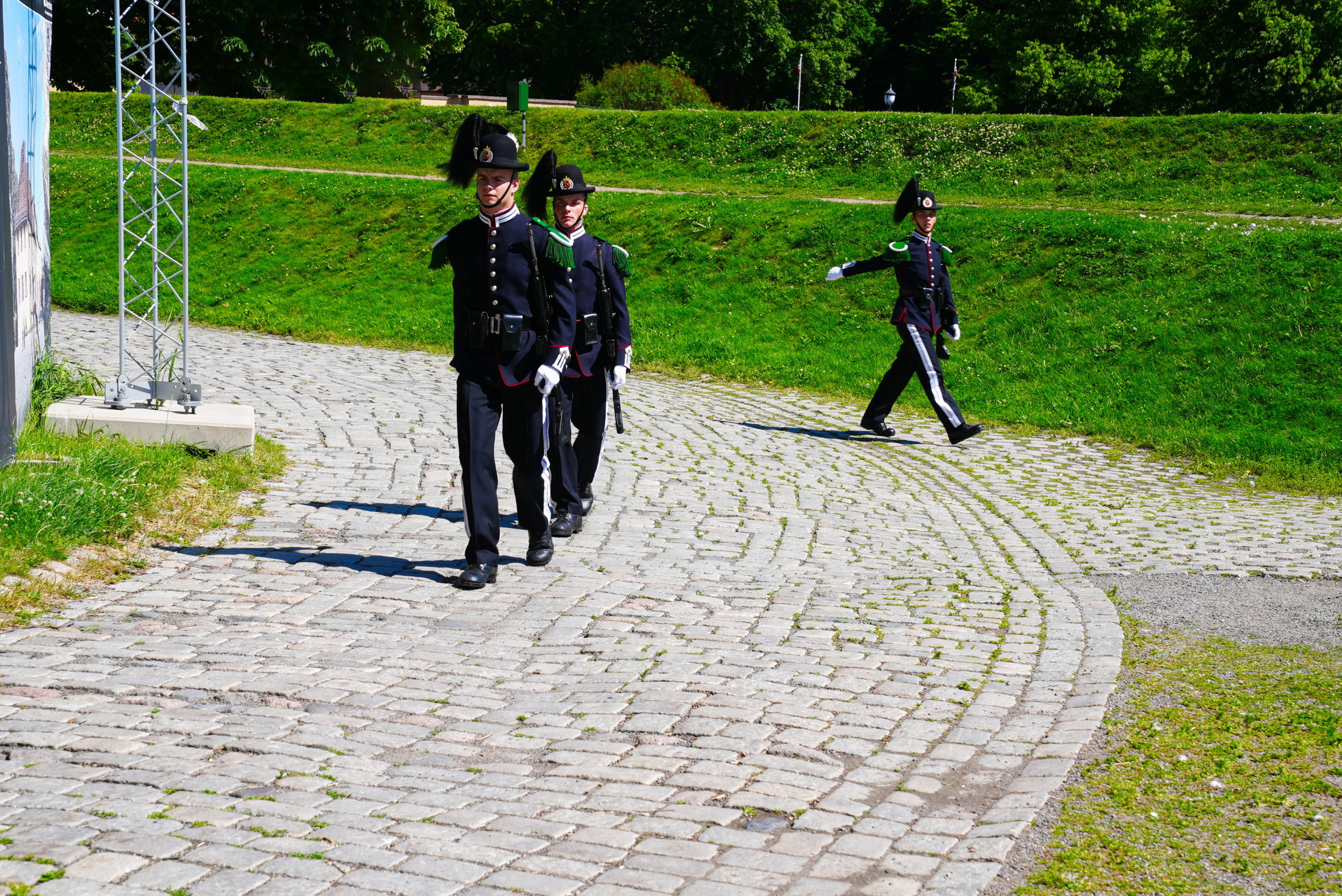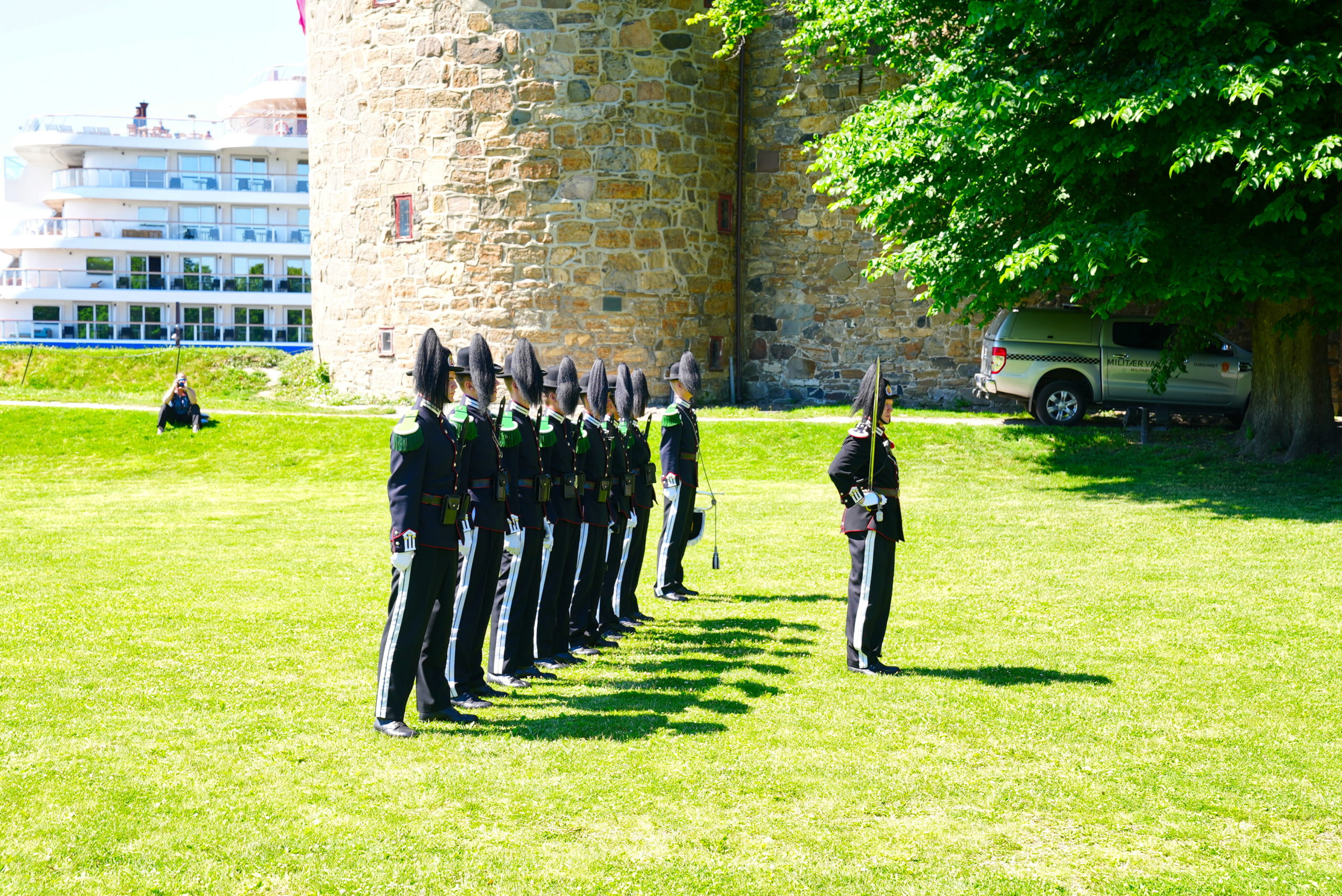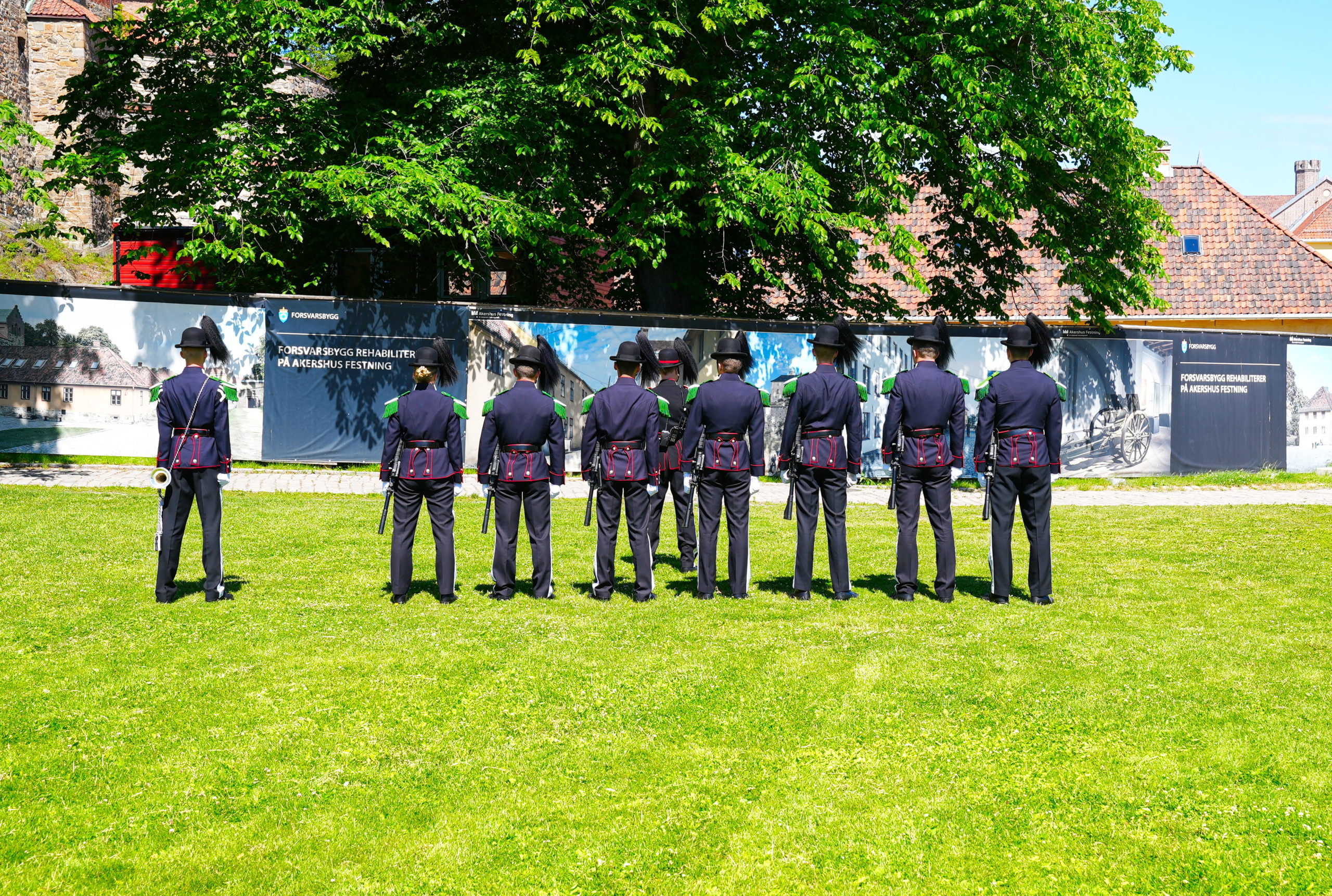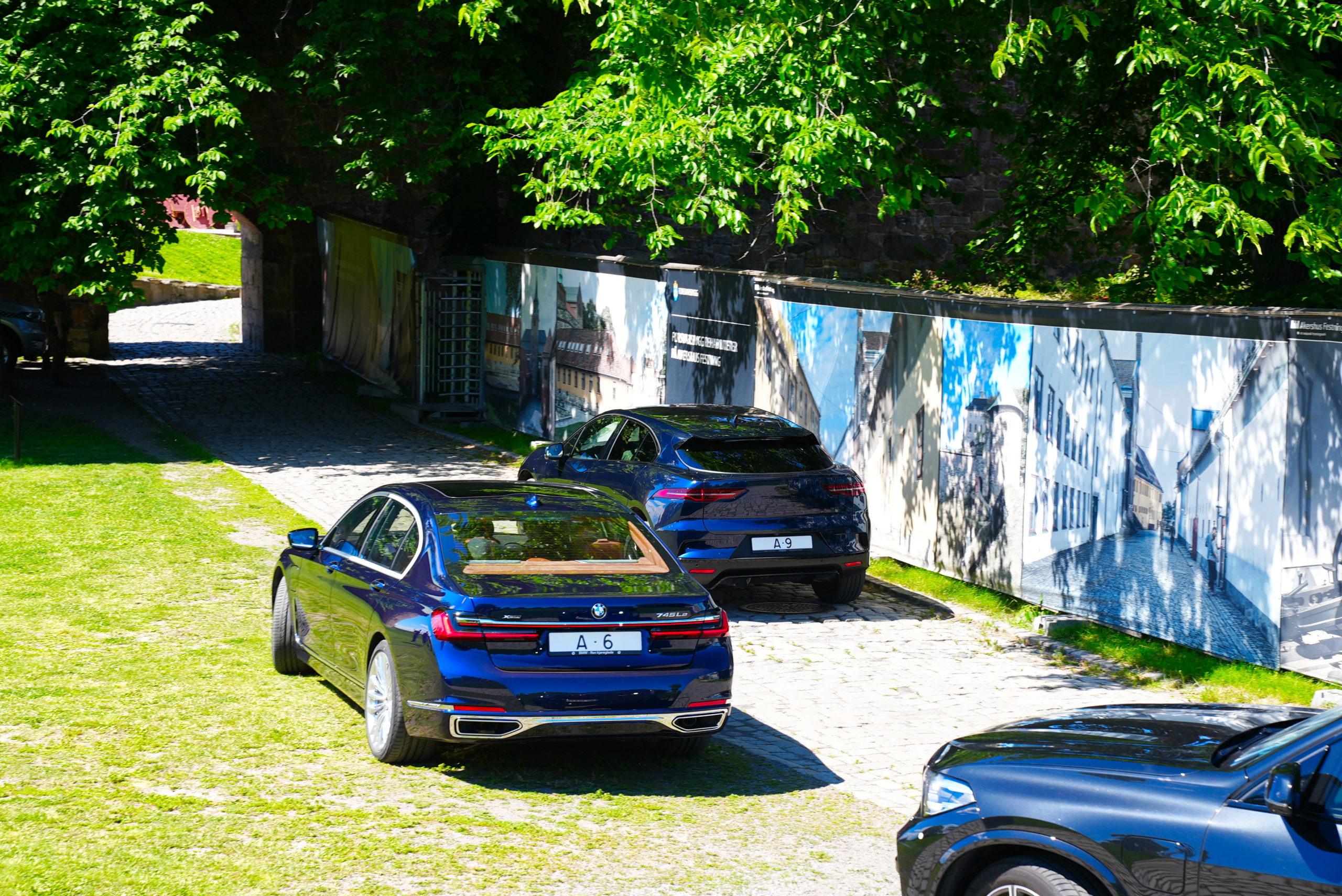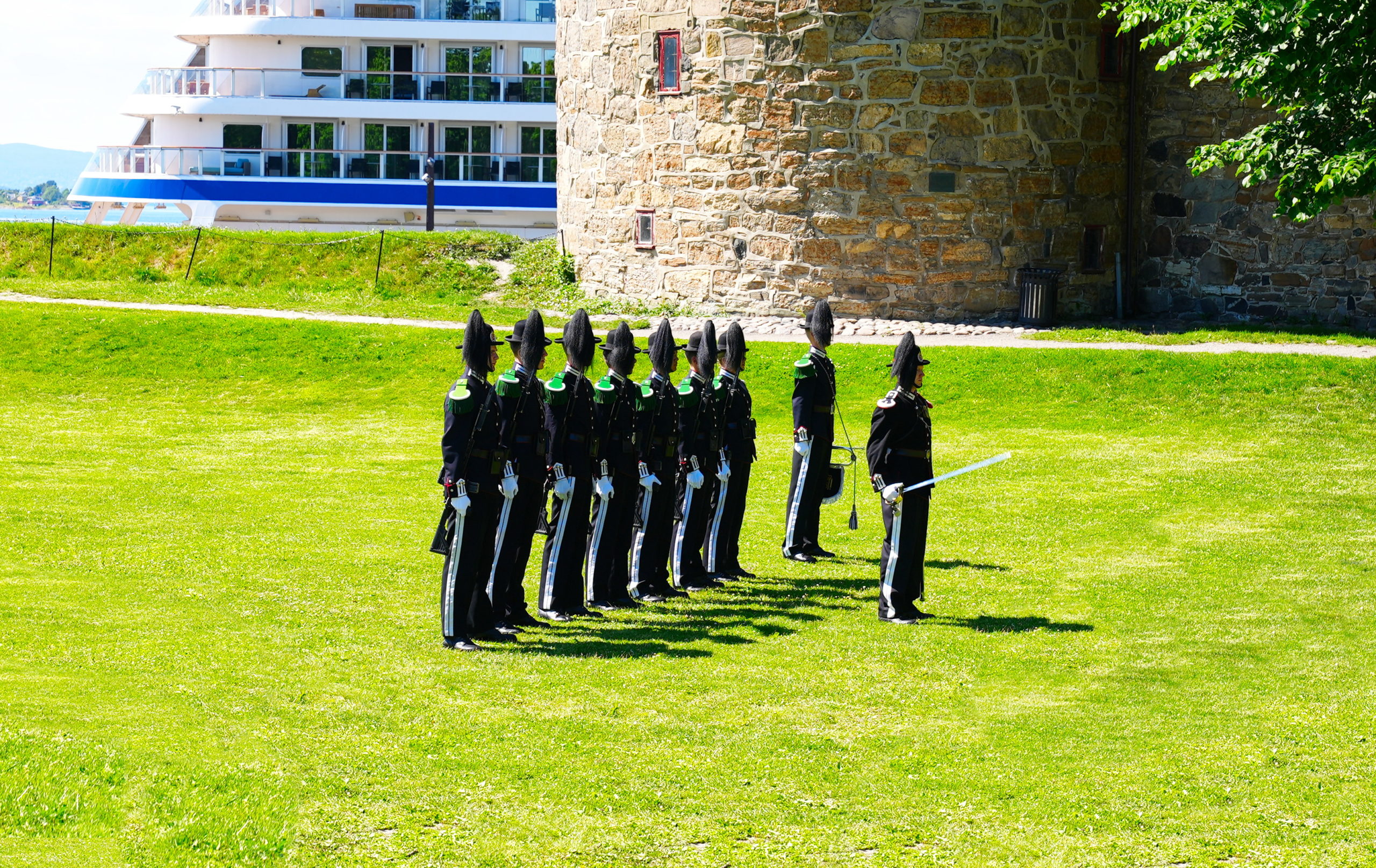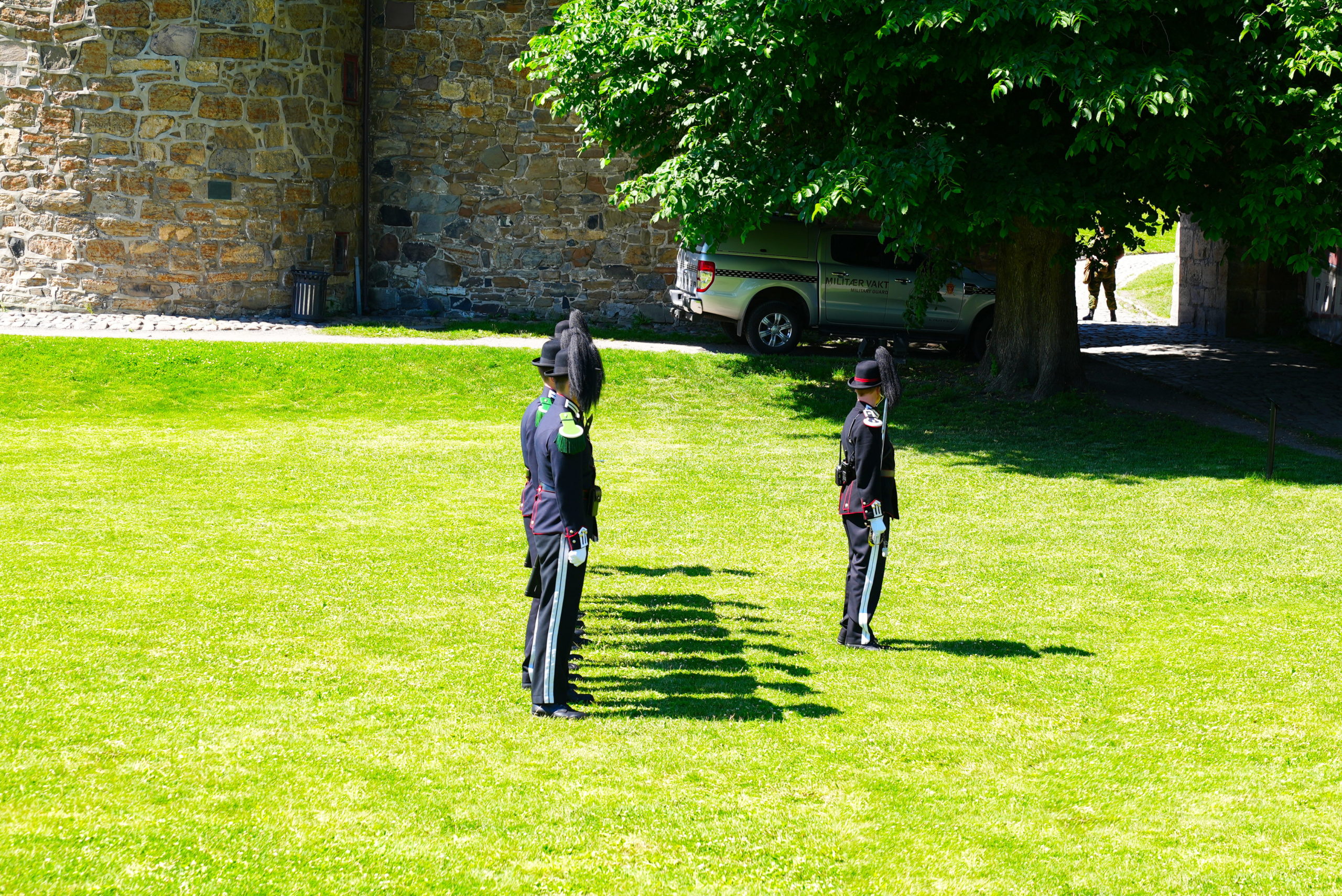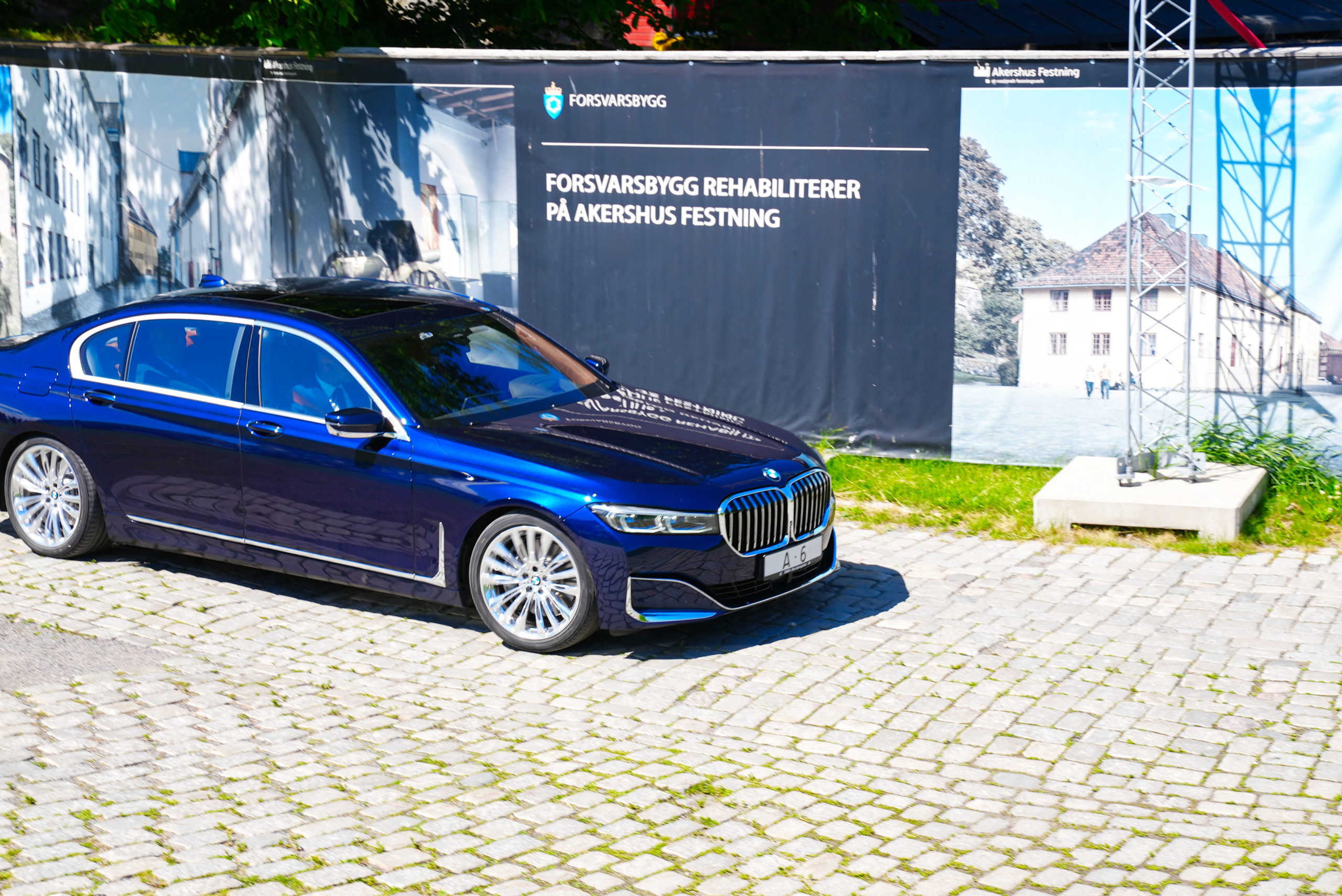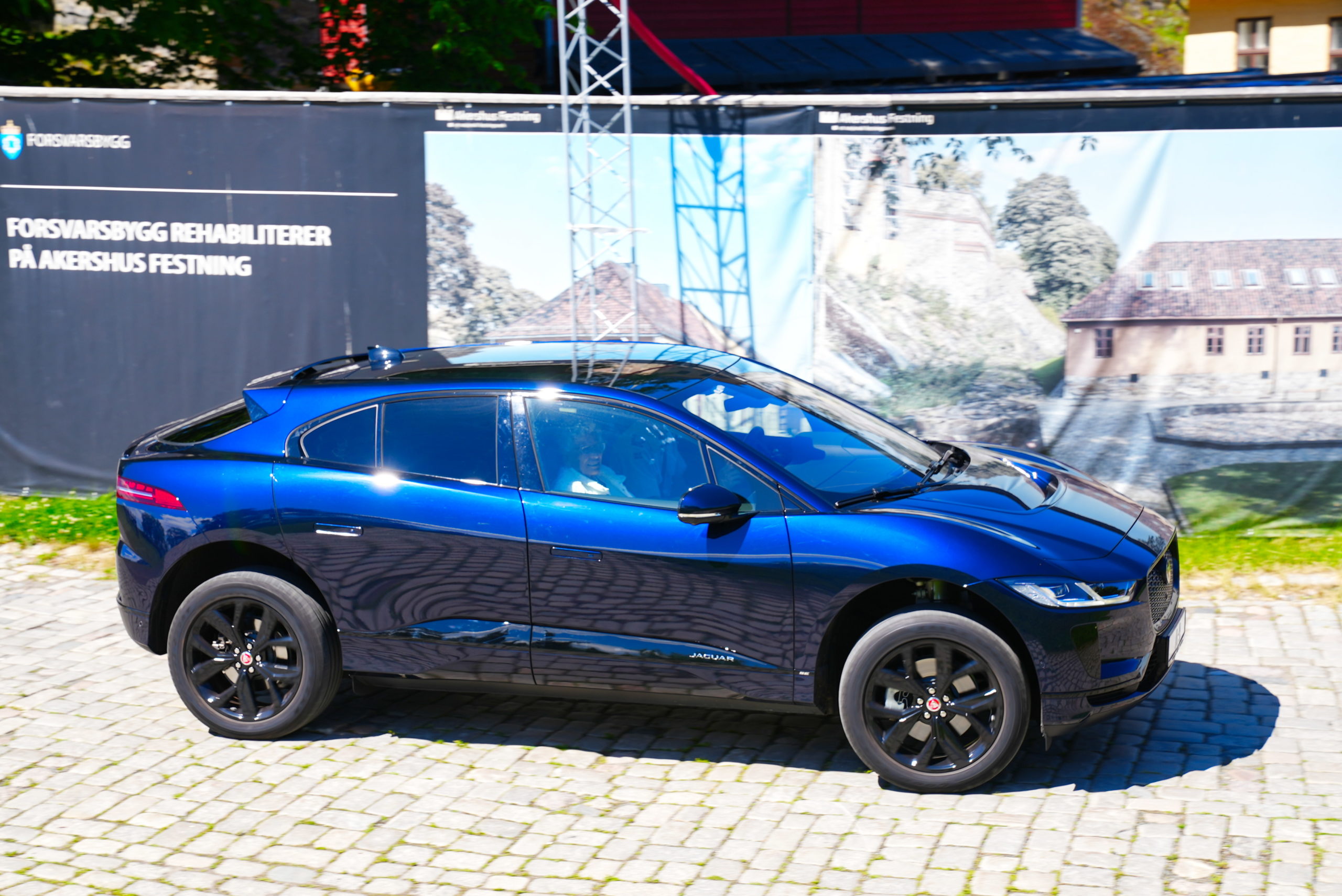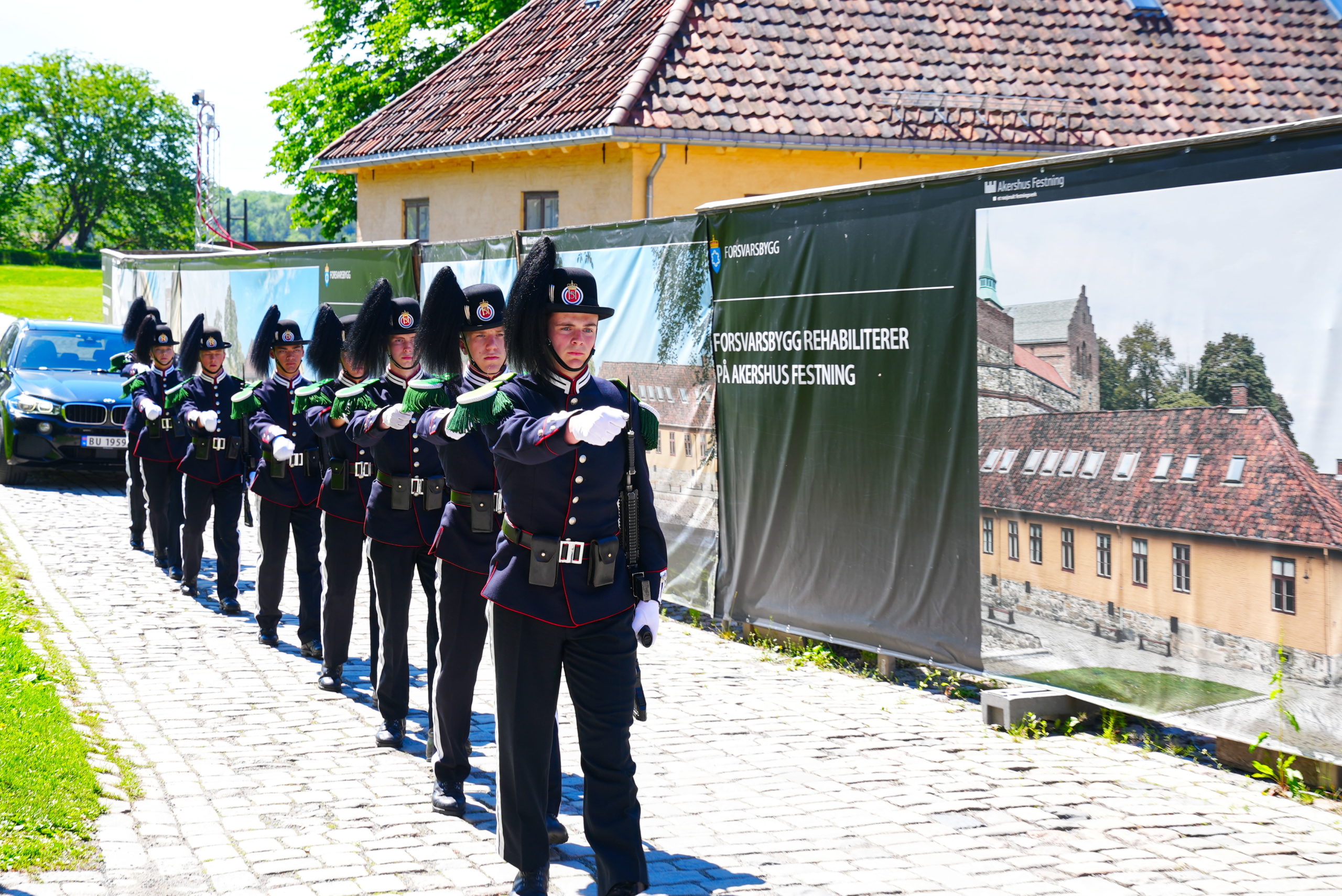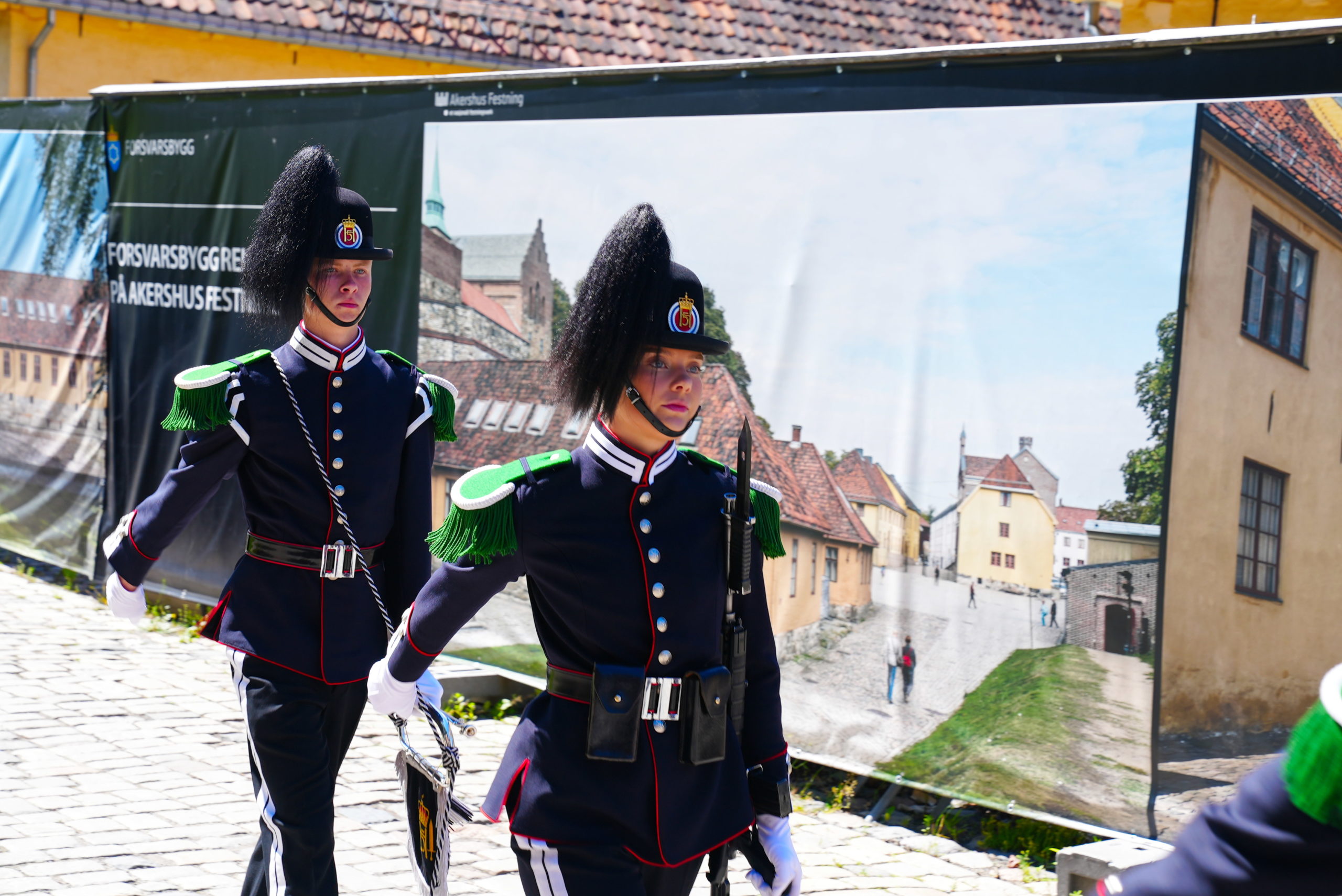Our adventures in Oslo, Norway continue!
As you may recall, we were staying in an Airbnb near Nedra Foss Park. Well, we moved, and are now staying at the fabulous Karl Johan Hotel, “the best location in Oslo.”
The hotel really does have an interesting past and, indeed, is situated very central to all the cool stuff in Oslo. However, we did not select it for those reasons. Rather, we selected it because it has a 650 sq. foot suite, which is HUGE by Scandinavian standards. It has one tiny closet, which is normal here, and extra, useless tables. Still, it feels like luxury compared to other places we’ve been.
That’s me, in the topmost window on the corner. Hi!
Det kongelige slott
If we step out of our hotel and look down the street, we can see det Kongelige slott.
The most important aspect of this photograph is the dearth of vehicular traffic in central Oslo.
This is the view back to where we were in the first photograph. Oslo in summer is pretty nice, eh?
The royal palace is owned by the state and made available to the country’s head of state. It is the residence and workplace for the Royal Family. In the Royal Palace, His Majesty the King holds cabinet meetings, receives audience seekers and holds official dinners. Many foreign heads of state who come to Oslo on state visits stay at the Palace. Most of the employees at the Royal Court have their daily workplace here.
From the other side of the statue, we have an unobstructed view. The place seems to be empty except for that one guy in the little house. He’s probably the one who has the keys to get in.
On the grounds is a statue of Maud of Wales, daughter of King Edward VII (who was the Prince of Wales when she was born, hence “Maud of Wales”) and Queen Alexandra, both of the United Kingdom. She is famous for her impossibly long neck (if this statue is to be believed) and for dying on the 13th anniversary of her mother’s death. Queen Maud fromage (a dessert) is named after her.
The girl, possibly a honey trap for a foreign nation, engages the soldier as he stands in front of his tiny house, guarding Maud of Wales. Will she get any “state secrets” out of him? Will he put the feather of his feather bonnet to good use? The imagination soars with possibilities!
Can you tell where the girl is from? Here’s a tip we learned while traveling in Istanbul: Americans are the only people who wear baseball caps.
Stortinget
Across the street from our hotel is the Stortinget, Norway’s national assembly. It consists of 169 representatives elected from 19 electoral districts. According to Section 49 of the Constitution, the Storting is “the people’s” instrument for exercising legislative power. Storting elections are held every four years. All Norwegian citizens who have turned (or will turn) 18 during the election year have the right to vote. Norway has a parliamentary system, which means that the government is responsible to the Storting.
The word “Stortinget” originates from “allting”, meaning a type of thing, which is Norwegian for “assembly” or “fookmoot.” Stortinget translates to “the Great Thing”, which is not to be confused with the regular Thing.
In front of the Stortinget is the statue of Cecilie Flatval, famous for having incurable breast cancer. “Cecilie Flatval har selv fått påvist uhelbredelig kreft, og går på medisiner for å bremse utviklingen og for å forlenge livet. Krefttypen hennes er per i dag ikke kurerbar.”
Statues
Indeed, Oslo has a wealth of statues.
We notice something odd about these statues…
Yes, they are all famous people who we have never heard of. It makes us realize how much we have to learn about the world.
Shoes
The earliest known shoes are sagebrush bark sandals dating from approximately 7000 or 8000 BC, found in the Fort Rock Cave in the US state of Oregon in 1938. The world’s oldest leather shoe, made from a single piece of cowhide laced with a leather cord along seams at the front and back, was found in the Areni-1 cave complex in Armenia in 2008 and is believed to date to 3500 BC. Ötzi the Iceman’s shoes, dating to 3300 BC, featured brown bearskin bases, deerskin side panels, and a bark-string net, which pulled tight around the foot. The Jotunheimen shoe was discovered in August 2006: archaeologists estimate that this leather shoe was made between 1800 and 1100 BC, making it the oldest article of clothing discovered in Scandinavia.
What’s fun about shoes is that, no matter what they look like, there is someone who sees them and thinks, “Perfect!!”
However, most people in Oslo, and all the places in Scandinavia that we visit, wear sneakers (or tennis shoes or gym shoes, depending on where you live). We conjecture that, if the weather is cold, snowy, and icy most of the year, safety in footwear is paramount.
Occasionally, we spot shoes that are not really practical for Oslo. But not necessarily on someone’s feet.
Notice all the cigarette remains here. This is surprising because we very, very rarely encounter anyone smoking in Scandinavia, and we rarely see trash on the street.
Cuisine
Most Norwegians eat three or four regular meals a day, usually consisting of a cold breakfast (frokost) with coffee, a cold (usually packed) lunch (lunsj) at work and a hot dinner (middag) at home with the family. Depending on the timing of family dinner (and personal habit), some may add a cold meal in the late evening (kvedsmat), typically a simple sandwich.
We were looking forward to indulging in sea food whilst in Scandinavia, but, somehow, the Sports Bar custom of adding a slice of greasy bacon to everything has been added to the local cuisine. Sad.
This is some kind of salad. Doesn’t it look good? We don’t know what the light-colored food is.
There was no indication that this meat and cheese plate was going to have so much food, nor that the meat would be mostly fat. We leave more behind that we eat.
See, the problem is that we also ordered clams, not understanding that the clams, too, would be enough for a family of four.
Beer in Norway has a long history, harking back to the pre-Christian era, when beer was a central element in all religious and social gatherings of any importance. The farmers brewed from their own grain, and most larger farms had a separate building used for drying both grain and malts. Home brewing in Norway is common and divided in two separate traditions: the mostly city-based, modern home brewing of styles familiar from the rest of the world, and in remote rural regions, farmhouse brewers brewing the same styles their parents and grand-parents brewed. These are styles that don’t exist elsewhere.
Beaches
It makes sense that, with warm, sunny days being a rarity, people of Oslo would turn any area into a beach.
Popular media led us to believe that nudity, or at least partial nudity, would be common in Norway. Nope. It’s more conservative than California beaches, which are pretty conservative.
It appears that the locals simply commandeer any piece of grass to use as a makeshift sunning spot. Or, in this case, fingernail painting spot.
Then there are the folks who say, “Let’s head down to the gravel for some fun and sun.” Well, good for them.
And if grass and gravel isn’t your thing, you can sit on wooden stairs.
You would think they would have at least one girl, right? Oh, well. Maybe that’s not their thing….
We live in San Diego, California, and when we go to the beach, we frequently have a contest to find the ugliest tattoo. We used to have a Men’s division and Women’s division, because, with the naval base here, the men tended to dominate the competition. But our lovely ladies, god bless them, have stepped up and inked themselves in equally horrid manners. Frequently, our contest results in a multi-way tie.
Notice, from these photographs, that such “art” has not yet found an audience in Oslo.
The Norwegians have rules, but they are polite rules.
Tjuvholmen Skulpturpark er en samling skulpturer fra noen av verdens fremste samtidskunstnere, rammet inn av gammel kai og ny arkitektur.
I think the one on the right looks like a long poo being poo’ed, but I’m juvenile. 😀
So, what do people do when they actually want to do something?
They jump.
And that’s about all they do. No one swims laps or just lingers. The water temperature in summer is in the mid-60s, which might explain it.
Carmen
Situated in Oslo is the Oslo Opera House, home of the Norwegian National Opera and Ballet, and the national opera theatre in Norway.
The angled exterior surfaces of the building are covered with marble from Carrara, Italy and white granite and make it appear to rise from the water. It is the largest cultural building constructed in Norway since Nidarosdomen was completed circa 1300.
Notice the sculpture in the water?
Yes, the Opera house is across from the Munch Museum.
Imagine how much fun this would be if you were five years old and had a sled in winter!
Remember, however, that the tiles end as a boat ramp into the sea… 🙄
Okay, but we are here to see Carmen!
Carmen is an opera written in the genre of opéra comique with musical numbers separated by dialogue. It is set in southern Spain and tells the story of the downfall of Don José, a naïve soldier who is seduced by the wiles of the fiery gypsy Carmen. José abandons his childhood sweetheart and deserts from his military duties, yet loses Carmen’s love to the glamorous torero Escamillo, after which José kills her in a jealous rage. The depictions of proletarian life, immorality, and lawlessness, and the tragic death of the main character on stage, broke new ground in French opera and were highly controversial.
Although we have seen dance numbers, particularly ballet, performed to Habanera and the Toreador Song, we have never seen the opera itself. So here we are!
In his production, Calixto Bieito reduces Bizet’s masterwork to what he sees as the essence: A story of people living at the margins of society. Yes, it has cars on stage. Lots of cars.
Of course, we don’t take photographs during the show, but we do for the bow.
After the performance, we see a picture-perfect evening sky, and take a perfect picture of it.
Akershus Festning
Akershus Castle and Fortress (often just Akershus Fortress) is one of the most significant fortresses in Norwegian history. It was originally built at the end of the 13th century as a medieval royal castle with a seat for the king’s representatives, strategically located on Akersneset in Oslo. In the 17th century, it was rebuilt into a Renaissance castle surrounded by a bastion fortress. The over 700-year-old castle has survived several sieges, but has never been taken by force by a hostile, foreign army. It was first closed down as a military facility in 1815, but re-established in the period 1820–1850. It finally went out of operational military use in the period 1850–1900 and then became a military headquarters, school, depot, and settlement area. Parts of the facility were also used as a prison and penal institution from 1820 and in the 19th century was the strictest prison in Norway.
The fortress has successfully survived all sieges, primarily by Swedish forces, including those by forces led by Charles XII in 1716. However, it surrendered without combat to Nazi Germany in 1940 when the Norwegian government evacuated the capital in the face of the unprovoked German assault on Denmark and Norway (see Operation Weserübung).
After the war, eight Norwegian traitors who had been tried for war crimes and sentenced to death were executed at the fortress. Among those executed were Vidkun Quisling, whose name has become a byword for “collaborator” or “traitor” in several languages.
Akershus has also been a prison, with a section of it known as The Slavery because the prisoners could be rented out for work in the city.
Yup, they built this to keep people both in and out.
Although still a military area, the fortress is open to the public, and has a less troublesome side to it.
We hear music, and stumble upon the Karpedammen Festival.
“Karpedammen festival er et samarbeid mellom Stiftelsen Akershus festning for Kunst og Kultur, Aftenposten A-kortet, Jazzmusic.no og Steinway Pianogallery Oslo.”
Although this is a private event, there is just a fence between us and the performers, and we are treated to “The Met with a Twist”, “well-known and beloved highlights from the opera repertoire”.
It is none other than Caroline Wettergreen, world famous opera singer, accompanied by Reza Aghamir on the piano (also wearing sneakers).
We climb the hill behind the stage and take a photograph of the audience, and intimate group of less than 100 people, listening to opera on a sunny summer’s day in Oslo.
And that’s how they do it in more civilized countries.
We continue to walk the grounds, and notice that there are white bits of fluff floating down from the heavens.
In fact, there is A LOT of feathery bits of…pollen (?) falling from the sky.
In fact, birch, alder (shown here), and hazel are prolific producers of pollen, and that’s what we are breathing and getting into our eyes.
This photograph looks like a 60s postcard. Cool.
While trying to take pollen photographs, a cloud moves in front of the sun, and the result is this. Also cool.
But let’s see more of the fortress, shall we?
The castle protects the inner Oslofjord. Notice the thin tower in the background? Below and to the left is where the beach (mentioned above) is located.
This is strange to me. The wooden part of the cannon is kept in remarkable good shape, yet they let the cannon itself tarnish. You’d think they could get a soldier to keep them polished.
Notice that the wheels are locked. I suppose this prevents drunken tourists from rolling them off the edge or something.
We wander the grounds. The fortress has many cannons facing the fjord. It must have been quite impressive when they all were being fired, as long as you were on this side of them.
We hear a ruckus and see a bunch of soldier guys coming towards us. We don’t know why. Maybe it is some kind of show for the tourists….?
They march past us, on their way somewhere. Notice how they are marching exactly the same, even as to when their foot touches the ground? They might be carrying invisible swords.
Two of them break off and march directly towards me. They have guns, and there are a lot of them, so I decide not to argue.
See the soldier in the back, with his arm pointing backwards? That’s why the other two soldiers look like they don’t have a right arm.
They line up, and do nothing. An army guy who is not part of these folks tells us we can’t leave the grounds, and we can’t bother the soldiers. Well, no problem. We typically don’t harass folks with firearms.
We don’t know why they have those feathery things on their hats. It might be to keep the flies off their face, but there are no flies here.
Meanwhile, a giant cruise ship passes, like so many low-rent apartments, blotting out the view.
Nothing happens, and I cautiously walk behind them to take another photograph. They ignore me.
And, no, the red stitching is not a trap door.
Cars arrive, slowly passing us, and enter the open archway. The soldiers do nothing but watch.
We notice the unusual license plates. I wonder who you have to sleep with to get those. (Teaser alert.)
The head soldier does stuff with his sword. He’s probably as bored as we are, at this point.
We take a lot of photographs of these fellows, because there is nothing else to do. Like, what are these guys thinking? “I’m a lean, mean, fighting machine, and this is how I spend my afternoon. Damn.” Or maybe, “Well, it’s better than polishing the cannons.”
According to the internet, “The king and queen use a 2016 Audi A8 L Extended (known as A-2) for formal use, and a stretched Mercedes E-Class (Binz Business) (known as A-7) as HM queen’s private limousine. The crown prince and crown princess use a Lexus LS 600h limousine (known as A-8), acquired in early 2008, a BMW 7-series long Hybrid (known as A-6) and a stretched Binz Limousine (known as A-3), the former A-2. The royal family of Norway also uses a 2007 Audi A8, an E65 and an E67 BMW 7 Series, a vintage 1966 Lincoln Continental convertible (A-5), one of stretched Cadillac Deville (Superior Commercial Glass). The BMWs are often driven by the king and queen. The king has a private BMW 7-series Hybrid (C-570) and the queen a 2017 Volvo XC 60 with regular plates.”
If you look closely, the fellow in the back seat is His Majesty King Harald V.
And in the passenger’s seat of this sports car is Her Highness Princess Astrid, daughter of King Olav and Crown Princess Märtha.
And now you know who you have to sleep with to get one of these license plates.
Their duty to King and country successfully discharged, the stoic military machines march with unswerving, ruthless precision, knowing, in their hearts, they would kill us in a moment if so ordered.
Well, except for this one. She’s pretty cute.
But there is more to Oslo than just statues, shoes, food, beaches, and Carmen. In a soon-to-be-published article, we will explore Oslo Stolt Festival!!

